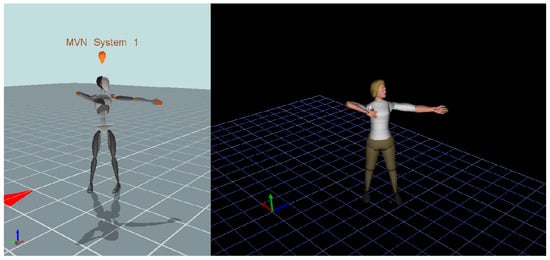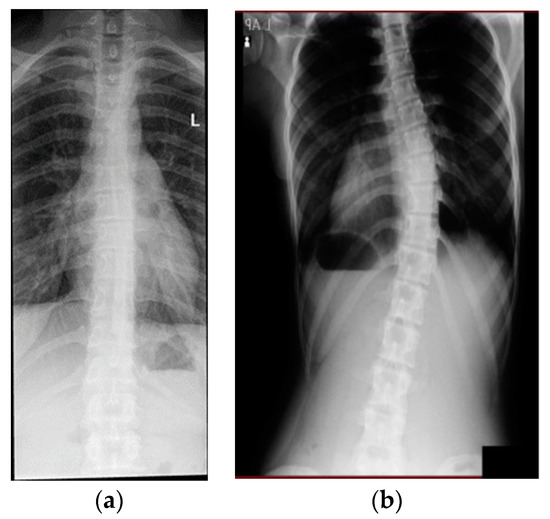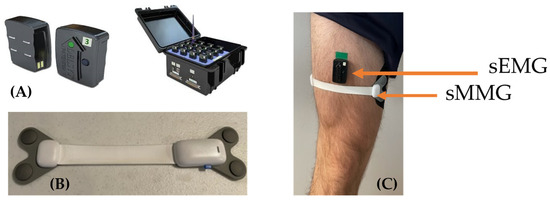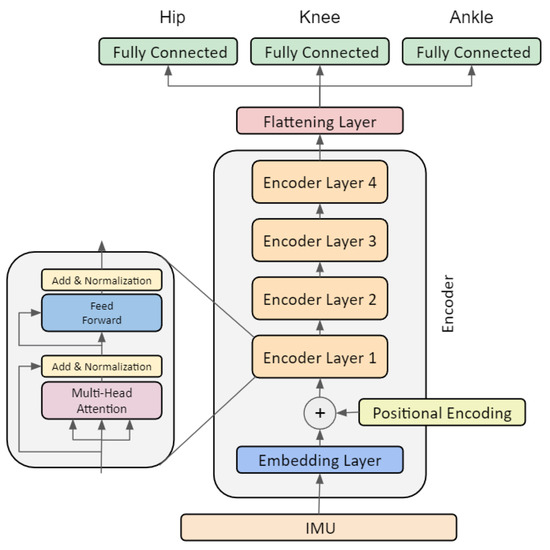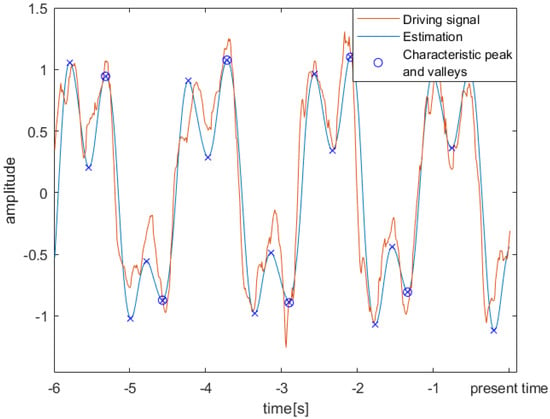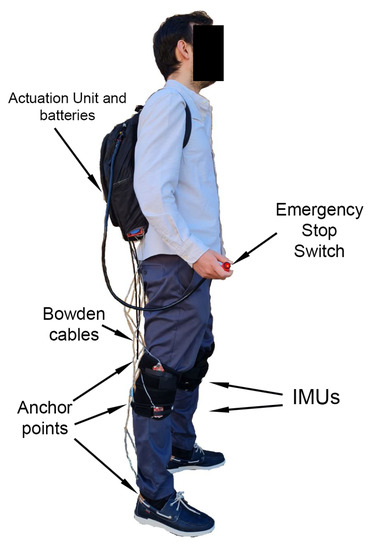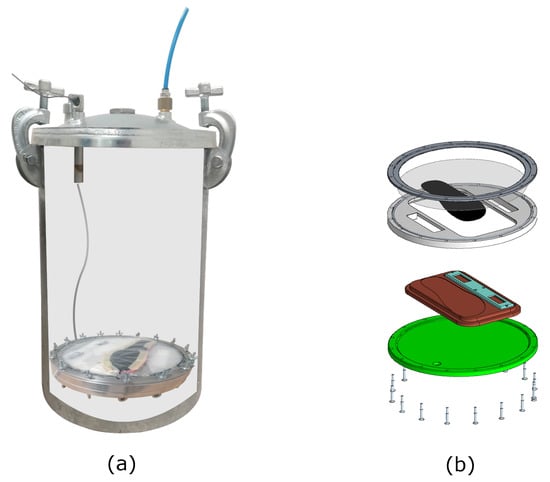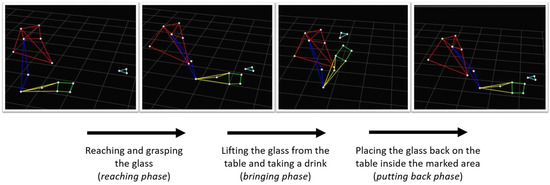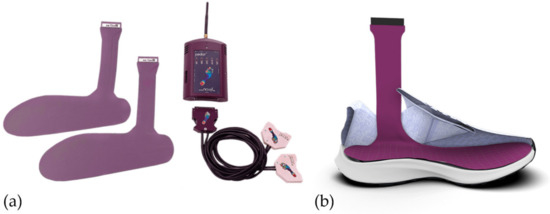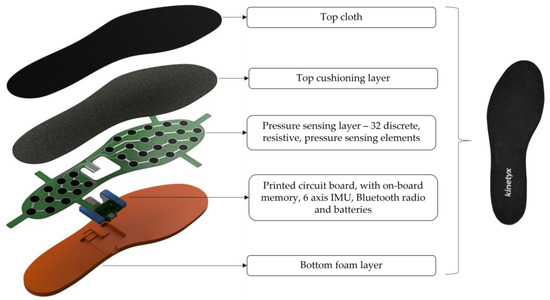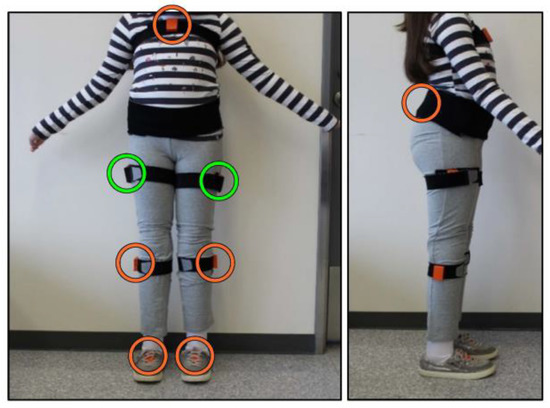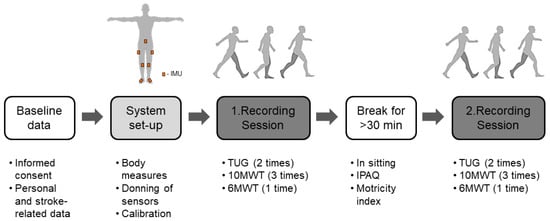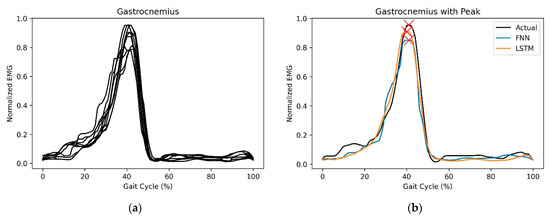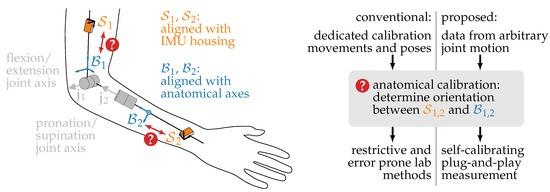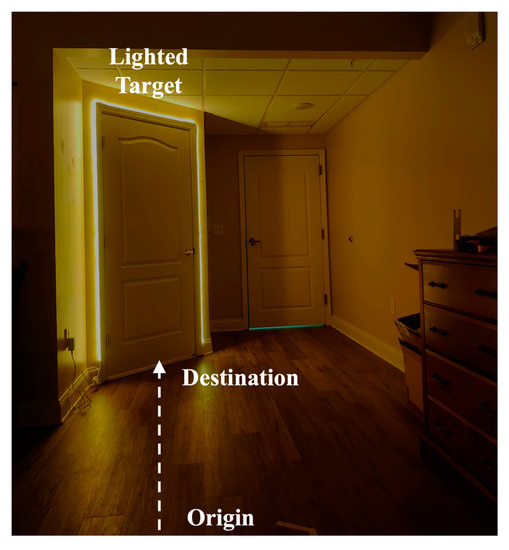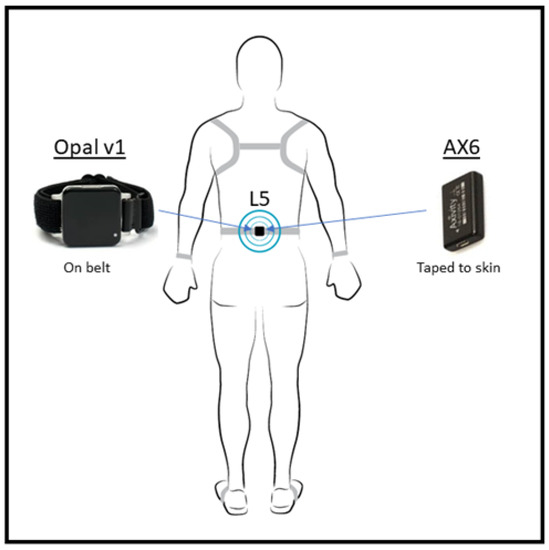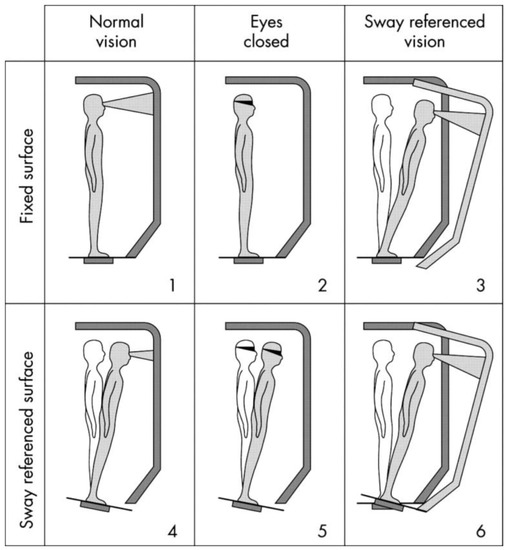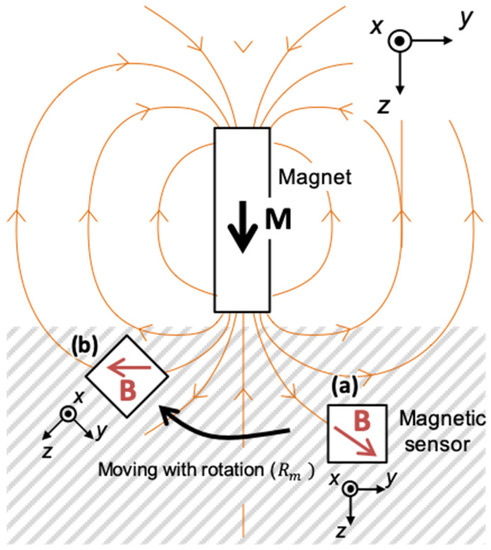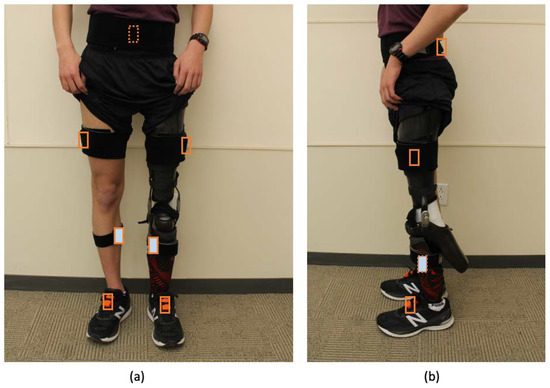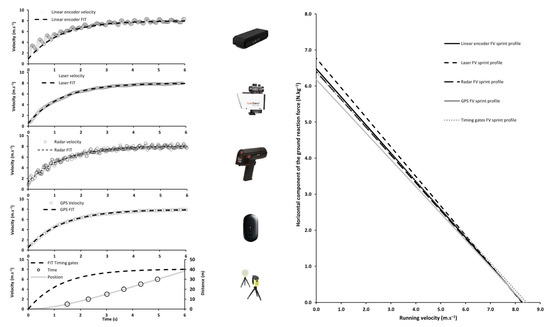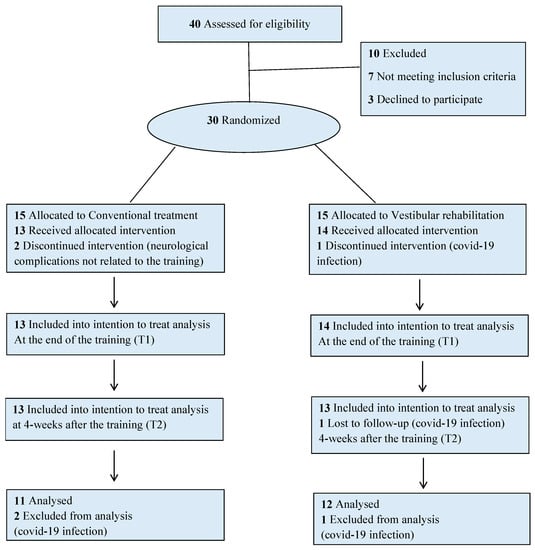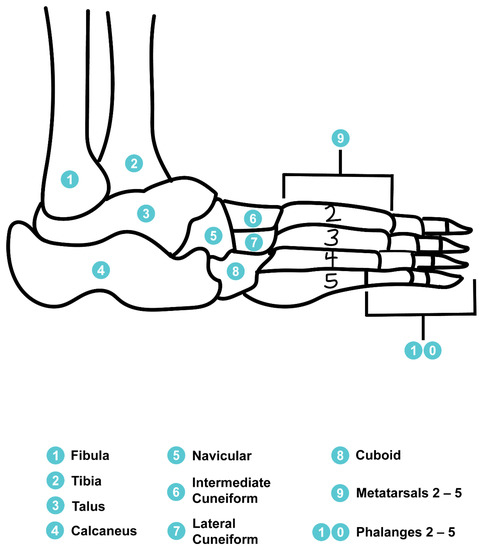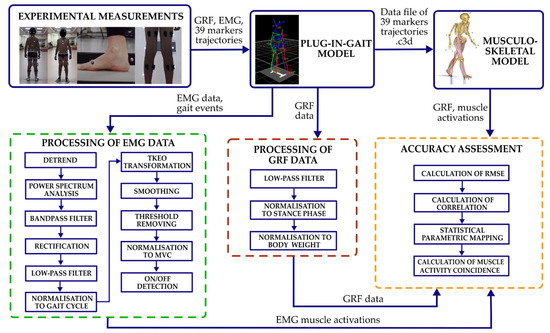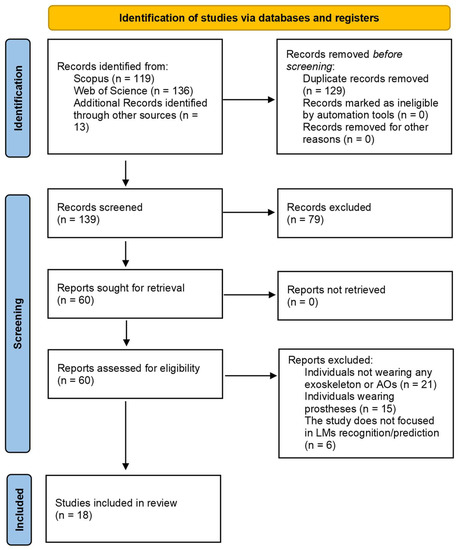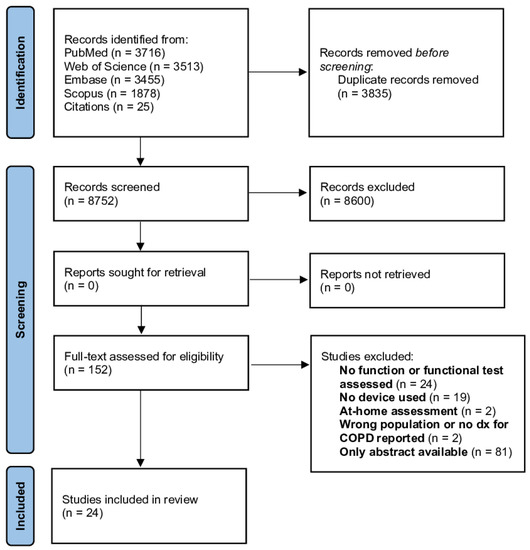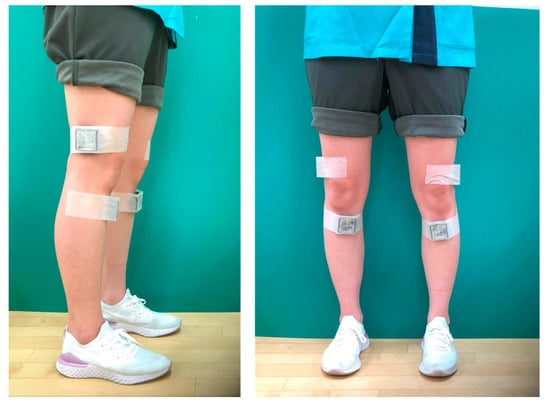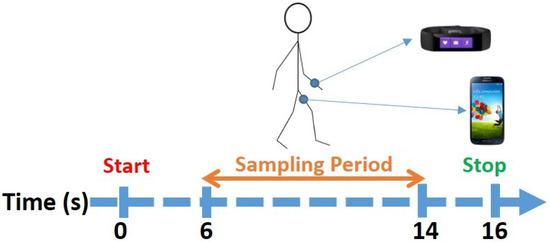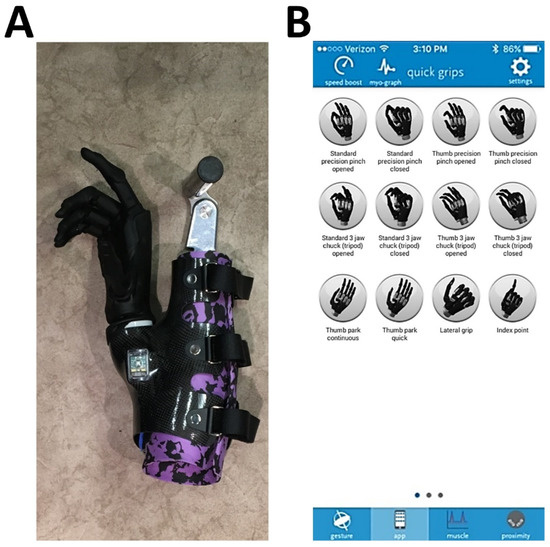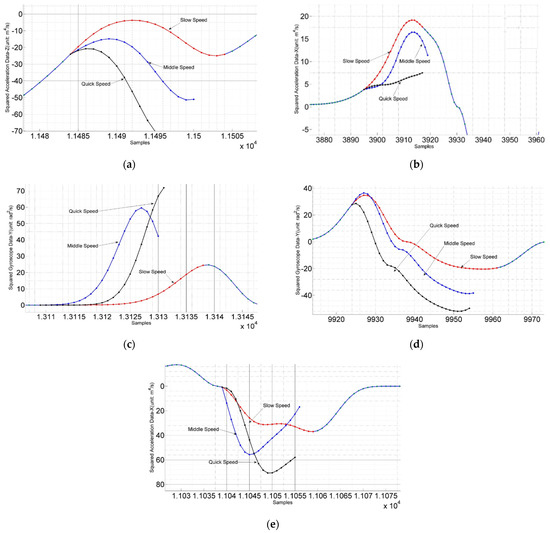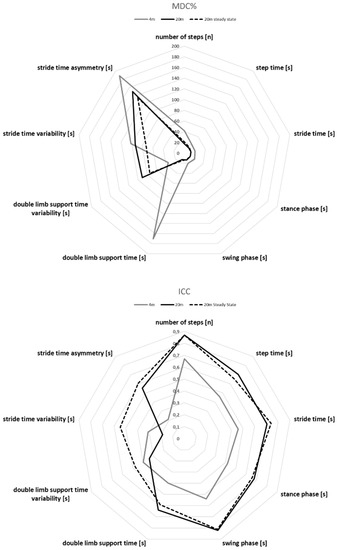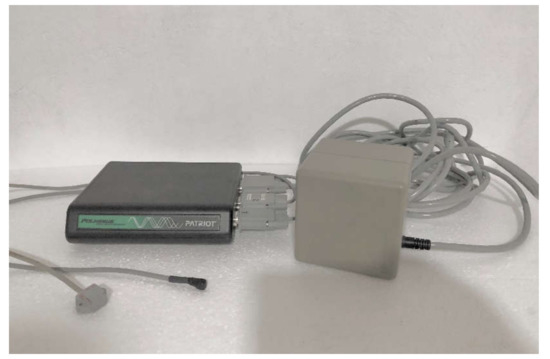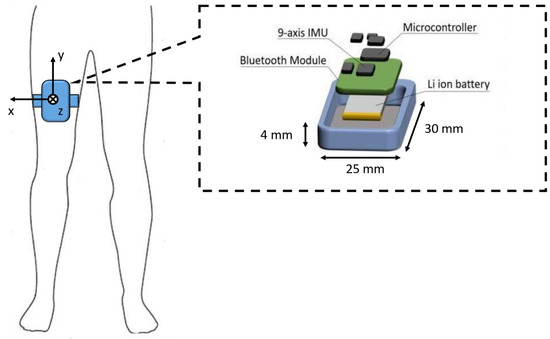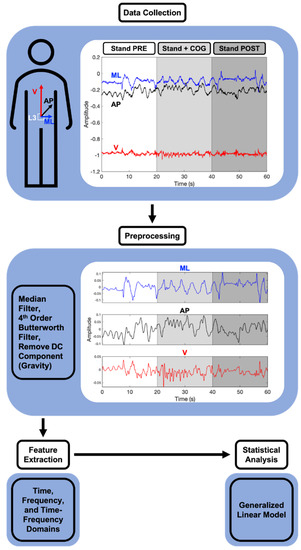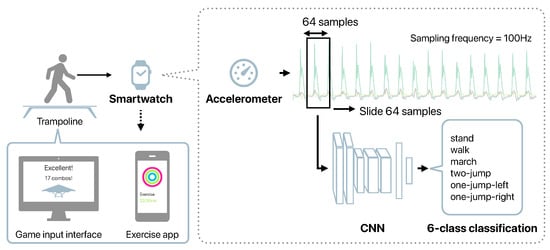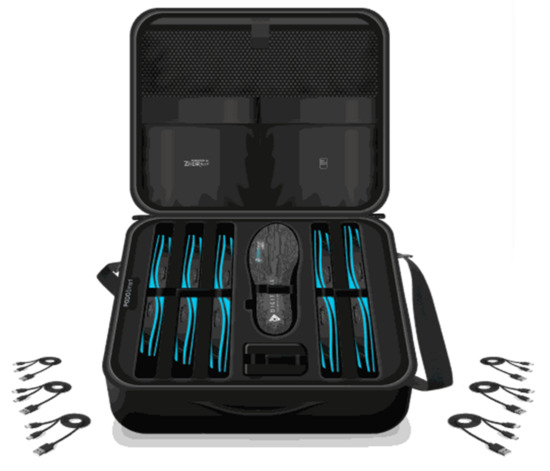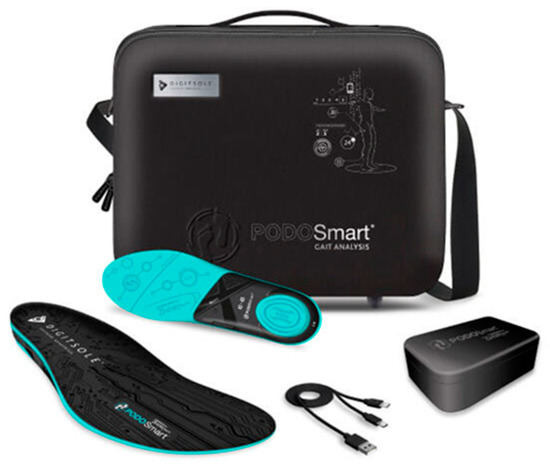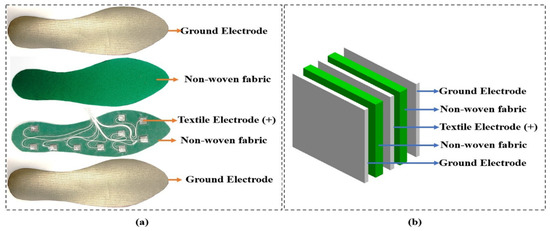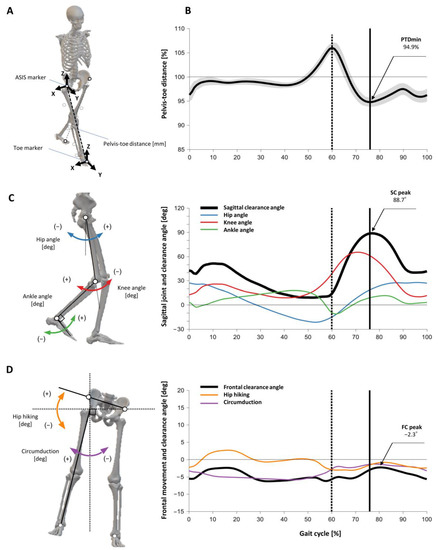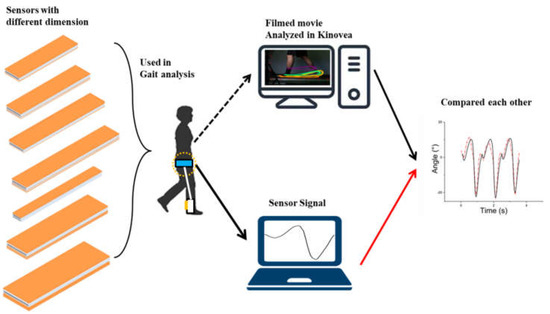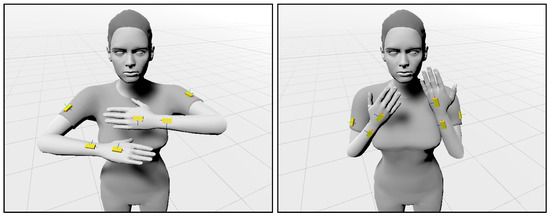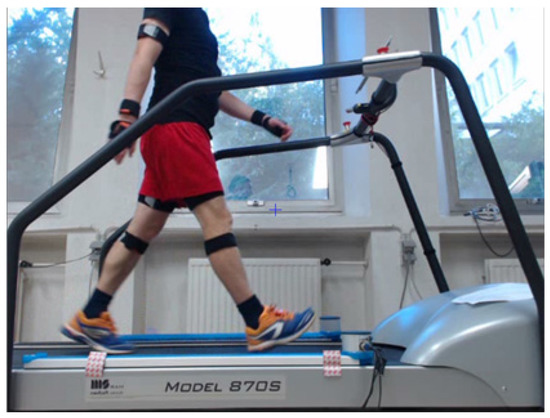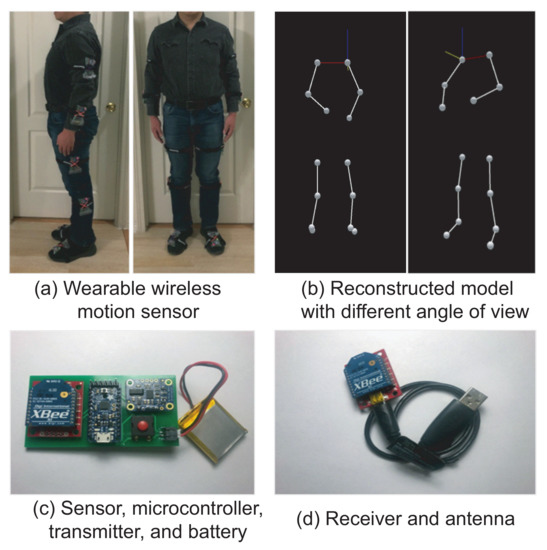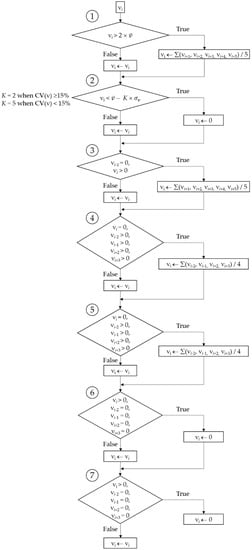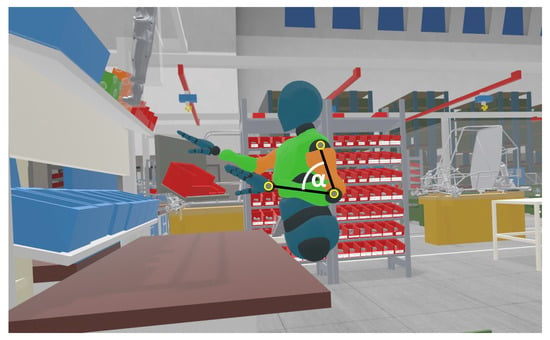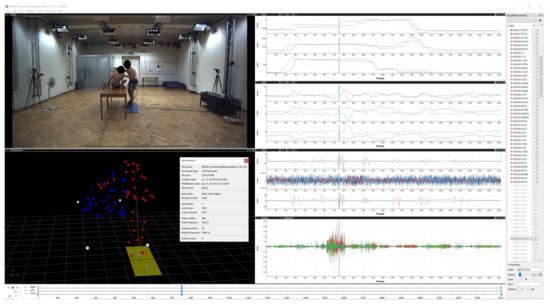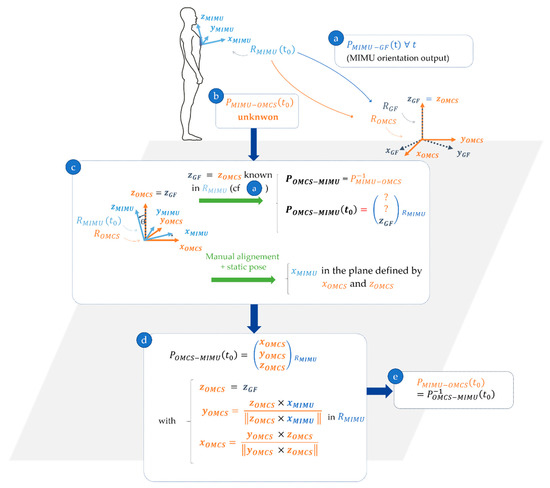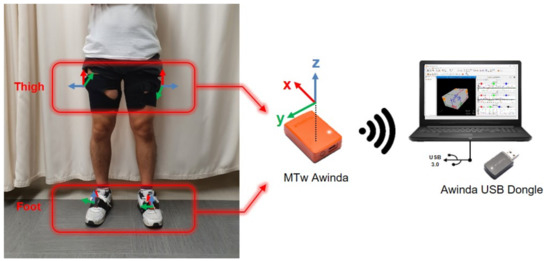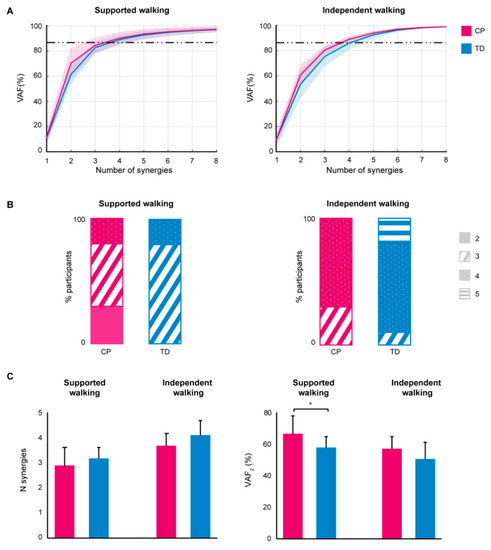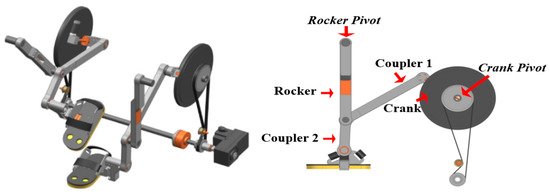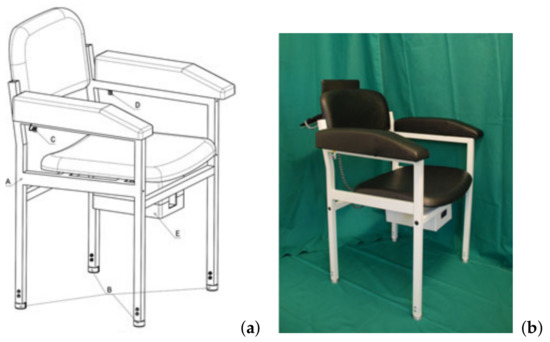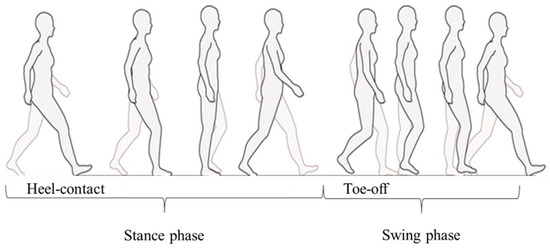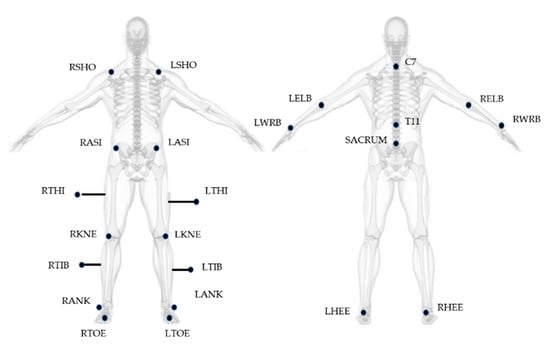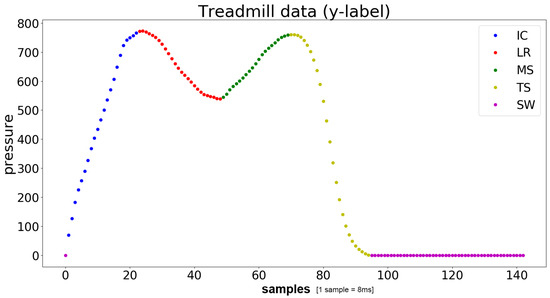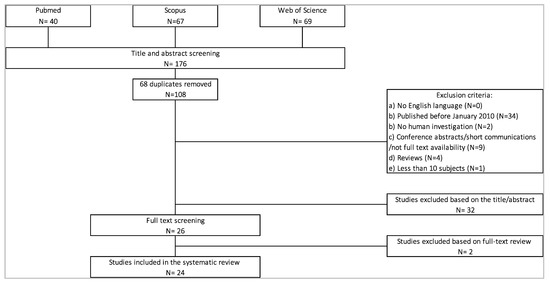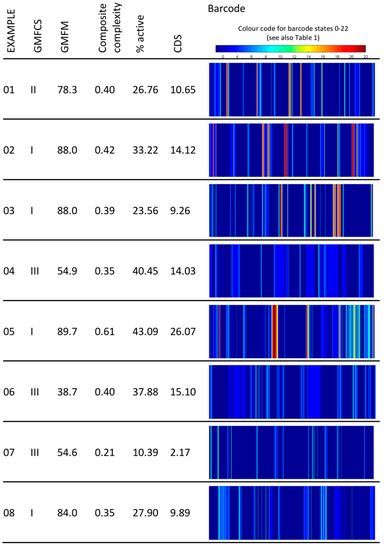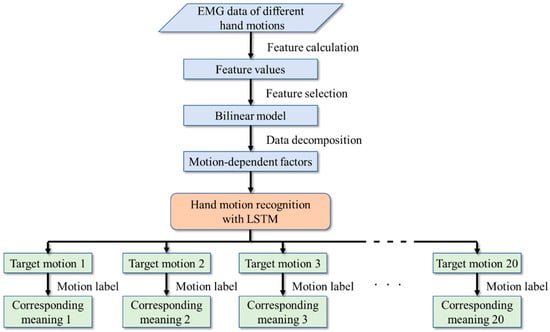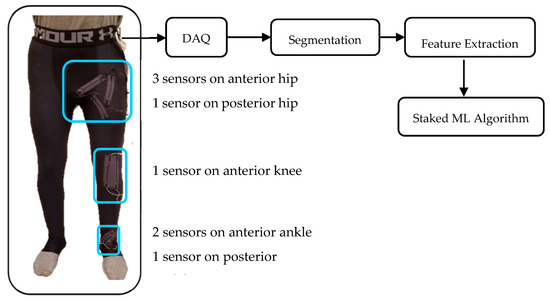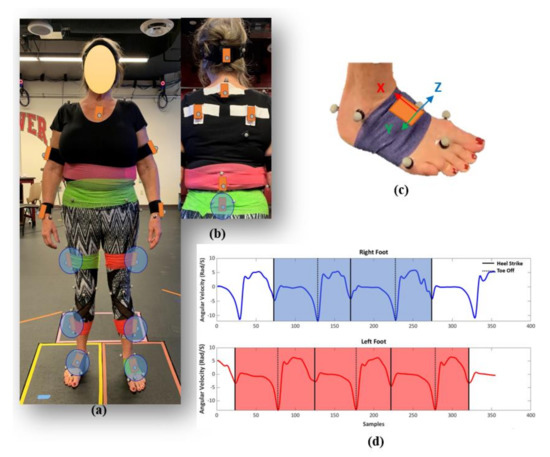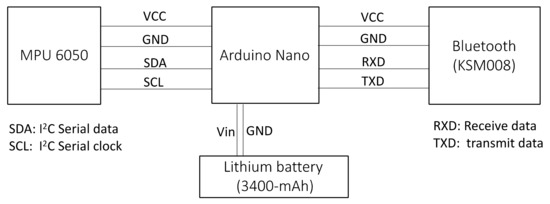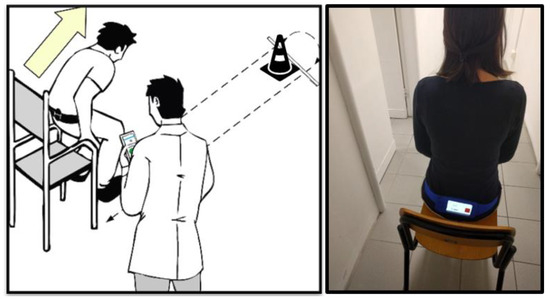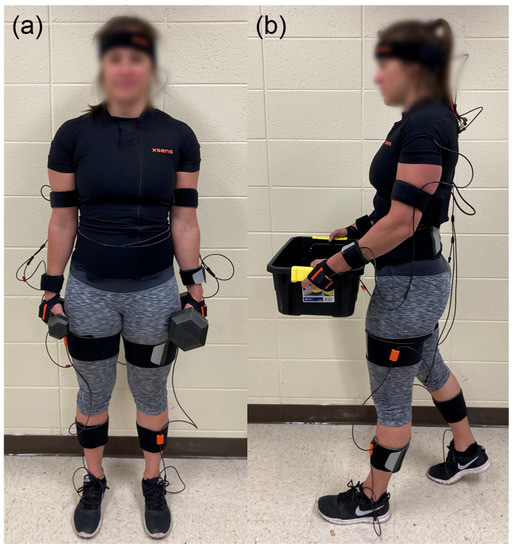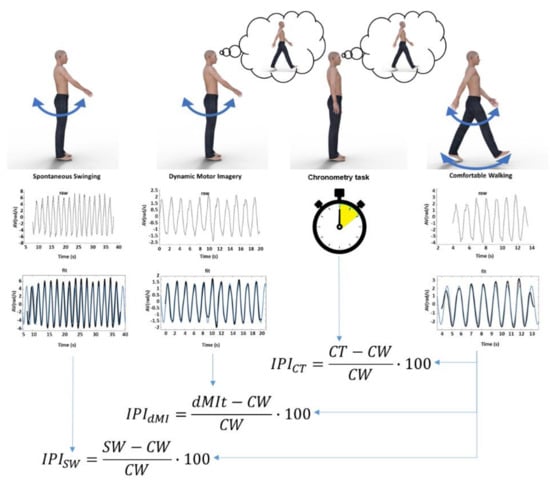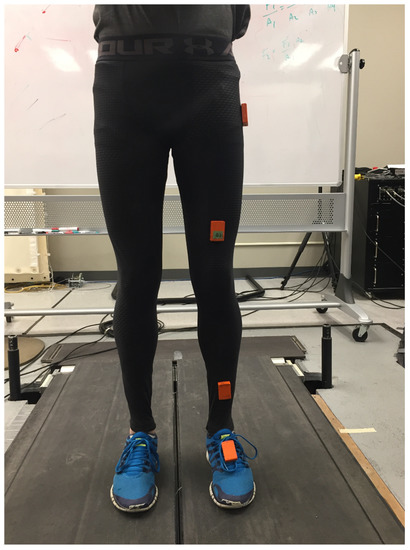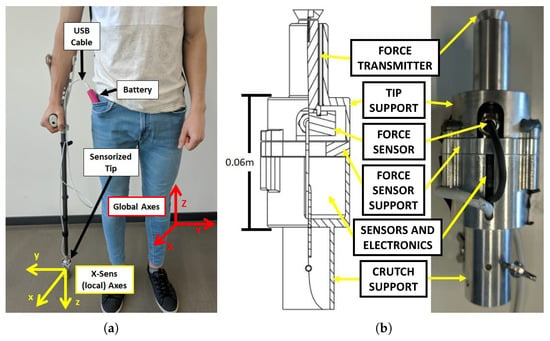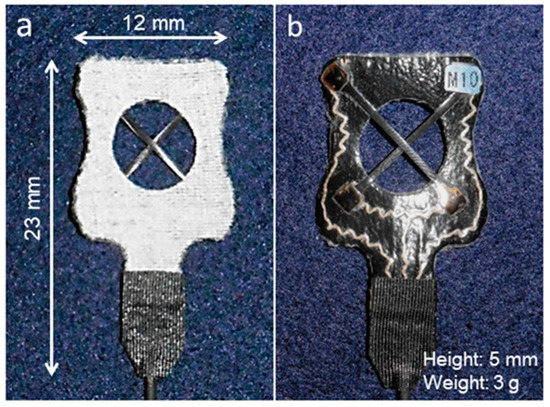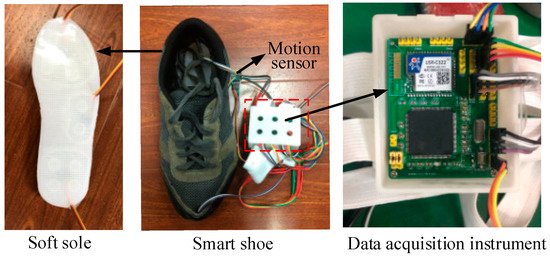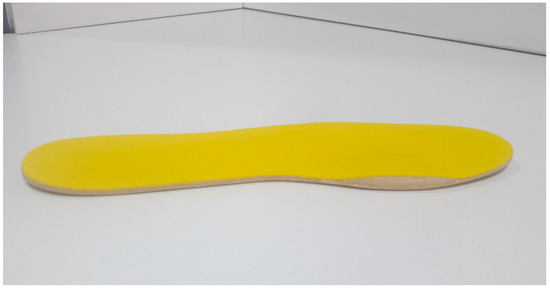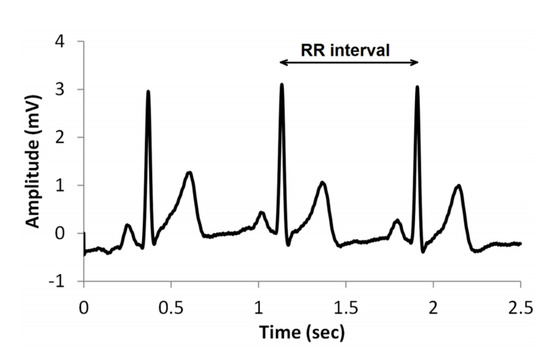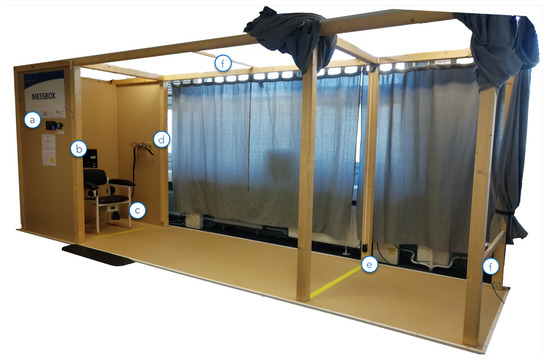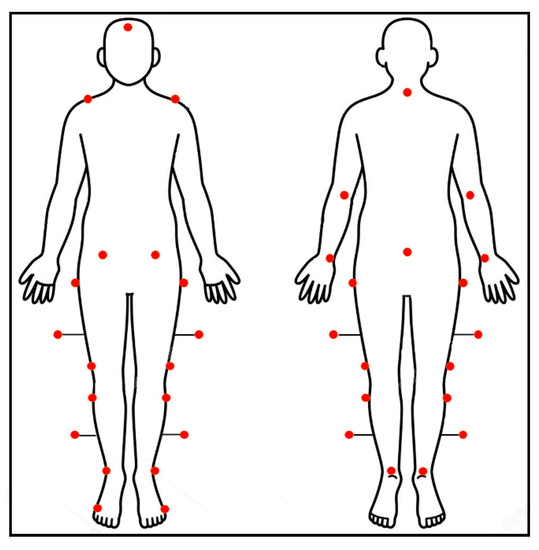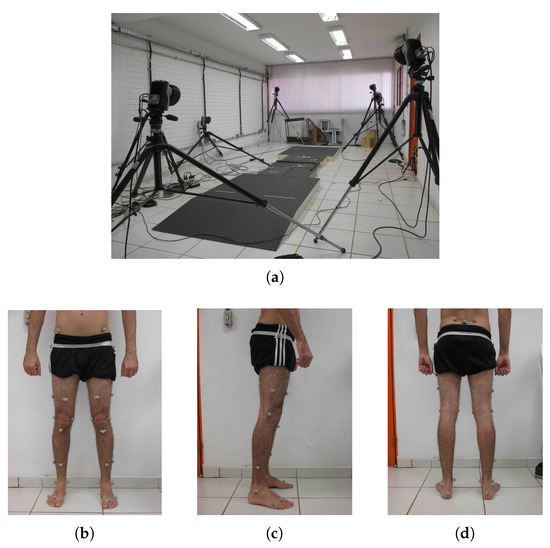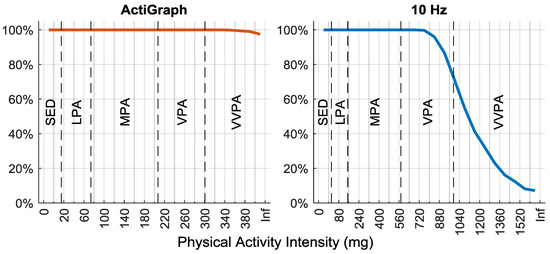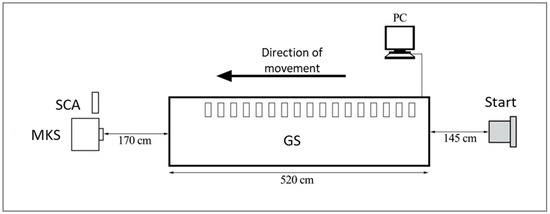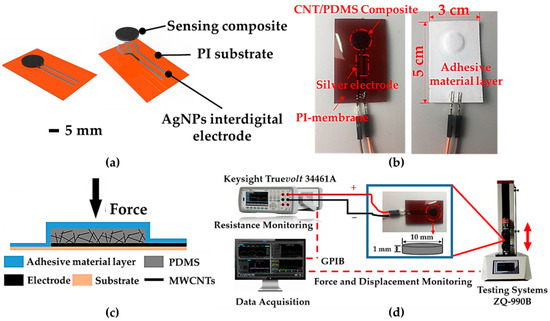Sensors for Gait, Human Movement Analysis, and Health Monitoring
A topical collection in Sensors (ISSN 1424-8220). This collection belongs to the section "Wearables".
Viewed by 327477
Share This Topical Collection
Editor
 Dr. Marco Iosa
Dr. Marco Iosa
 Dr. Marco Iosa
Dr. Marco Iosa
E-Mail
Website
Collection Editor
Laboratory for the Study of Mind and Action in Rehabilitation Technologies – Smart Lab, Santa Lucia Foundation IRCCS, Via Ardeatina 306, 00179 Rome, Italy
Interests: neuroscience; neurorehabilitation; motor control; neuropsychology; psychometry
Special Issues, Collections and Topics in MDPI journals
Topical Collection Information
Dear Colleagues,
The instrumentation of human movement analysis consists of sensor-based measurement techniques aimed to objectively describe and quantitatively assess the motor functions and motor abilities of a subject. With the instrumentation of movement analysis, the kinematic and kinetic parameters of human movements can be determined, and musculoskeletal functions can be quantitatively evaluated. This is fundamental for assessing motor behaviors, sport performances, health monitoring, and assessing motor impairments in pathological conditions, including the evaluation of improvements during rehabilitation in a more sensible and objective manner than the ordinal scores of “semi-quantitative” clinical scales. The standard laboratories of human movement analyses, especially those for gait analysis, are composed of multi-camera motion capture systems, force platforms, and electromyographic devices. Thanks to technological advances in the field of motion measurement techniques, it is now possible to measure the kinematics of body segments via wearable inertial sensors, such as accelerometers and gyroscopes, allowing also continuous health monitoring during the activities of daily life. This Topic Collection aims to highlight the most recent research regarding sensors and their applications in gait analysis and, more generally, human movement analysis, including in health monitoring.
Contributions are invited from groups active in this field of research.
Dr. Marco Iosa
Collection Editor
Manuscript Submission Information
Manuscripts should be submitted online at www.mdpi.com by registering and logging in to this website. Once you are registered, click here to go to the submission form. Manuscripts can be submitted until the deadline. All submissions that pass pre-check are peer-reviewed. Accepted papers will be published continuously in the journal (as soon as accepted) and will be listed together on the collection website. Research articles, review articles as well as short communications are invited. For planned papers, a title and short abstract (about 100 words) can be sent to the Editorial Office for announcement on this website.
Submitted manuscripts should not have been published previously, nor be under consideration for publication elsewhere (except conference proceedings papers). All manuscripts are thoroughly refereed through a single-blind peer-review process. A guide for authors and other relevant information for submission of manuscripts is available on the Instructions for Authors page. Sensors is an international peer-reviewed open access semimonthly journal published by MDPI.
Please visit the Instructions for Authors page before submitting a manuscript.
The Article Processing Charge (APC) for publication in this open access journal is 2600 CHF (Swiss Francs).
Submitted papers should be well formatted and use good English. Authors may use MDPI's
English editing service prior to publication or during author revisions.
Keywords
- gait analysis
- locomotion
- movement assessment
- motion capture
- stereophotogrammetry
- inertial measurement unit
- health monitoring
Published Papers (103 papers)
Open AccessArticle
An Ergonomics Analysis of Archers through Motion Tracking to Prevent Injuries and Improve Performance
by
Xiaoxu Ji, Jenna Miller, Xin Gao, Zainab Al Tamimi, Irati Arzalluz and Davide Piovesan
Viewed by 598
Abstract
Archery ranks among the sports with a high incidence of upper extremity injuries, particularly affecting the drawing shoulder and elbow, as well as inducing stress on the lower back. This study seeks to bridge the gap by integrating real-time human motion with biomechanical
[...] Read more.
Archery ranks among the sports with a high incidence of upper extremity injuries, particularly affecting the drawing shoulder and elbow, as well as inducing stress on the lower back. This study seeks to bridge the gap by integrating real-time human motion with biomechanical software to enhance the ergonomics of archers. Thirteen participants were involved in four tasks, using different bows with varied draw weights and shooting distances. Through the application of advanced integrative technology, this study highlights the distinct postures adopted by both males and females, which indicate the biomechanical differences between genders. Additionally, an analysis of the correlation between exposed spinal forces and these adopted postures provides insights into injury risk assessment during the key archery movements. The findings of this study have the potential to significantly enhance the application of training methodologies and the design of assistive devices. These improvements are geared towards mitigating injury risks and enhancing the overall performance of archers.
Full article
►▼
Show Figures
Open AccessReview
Non-Invasive Assessment of Back Surface Topography: Technologies, Techniques and Clinical Utility
by
Bhavna Mehta, Nachiappan Chockalingam, Thomas Shannon, Nikola Jevtic, Filip Lazic, Vinay Jasani, Nicola Eddison, Aoife Healy and Robert Needham
Cited by 2 | Viewed by 1253
Abstract
(1) Background: Frequent exposure to ionising radiation is often used to determine the diagnosis of adolescent idiopathic scoliosis (AIS), a lateral curvature of the spine in those aged between 10 and 18 years, and a treatment plan according to Cobb angle. This narrative
[...] Read more.
(1) Background: Frequent exposure to ionising radiation is often used to determine the diagnosis of adolescent idiopathic scoliosis (AIS), a lateral curvature of the spine in those aged between 10 and 18 years, and a treatment plan according to Cobb angle. This narrative review outlines the clinical utility of surface topography (ST), a radiation-free imaging modality. (2) Methods: Publicly available databases were searched to yield literature related to ST. Identified articles were classified based on the equipment used and in order of how it was developed, i.e., historical, recent developments, and state-of-the-art developments. (3) Conclusions: ST is a reliable cost-effective non-invasive technique that provides an alternative to radiation-based imaging to aid with the diagnosis and potential screening of AIS. Several scanning methods are available, which allows ST to be used in several clinical environments. Limitations of inter-reliability and differences of apparatus resulting in variations of data have been noted through this narrative review.
Full article
►▼
Show Figures
Open AccessCorrection
Correction: Bohlke et al. The Effect of a Verbal Cognitive Task on Postural Sway Does Not Persist When the Task Is Over. Sensors 2021, 21, 8428
by
Kayla Bohlke, Xiaonan Zhu, Patrick J. Sparto, Mark S. Redfern, Caterina Rosano, Ervin Sejdic and Andrea L. Rosso
Viewed by 468
Open AccessArticle
Foot Sole Contact Forces vs. Ground Contact Forces to Obtain Foot Joint Moments for In-Shoe Gait—A Preliminary Study
by
Joaquín L. Sancho-Bru, Enrique Sanchis-Sales, Pablo J. Rodríguez-Cervantes and Carles Vergés-Salas
Viewed by 1072
Abstract
In-shoe models are required to extend the clinical application of current multisegment kinetic models of the bare foot to study the effect of foot orthoses. Work to date has only addressed marker placement for reliable kinematic analyses. The purpose of this study is
[...] Read more.
In-shoe models are required to extend the clinical application of current multisegment kinetic models of the bare foot to study the effect of foot orthoses. Work to date has only addressed marker placement for reliable kinematic analyses. The purpose of this study is to address the difficulties of recording contact forces with available sensors. Ten participants walked 5 times wearing two different types of footwear by stepping on a pressure platform (ground contact forces) while wearing in-shoe pressure sensors (foot sole contact forces). Pressure data were segmented by considering contact cells’ anteroposterior location, and were used to compute 3D moments at foot joints. The mean values and 95% confidence intervals were plotted for each device per shoe condition. The peak values and times of forces and moments were computed per participant and trial under each condition, and were compared using mixed-effect tests. Test–retest reliability was analyzed by means of intraclass correlation coefficients. The curve profiles from both devices were similar, with higher joint moments for the instrumented insoles at the metatarsophalangeal joint (~26%), which were lower at the ankle (~8%) and midtarsal (~15%) joints, although the differences were nonsignificant. Not considering frictional forces resulted in ~20% lower peaks at the ankle moments compared to previous studies, which employed force plates. The device affected both shoe conditions in the same way, which suggests the interchangeability of measuring joint moments with one or the other device. This hypothesis was reinforced by the intraclass correlation coefficients, which were higher for the peak values, although only moderate-to-good. In short, both considered alternatives have drawbacks. Only the instrumented in-soles provided direct information about foot contact forces, but it was incomplete (evidenced by the difference in ankle moments between devices). However, recording ground reaction forces offers the advantage of enabling the consideration of contact friction forces (using force plates in series, or combining a pressure platform and a force plate to estimate friction forces and torque), which are less invasive than instrumented insoles (which may affect subjects’ gait).
Full article
►▼
Show Figures
Open AccessArticle
Validation of Estimators for Weight-Bearing and Shoulder Joint Loads Using Instrumented Crutches
by
Marco Ghidelli, Cristina Nuzzi, Francesco Crenna and Matteo Lancini
Viewed by 881
Abstract
This research paper aimed to validate two methods for measuring loads during walking with instrumented crutches: one method to estimate partial weight-bearing on the lower limbs and another to estimate shoulder joint reactions. Currently, gait laboratories, instrumented with high-end measurement systems, are used
[...] Read more.
This research paper aimed to validate two methods for measuring loads during walking with instrumented crutches: one method to estimate partial weight-bearing on the lower limbs and another to estimate shoulder joint reactions. Currently, gait laboratories, instrumented with high-end measurement systems, are used to extract kinematic and kinetic data, but such facilities are expensive and not accessible to all patients. The proposed method uses instrumented crutches to measure ground reaction forces and does not require any motion capture devices or force platforms. The load on the lower limbs is estimated by subtracting the forces measured by the crutches from the subject’s total weight. Since the model does not consider inertia contribution in dynamic conditions, the estimation improves with low walking cadence when walking with the two-point contralateral and the three-point partial weight-bearing patterns considered for the validation tests. The shoulder joint reactions are estimated using linear regression, providing accurate values for the forces but less accurate torque estimates. The crutches data are acquired and processed in real-time, allowing for immediate feedback, and the system can be used outdoors in real-world walking conditions. The validation of this method could lead to better monitoring of partial weight-bearing and shoulder joint reactions, which could improve patient outcomes and reduce complications.
Full article
►▼
Show Figures
Open AccessArticle
Assessing Quadriceps Muscle Contraction Using a Novel Surface Mechanomyography Sensor during Two Neuromuscular Control Screening Tasks
by
Shannon E. Linderman, Donna Moxley Scarborough, Ryan Aspenleiter, Hannah S. Stein and Eric M. Berkson
Cited by 1 | Viewed by 1335
Abstract
Electromyography (EMG) is the clinical standard for capturing muscle activation data to gain insight into neuromuscular control, yet challenges surrounding data analysis limit its use during dynamic tasks. Surface mechanomyography (sMMG) sensors are novel wearable devices that measure the physical output of muscle
[...] Read more.
Electromyography (EMG) is the clinical standard for capturing muscle activation data to gain insight into neuromuscular control, yet challenges surrounding data analysis limit its use during dynamic tasks. Surface mechanomyography (sMMG) sensors are novel wearable devices that measure the physical output of muscle excursion during contraction, which may offer potential easy application to assess neuromuscular control. This study aimed to investigate sMMG detection of the timing patterns of muscle contraction compared to EMG. Fifteen healthy participants (mean age = 31.7 ± 9.1 y; eight males and seven females) were donned with EMG and sMMG sensors on their right quadriceps for simultaneous data capture during bilateral deep squats, and a subset performed three sets of repeated unilateral partial squats. No significant difference in the total duration of contraction was detected by EMG and sMMG during bilateral (
p = 0.822) and partial (
p = 0.246) squats. sMMG and EMG timing did not differ significantly for eccentric (
p = 0.414) and concentric (
p = 0.462) phases of muscle contraction during bilateral squats. The sMMG magnitude of quadriceps excursion demonstrated excellent intra-session retest reliability for bilateral (ICC
3,1 = 0.962 mm) and partial (ICC
3,1 = 0.936 mm,
n = 10) squats. The sMMG sensors accurately and consistently provided key quadriceps muscle performance metrics during two physical activities commonly used to assess neuromuscular control for injury prevention, rehabilitation, and exercise training.
Full article
►▼
Show Figures
Open AccessArticle
BioMAT: An Open-Source Biomechanics Multi-Activity Transformer for Joint Kinematic Predictions Using Wearable Sensors
by
Mohsen Sharifi-Renani, Mohammad H. Mahoor and Chadd W. Clary
Cited by 3 | Viewed by 1739
Abstract
Through wearable sensors and deep learning techniques, biomechanical analysis can reach beyond the lab for clinical and sporting applications. Transformers, a class of recent deep learning models, have become widely used in state-of-the-art artificial intelligence research due to their superior performance in various
[...] Read more.
Through wearable sensors and deep learning techniques, biomechanical analysis can reach beyond the lab for clinical and sporting applications. Transformers, a class of recent deep learning models, have become widely used in state-of-the-art artificial intelligence research due to their superior performance in various natural language processing and computer vision tasks. The performance of transformer models has not yet been investigated in biomechanics applications. In this study, we introduce a Biomechanical Multi-activity Transformer-based model, BioMAT, for the estimation of joint kinematics from streaming signals of multiple inertia measurement units (IMUs) using a publicly available dataset. This dataset includes IMU signals and the corresponding sagittal plane kinematics of the hip, knee, and ankle joints during multiple activities of daily living. We evaluated the model’s performance and generalizability and compared it against a convolutional neural network long short-term model, a bidirectional long short-term model, and multi-linear regression across different ambulation tasks including level ground walking (LW), ramp ascent (RA), ramp descent (RD), stair ascent (SA), and stair descent (SD). To investigate the effect of different activity datasets on prediction accuracy, we compared the performance of a universal model trained on all activities against task-specific models trained on individual tasks. When the models were tested on three unseen subjects’ data, BioMAT outperformed the benchmark models with an average root mean square error (RMSE) of 5.5 ± 0.5°, and normalized RMSE of 6.8 ± 0.3° across all three joints and all activities. A unified BioMAT model demonstrated superior performance compared to individual task-specific models across four of five activities. The RMSE values from the universal model for LW, RA, RD, SA, and SD activities were 5.0 ± 1.5°, 6.2 ± 1.1°, 5.8 ± 1.1°, 5.3 ± 1.6°, and 5.2 ± 0.7° while these values for task-specific models were, 5.3 ± 2.1°, 6.7 ± 2.0°, 6.9 ± 2.2°, 4.9 ± 1.4°, and 5.6 ± 1.3°, respectively. Overall, BioMAT accurately estimated joint kinematics relative to previous machine learning algorithms across different activities directly from the sequence of IMUs signals instead of time-normalized gait cycle data.
Full article
►▼
Show Figures
Open AccessArticle
Real-Time Gait Event Detection with Adaptive Frequency Oscillators from a Single Head-Mounted IMU
by
Matej Tomc and Zlatko Matjačić
Viewed by 1384
Abstract
Accurate real-time gait event detection is the basis for the development of new gait rehabilitation techniques, especially when utilizing robotics or virtual reality (VR). The recent emergence of affordable wearable technologies, especially inertial measurement units (IMUs), has brought forth various new methods and
[...] Read more.
Accurate real-time gait event detection is the basis for the development of new gait rehabilitation techniques, especially when utilizing robotics or virtual reality (VR). The recent emergence of affordable wearable technologies, especially inertial measurement units (IMUs), has brought forth various new methods and algorithms for gait analysis. In this paper, we highlight some advantages of using adaptive frequency oscillators (AFOs) over traditional gait event detection algorithms, implemented a real-time AFO-based algorithm that estimates the gait phase from a single head-mounted IMU, and validated our method on a group of healthy subjects. Gait event detection was accurate at two different walking speeds. The method was reliable for symmetric, but not asymmetric gait patterns. Our method could prove especially useful in VR applications since a head-mounted IMU is already an integral part of commercial VR products.
Full article
►▼
Show Figures
Open AccessArticle
Sensing and Control Strategies for a Synergy-Based, Cable-Driven Exosuit via a Modular Test Bench
by
Ashwin Jayakumar, Daniel Rodríguez Jorge, Javier Bermejo-García, Rafael Agujetas and Francisco Romero-Sánchez
Cited by 1 | Viewed by 1245
Abstract
Ageing results in the eventual loss of muscle mass and strength, joint problems, and overall slowing of movements, with a greater risk of suffering falls or other such accidents. The use of gait assistance exoskeletons can help in the active aging of this
[...] Read more.
Ageing results in the eventual loss of muscle mass and strength, joint problems, and overall slowing of movements, with a greater risk of suffering falls or other such accidents. The use of gait assistance exoskeletons can help in the active aging of this segment of the population. Given the user specificity of the mechanics and control these devices need, the facility used to test different design parameters is indispensable. This work deals with the modeling and construction of a modular test bench and prototype exosuit to test different mounting and control schemes for a cable-driven exoskeleton or exosuit. The test bench allows the experimental implementation of postural or kinematic synergies to assist multiple joints by using only one actuator and the optimization of the control scheme to better adapt to the characteristics of the specific patient. The design is open to the research community and it is expected to improve the design of cable-driven systems for exosuits.
Full article
►▼
Show Figures
Open AccessArticle
Modeling and Calibration of Pressure-Sensing Insoles via a New Plenum-Based Chamber
by
Italo Belli, Ines Sorrentino, Simeone Dussoni, Gianluca Milani, Lorenzo Rapetti, Yeshasvi Tirupachuri, Enrico Valli, Punith Reddy Vanteddu, Marco Maggiali and Daniele Pucci
Viewed by 1348
Abstract
This paper proposes a novel method to reliably calibrate a pair of sensorized insoles utilizing an array of capacitive tactile pixels (
taxels). A new calibration setup is introduced that is scalable and suitable for multiple kinds of wearable sensors and a
[...] Read more.
This paper proposes a novel method to reliably calibrate a pair of sensorized insoles utilizing an array of capacitive tactile pixels (
taxels). A new calibration setup is introduced that is scalable and suitable for multiple kinds of wearable sensors and a procedure for the simultaneous calibration of each of the sensors in the insoles is presented. The calibration relies on a two-step optimization algorithm that, firstly, enables determination of a relevant set of mathematical models based on the instantaneous measurement of the taxels alone, and, then, expands these models to include the relevant portion of the time history of the system. By comparing the resulting models with our previous work on the same hardware, we demonstrate the effectiveness of the novel method both in terms of increased ability to cope with the non-linear characteristics of the sensors and increased pressure ranges achieved during the experiments performed.
Full article
►▼
Show Figures
Open AccessArticle
Effects of Upper Limb Robot-Assisted Rehabilitation Compared with Conventional Therapy in Patients with Stroke: Preliminary Results on a Daily Task Assessed Using Motion Analysis
by
Marco Germanotta, Laura Cortellini, Sabina Insalaco and Irene Aprile
Cited by 3 | Viewed by 2813
Abstract
Robotic rehabilitation of the upper limb has demonstrated promising results in terms of the improvement of arm function in post-stroke patients. The current literature suggests that robot-assisted therapy (RAT) is comparable to traditional approaches when clinical scales are used as outcome measures. Instead,
[...] Read more.
Robotic rehabilitation of the upper limb has demonstrated promising results in terms of the improvement of arm function in post-stroke patients. The current literature suggests that robot-assisted therapy (RAT) is comparable to traditional approaches when clinical scales are used as outcome measures. Instead, the effects of RAT on the capacity to execute a daily life task with the affected upper limb are unknown, as measured using kinematic indices. Through kinematic analysis of a drinking task, we examined the improvement in upper limb performance between patients following a robotic or conventional 30-session rehabilitation intervention. In particular, we analyzed data from nineteen patients with subacute stroke (less than six months following stroke), nine of whom treated with a set of four robotic and sensor-based devices and ten with a traditional approach. According to our findings, the patients increased their movement efficiency and smoothness regardless of the rehabilitative approach. After the treatment (either robotic or conventional), no differences were found in terms of movement accuracy, planning, speed, or spatial posture. This research seems to demonstrate that the two investigated approaches have a comparable impact and may give insight into the design of rehabilitation therapy.
Full article
►▼
Show Figures
Open AccessArticle
Evaluation of Different Pressure-Based Foot Contact Event Detection Algorithms across Different Slopes and Speeds
by
Samuel Blades, Hunter Marriott, Sandra Hundza, Eric C. Honert, Trent Stellingwerff and Marc Klimstra
Cited by 1 | Viewed by 1879
Abstract
If validated, in-shoe pressure measuring technology allows for the field-based quantification of running gait, including kinematic and kinetic measures. Different algorithmic methods have been proposed to determine foot contact events from in-shoe pressure insole systems, however, these methods have not been evaluated for
[...] Read more.
If validated, in-shoe pressure measuring technology allows for the field-based quantification of running gait, including kinematic and kinetic measures. Different algorithmic methods have been proposed to determine foot contact events from in-shoe pressure insole systems, however, these methods have not been evaluated for accuracy, reliability against a gold standard using running data across different slopes, and speeds. Using data from a plantar pressure measurement system, seven different foot contact event detection algorithms based on pressure signals (pressure sum) were compared to vertical ground reaction force data collected from a force instrumented treadmill. Subjects ran on level ground at 2.6, 3.0, 3.4, and 3.8 m/s, six degrees (10.5%) inclined at 2.6, 2.8, and 3.0 m/s, and six degrees declined at 2.6, 2.8, 3.0, and 3.4 m/s. The best performing foot contact event detection algorithm showed maximal mean absolute errors of only 1.0 ms and 5.2 ms for foot contact and foot off, respectively, on level grade, when compared to a 40 N ascending and descending force threshold from the force treadmill data. Additionally, this algorithm was unaffected by grade and had similar levels of errors across all grades.
Full article
►▼
Show Figures
Open AccessArticle
Characterization of the Kinetyx SI Wireless Pressure-Measuring Insole during Benchtop Testing and Running Gait
by
Samuel Blades, Matt Jensen, Trent Stellingwerff, Sandra Hundza and Marc Klimstra
Cited by 2 | Viewed by 2000
Abstract
This study characterized the absolute pressure measurement error and reliability of a new fully integrated (Kinetyx, SI) plantar-pressure measurement system (PPMS) versus an industry-standard PPMS (F-Scan, Tekscan) during an established benchtop testing protocol as well as via a research-grade, instrumented treadmill (Bertec) during
[...] Read more.
This study characterized the absolute pressure measurement error and reliability of a new fully integrated (Kinetyx, SI) plantar-pressure measurement system (PPMS) versus an industry-standard PPMS (F-Scan, Tekscan) during an established benchtop testing protocol as well as via a research-grade, instrumented treadmill (Bertec) during a running protocol. Benchtop testing results showed that both SI and F-Scan had strong positive linearity (Pearson’s correlation coefficient, PCC = 0.86–0.97, PCC = 0.87–0.92; RMSE = 15.96 ± 9.49) and mean root mean squared error RMSE (9.17 ± 2.02) compared to the F-Scan on a progressive loading step test. The SI and F-Scan had comparable results for linearity and hysteresis on a sinusoidal loading test (PCC = 0.92–0.99; 5.04 ± 1.41; PCC = 0.94–0.99; 6.15 ± 1.39, respectively). SI had less mean RMSE (6.19 ± 1.38) than the F-Scan (8.66 ±2.31) on the sinusoidal test and less absolute error (4.08 ± 3.26) than the F-Scan (16.38 ± 12.43) on a static test. Both the SI and F-Scan had near-perfect between-day reliability interclass correlation coefficient, ICC = 0.97–1.00) to the F-Scan (ICC = 0.96–1.00). During running, the SI pressure output had a near-perfect linearity and low RMSE compared to the force measurement from the Bertec treadmill. However, the SI pressure output had a mean hysteresis of 7.67% with a 28.47% maximum hysteresis, which may have implications for the accurate quantification of kinetic gait measures during running.
Full article
►▼
Show Figures
Open AccessArticle
A Proof of Concept Combined Using Mixed Reality for Personalized Neurorehabilitation of Cerebellar Ataxic Patients
by
Michela Franzò, Andrada Pica, Simona Pascucci, Mariano Serrao, Franco Marinozzi and Fabiano Bini
Cited by 4 | Viewed by 1690
Abstract
Background: Guidelines for degenerative cerebellar ataxia neurorehabilitation suggest intensive coordinative training based on physiotherapeutic exercises. Scientific studies demonstrate virtual exergaming therapeutic value. However, patient-based personalization, post processing analyses and specific audio-visual feedbacks are not provided. This paper presents a wearable motion tracking system
[...] Read more.
Background: Guidelines for degenerative cerebellar ataxia neurorehabilitation suggest intensive coordinative training based on physiotherapeutic exercises. Scientific studies demonstrate virtual exergaming therapeutic value. However, patient-based personalization, post processing analyses and specific audio-visual feedbacks are not provided. This paper presents a wearable motion tracking system with recording and playback features. This system has been specifically designed for ataxic patients, for upper limbs coordination studies with the aim to retrain movement in a neurorehabilitation setting. Suggestions from neurologists and ataxia patients were considered to overcome the shortcomings of virtual systems and implement exergaming. Methods: The system consists of the mixed-reality headset Hololens2 and a proprietary exergaming implemented in Unity. Hololens2 can track and save upper limb parameters, head position and gaze direction in runtime. Results: Data collected from a healthy subject are reported to demonstrate features and outputs of the system. Conclusions: Although further improvements and validations are needed, the system meets the needs of a dynamic patient-based exergaming for patients with cerebellar ataxia. Compared with existing solutions, the mixed-reality system is designed to provide an effective and safe therapeutic exergaming that supports both primary and secondary goals of an exergaming: what a patient should do and how patient actions should be performed.
Full article
►▼
Show Figures
Open AccessArticle
Classifying Changes in Amputee Gait following Physiotherapy Using Machine Learning and Continuous Inertial Sensor Signals
by
Gabriel Ng and Jan Andrysek
Cited by 1 | Viewed by 1586
Abstract
Wearable sensors allow for the objective analysis of gait and motion both in and outside the clinical setting. However, it remains a challenge to apply such systems to highly diverse patient populations, including individuals with lower-limb amputations (LLA) that present with unique gait
[...] Read more.
Wearable sensors allow for the objective analysis of gait and motion both in and outside the clinical setting. However, it remains a challenge to apply such systems to highly diverse patient populations, including individuals with lower-limb amputations (LLA) that present with unique gait deviations and rehabilitation goals. This paper presents the development of a novel method using continuous gyroscope data from a single inertial sensor for person-specific classification of gait changes from a physiotherapist-led gait training session. Gyroscope data at the thigh were collected using a wearable gait analysis system for five LLA before, during, and after completing a gait training session. Data from able-bodied participants receiving no intervention were also collected. Models using dynamic time warping (DTW) and Euclidean distance in combination with the nearest neighbor classifier were applied to the gyroscope data to classify the pre- and post-training gait. The model achieved an accuracy of 98.65% ± 0.69 (Euclidean) and 98.98% ± 0.83 (DTW) on pre-training and 95.45% ± 6.20 (Euclidean) and 94.18% ± 5.77 (DTW) on post-training data across the participants whose gait changed significantly during their session. This study provides preliminary evidence that continuous angular velocity data from a single gyroscope could be used to assess changes in amputee gait. This supports future research and the development of wearable gait analysis and feedback systems that are adaptable to a broad range of mobility impairments.
Full article
►▼
Show Figures
Open AccessArticle
Reliability and Validity of a Wearable Sensing System and Online Gait Analysis Report in Persons after Stroke
by
Anne Schwarz, Adib Al-Haj Husain, Lorenzo Einaudi, Eva Thürlimann, Julia Läderach, Chris Awai Easthope, Jeremia P. O. Held and Andreas R. Luft
Cited by 2 | Viewed by 2047
Abstract
The restoration of gait and mobility after stroke is an important and challenging therapy goal due to the complexity of the potentially impaired functions. As a result, precise and clinically feasible assessment methods are required for personalized gait rehabilitation after stroke. The aim
[...] Read more.
The restoration of gait and mobility after stroke is an important and challenging therapy goal due to the complexity of the potentially impaired functions. As a result, precise and clinically feasible assessment methods are required for personalized gait rehabilitation after stroke. The aim of this study is to investigate the reliability and validity of a sensor-based gait analysis system in stroke survivors with different severities of gait deficits. For this purpose, 28 chronic stroke survivors (9 women, ages: 62.04 ± 11.68 years) with mild to moderate walking impairments performed a set of ambulatory assessments (3× 10MWT, 1× 6MWT per session) twice while being equipped with a sensor suit. The derived gait reports provided information about speed, step length, step width, swing and stance phases, as well as joint angles of the hip, knee, and ankle, which we analyzed for test-retest reliability and hypothesis testing. Further, test-retest reliability resulted in a mean ICC of 0.78 (range: 0.46–0.88) for walking 10 m and a mean ICC of 0.90 (range: 0.63–0.99) for walking 6 min. Additionally, all gait parameters showed moderate-to-strong correlations with clinical scales reflecting lower limb function. These results support the applicability of this sensor-based gait analysis system for individuals with stroke-related walking impairments.
Full article
►▼
Show Figures
Open AccessArticle
Estimation of Lower Extremity Muscle Activity in Gait Using the Wearable Inertial Measurement Units and Neural Network
by
Min Khant, Darwin Gouwanda, Alpha A. Gopalai, King Hann Lim and Chee Choong Foong
Cited by 6 | Viewed by 4438
Abstract
The inertial measurement unit (IMU) has become more prevalent in gait analysis. However, it can only measure the kinematics of the body segment it is attached to. Muscle behaviour is an important part of gait analysis and provides a more comprehensive overview of
[...] Read more.
The inertial measurement unit (IMU) has become more prevalent in gait analysis. However, it can only measure the kinematics of the body segment it is attached to. Muscle behaviour is an important part of gait analysis and provides a more comprehensive overview of gait quality. Muscle behaviour can be estimated using musculoskeletal modelling or measured using an electromyogram (EMG). However, both methods can be tasking and resource intensive. A combination of IMU and neural networks (NN) has the potential to overcome this limitation. Therefore, this study proposes using NN and IMU data to estimate nine lower extremity muscle activities. Two NN were developed and investigated, namely feedforward neural network (FNN) and long short-term memory neural network (LSTM). The results show that, although both networks were able to predict muscle activities well, LSTM outperformed the conventional FNN. This study confirms the feasibility of estimating muscle activity using IMU data and NN. It also indicates the possibility of this method enabling the gait analysis to be performed outside the laboratory environment with a limited number of devices.
Full article
►▼
Show Figures
Open AccessArticle
Accelerometers in Our Pocket: Does Smartphone Accelerometer Technology Provide Accurate Data?
by
George Grouios, Efthymios Ziagkas, Andreas Loukovitis, Konstantinos Chatzinikolaou and Eirini Koidou
Cited by 7 | Viewed by 6280
Abstract
This study evaluates accelerometer performance of three new state of the art smartphones and focuses on accuracy. The motivating research question was whether accelerator accuracy obtained with these off-the-shelf modern smartphone accelerometers was or was not statistically different from that of a gold-standard
[...] Read more.
This study evaluates accelerometer performance of three new state of the art smartphones and focuses on accuracy. The motivating research question was whether accelerator accuracy obtained with these off-the-shelf modern smartphone accelerometers was or was not statistically different from that of a gold-standard reference system. We predicted that the accuracy of the three modern smartphone accelerometers in human movement data acquisition do not differ from that of the Vicon MX motion capture system. To test this prediction, we investigated the comparative performance of three different commercially available current generation smartphone accelerometers among themselves and to a gold-standard Vicon MX motion capture system. A single subject design was implemented for this study. Pearson’s correlation coefficients
® were calculated to verify the validity of the smartphones’ accelerometer data against that of the Vicon MX motion capture system. The Intraclass Correlation Coefficient (ICC) was used to assess the smartphones’ accelerometer performance reliability compared to that of the Vicon MX motion capture system. Results demonstrated that (a) the tested smartphone accelerometers are valid and reliable devices for estimating accelerations and (b) there were not significant differences among the three current generation smartphones and the Vicon MX motion capture system’s mean acceleration data. This evidence indicates how well recent generation smartphone accelerometer sensors are capable of measuring human body motion. This study, which bridges a significant information gap between the accuracy of accelerometers measured close to production and their accuracy in actual smartphone research, should be interpreted within the confines of its scope, limitations and strengths. Further research is warranted to validate our arguments, suggestions, and results, since this is the first study on this topic.
Full article
►▼
Show Figures
Open AccessArticle
Validation of 2D Force Measurement Roller Ski and Practical Application
by
Shuang Zhao, Vesa Linnamo, Keijo Ruotsalainen, Stefan Lindinger, Timo Kananen, Petri Koponen and Olli Ohtonen
Cited by 3 | Viewed by 2110
Abstract
Several methods could be used to measure the forces from skis or roller skis in cross-country skiing. Equipment that could measure medio-lateral forces may be of good help for investigating the relevant skating techniques. The aim of this study was to validate a
[...] Read more.
Several methods could be used to measure the forces from skis or roller skis in cross-country skiing. Equipment that could measure medio-lateral forces may be of good help for investigating the relevant skating techniques. The aim of this study was to validate a pair of newly designed two-dimensional force measurement roller skis. The vertical and medio-lateral forces which were perpendicular to the body of the roller ski could be measured. Forces were resolved into the global coordinate system and compared with the force components measured by a force plate. A static and dynamic loading situation for the force measurement roller ski was performed to reveal the validity of the system. To demonstrate whether the force measurement roller ski would affect roller skiing performance on a treadmill, a maximum speed test with the V2 technique was performed by using both normal and force measurement roller skis. The force-time curves obtained by these two different force measurement systems were shown to have high similarity (coefficient of multiple correlations > 0.940). The absolute difference for the forces in the X and Z directions over one push-off cycle was 3.9–33.3 N. The extra weight (333 g) of the force measurement roller ski did not affect the performance of the skiers. Overall, the newly designed two-dimensional force measurement roller ski in this study is valid for use in future research during daily training for skate skiing techniques.
Full article
►▼
Show Figures
Open AccessArticle
Self-Calibrating Magnetometer-Free Inertial Motion Tracking of 2-DoF Joints
by
Daniel Laidig, Ive Weygers and Thomas Seel
Cited by 7 | Viewed by 2328
Abstract
Human motion analysis using inertial measurement units (IMUs) has recently been shown to provide accuracy similar to the gold standard, optical motion capture, but at lower costs and while being less restrictive and time-consuming. However, IMU-based motion analysis requires precise knowledge of the
[...] Read more.
Human motion analysis using inertial measurement units (IMUs) has recently been shown to provide accuracy similar to the gold standard, optical motion capture, but at lower costs and while being less restrictive and time-consuming. However, IMU-based motion analysis requires precise knowledge of the orientations in which the sensors are attached to the body segments. This knowledge is commonly obtained via time-consuming and error-prone anatomical calibration based on precisely defined poses or motions. In the present work, we propose a self-calibrating approach for magnetometer-free joint angle tracking that is suitable for joints with two degrees of freedom (DoF), such as the elbow, ankle, and metacarpophalangeal finger joints. The proposed methods exploit kinematic constraints in the angular rates and the relative orientations to simultaneously identify the joint axes and the heading offset. The experimental evaluation shows that the proposed methods are able to estimate plausible and consistent joint axes from just ten seconds of arbitrary elbow joint motion. Comparison with optical motion capture shows that the proposed methods yield joint angles with similar accuracy as a conventional IMU-based method while being much less restrictive. Therefore, the proposed methods improve the practical usability of IMU-based motion tracking in many clinical and biomedical applications.
Full article
►▼
Show Figures
Open AccessReview
Fiber/Yarn-Based Triboelectric Nanogenerators (TENGs): Fabrication Strategy, Structure, and Application
by
Yu Chen, Yali Ling and Rong Yin
Cited by 10 | Viewed by 4317
Abstract
With the demand of a sustainable, wearable, environmentally friendly energy source, triboelectric nanogenerators (TENGs) were developed. TENG is a promising method to convert mechanical energy from motion into electrical energy. The combination of textile and TENG successfully enables wearable, self-driving electronics and sensor
[...] Read more.
With the demand of a sustainable, wearable, environmentally friendly energy source, triboelectric nanogenerators (TENGs) were developed. TENG is a promising method to convert mechanical energy from motion into electrical energy. The combination of textile and TENG successfully enables wearable, self-driving electronics and sensor systems. As the primary unit of textiles, fiber and yarn become the focus of research in designing of textile-TENGs. In this review, we introduced the preparation, structure, and design strategy of fiber/yarn TENGs in recent research. We discussed the structure design and material selection of fiber/yarn TENGs according to the different functions it realizes. The fabrication strategy of fiber/yarn TENGs into textile-TENG are provided. Finally, we summarize the main applications of existing textile TENGs and give forward prospects for their subsequent development.
Full article
►▼
Show Figures
Open AccessArticle
Salient Targets and Fear of Falling Changed the Gait Pattern and Joint Kinematic of Older Adults
by
Yue Luo, Xiaojie Lu, Nicolas S. Grimaldi, Sherry Ahrentzen and Boyi Hu
Viewed by 1341
Abstract
Background: Fear of falling and environmental barriers in the home are two major factors that cause the incidence of falling. Poor visibility at night is one of the key environmental barriers that contribute to falls among older adult residents. Ensuring their visual perception
[...] Read more.
Background: Fear of falling and environmental barriers in the home are two major factors that cause the incidence of falling. Poor visibility at night is one of the key environmental barriers that contribute to falls among older adult residents. Ensuring their visual perception of the surroundings, therefore, becomes vital to prevent falling injuries. However, there are limited works in the literature investigating the impact of the visibility of the target on older adults’ walking destinations and how that impact differs across them with different levels of fear of falling. Objective: The purpose of the study was to examine the effects of target salience on older adults’ walking performance and investigate whether older adults with varying levels of fear of falling behave differently. Methods: The salient target was constructed with LED strips around the destination of walking. Fifteen older adults (aged 75 years old and above), seven with low fear of falling and eight with high fear of falling, volunteered for the study. Participants walked from the designated origin (i.e., near their beds) to the destination (i.e., near the bathroom entrance), with the target turned on or off around the destination of the walking trials. Spatiotemporal gait variables and lower-body kinematics were recorded by inertial sensors and compared by using analysis of variance methods. Results: Data from inertial sensors showed that a more salient target at the destination increased older adults’ gait speed and improved their walking stability. These changes were accompanied by less hip flexion at heel strikes and toe offs during walking. In addition, older adults with low fear of falling showed more substantial lower-body posture adjustments with the salient target presented in the environment. Conclusions: Older adults with a low fear of falling can potentially benefit from a more salient target at their walking destination, whereas those with a high fear of falling were advised to implement a more straightforward falling intervention in their living areas.
Full article
►▼
Show Figures
Open AccessArticle
Suitability of a Low-Cost Wearable Sensor to Assess Turning in Healthy Adults
by
Rachel Mason, Joe Byerley, Andrea Baker, Dylan Powell, Liam T. Pearson, Gill Barry, Alan Godfrey, Martina Mancini, Samuel Stuart and Rosie Morris
Viewed by 1956
Abstract
Background: Turning is a complex measure of gait that accounts for over 50% of daily steps. Traditionally, turning has been measured in a research grade laboratory setting, however, there is demand for a low-cost and portable solution to measure turning using wearable
[...] Read more.
Background: Turning is a complex measure of gait that accounts for over 50% of daily steps. Traditionally, turning has been measured in a research grade laboratory setting, however, there is demand for a low-cost and portable solution to measure turning using wearable technology. This study aimed to determine the suitability of a low-cost inertial sensor-based device (AX6, Axivity) to assess turning, by simultaneously capturing and comparing to a turn algorithm output from a previously validated reference inertial sensor-based device (Opal), in healthy young adults.
Methodology: Thirty participants (aged 23.9 ± 4.89 years) completed the following turning protocol wearing the AX6 and reference device: a turn course, a two-minute walk (including 180° turns) and turning in place, alternating 360° turn right and left. Both devices were attached at the lumbar spine, one Opal via a belt, and the AX6 via double sided tape attached directly to the skin. Turning measures included number of turns, average turn duration, angle, velocity, and jerk.
Results: Agreement between the outcomes from the AX6 and reference device was good to excellent for all turn characteristics (all ICCs > 0.850) during the turning 360° task. There was good agreement for all turn characteristics (all ICCs > 0.800) during the two-minute walk task, except for moderate agreement for turn angle (ICC 0.683). Agreement for turn outcomes was moderate to good during the turns course (ICCs range; 0.580 to 0.870).
Conclusions: A low-cost wearable sensor, AX6, can be a suitable and fit-for-purpose device when used with validated algorithms for assessment of turning outcomes, particularly during continuous turning tasks. Future work needs to determine the suitability and validity of turning in aging and clinical cohorts within low-resource settings.
Full article
►▼
Show Figures
Open AccessArticle
Exploring the Potential of Machine Learning for the Diagnosis of Balance Disorders Based on Centre of Pressure Analyses
by
Fredy Rojas, Imran Khan Niazi, Patricio Maturana-Russel and Denise Taylor
Cited by 1 | Viewed by 1245
Abstract
Balance disorders are caused by several factors related to functionality deficits in one or multiple sensory systems such as vision, vestibular, and somatosensory systems. Patients usually have difficulty explaining their dizziness, often using ambiguous words to describe their symptoms. A common practice by
[...] Read more.
Balance disorders are caused by several factors related to functionality deficits in one or multiple sensory systems such as vision, vestibular, and somatosensory systems. Patients usually have difficulty explaining their dizziness, often using ambiguous words to describe their symptoms. A common practice by clinicians is to objectively evaluate the patient’s dizziness by applying the Sensory Organization Test (SOT), which measures the contribution of each sensory system (vestibular, visual, somatosensory). The SOT protocol can record up to 2000 measurements in 20 s to generate the Equilibrium Score (EQS) with its five load sensors. EQS is an indicator that reflects how well a patient can maintain balance. However, its calculation only considers two instances from these 2000 measurements that reflect the maximum anterior and posterior sway angle during the test performance; therefore, there is an opportunity to perform further analysis. This article aims to use the Centre of Pressure (COP) time series generated by the SOT and describes a methodology to pre-process and reduce the dimensionality of this raw data and use it as an input for machine learning algorithms to diagnose patients with balance disorder impairments. After applying this methodology to data from 475 patients, the logistic regression model (LR) produced the highest f1-score with 76.47%, and the support vector machine (SVM) performed almost as well, with an f1-score of 76.19%.
Full article
►▼
Show Figures
Open AccessArticle
A New Intraoral Six-Degrees-of-Freedom Jaw Movement Tracking Method Using Magnetic Fingerprints
by
Kinta Morikawa, Ryosuke Isogai, Junya Nonaka, Yoshifumi Yoshida, Shugo Haga and Koutaro Maki
Cited by 1 | Viewed by 2299
Abstract
We proposed a novel jaw movement tracking method that can measure in six degrees of freedom. The magnetic field generated by a permanent magnet paired with a small, low-power-consumption Hall effect magnetic sensor is used to estimate the relative distance between two objects—in
[...] Read more.
We proposed a novel jaw movement tracking method that can measure in six degrees of freedom. The magnetic field generated by a permanent magnet paired with a small, low-power-consumption Hall effect magnetic sensor is used to estimate the relative distance between two objects—in this instance, the lower and upper jaws. By installing a microelectromechanical system (MEMS) orientation sensor in the device, we developed a mouthpiece-type sensing device that can measure voluntary mandibular movements in three-dimensional orientation and position. An evaluation of individuals wearing this device demonstrated its ability to measure mandibular movement with an accuracy of approximately 3 mm. Using the movement recording feature with six degrees of freedom also enabled the evaluation of an individual’s jaw movements over time in three dimensions. In this method, all sensors are built onto the mouthpiece and the sensing is completed in the oral cavity. It does not require the fixation of a large-scale device to the head or of a jig to the teeth, unlike existing mandibular movement tracking devices. These novel features are expected to increase the accessibility of routine measurements of natural jaw movement, unrestricted by an individual’s physiological movement and posture.
Full article
►▼
Show Figures
Open AccessArticle
Rules-Based Real-Time Gait Event Detection Algorithm for Lower-Limb Prosthesis Users during Level-Ground and Ramp Walking
by
Aliaa Gouda and Jan Andrysek
Cited by 5 | Viewed by 1464
Abstract
Real-time gait event detection (GED) using inertial sensors is important for applications such as remote gait assessments, intelligent assistive devices including microprocessor-based prostheses or exoskeletons, and gait training systems. GED algorithms using acceleration and/or angular velocity signals achieve reasonable performance; however, most are
[...] Read more.
Real-time gait event detection (GED) using inertial sensors is important for applications such as remote gait assessments, intelligent assistive devices including microprocessor-based prostheses or exoskeletons, and gait training systems. GED algorithms using acceleration and/or angular velocity signals achieve reasonable performance; however, most are not suited for real-time applications involving clinical populations walking in free-living environments. The aim of this study was to develop and evaluate a real-time rules-based GED algorithm with low latency and high accuracy and sensitivity across different walking states and participant groups. The algorithm was evaluated using gait data collected from seven able-bodied (AB) and seven lower-limb prosthesis user (LLPU) participants for three walking states (level-ground walking (LGW), ramp ascent (RA), ramp descent (RD)). The performance (sensitivity and temporal error) was compared to a validated motion capture system. The overall sensitivity was 98.87% for AB and 97.05% and 93.51% for LLPU intact and prosthetic sides, respectively, across all walking states (LGW, RA, RD). The overall temporal error (in milliseconds) for both FS and FO was 10 (0, 20) for AB and 10 (0, 25) and 10 (0, 20) for the LLPU intact and prosthetic sides, respectively, across all walking states. Finally, the overall error (as a percentage of gait cycle) was 0.96 (0, 1.92) for AB and 0.83 (0, 2.08) and 0.83 (0, 1.66) for the LLPU intact and prosthetic sides, respectively, across all walking states. Compared to other studies and algorithms, the herein-developed algorithm concurrently achieves high sensitivity and low temporal error with near real-time detection of gait in both typical and clinical populations walking over a variety of terrains.
Full article
►▼
Show Figures
Open AccessArticle
Sprint Acceleration Mechanical Outputs Derived from Position– or Velocity–Time Data: A Multi-System Comparison Study
by
Charly Fornasier-Santos, Axelle Arnould, Jérémy Jusseaume, Benjamin Millot, Gaël Guilhem, Antoine Couturier, Pierre Samozino, Jean Slawinski and Jean-Benoît Morin
Cited by 7 | Viewed by 3550
Abstract
To directly compare five commonly used on-field systems (motorized linear encoder, laser, radar, global positioning system, and timing gates) during sprint acceleration to (i) measure velocity–time data, (ii) compute the main associated force–velocity variables, and (iii) assess their respective inter-trial reliability. Eighteen participants
[...] Read more.
To directly compare five commonly used on-field systems (motorized linear encoder, laser, radar, global positioning system, and timing gates) during sprint acceleration to (i) measure velocity–time data, (ii) compute the main associated force–velocity variables, and (iii) assess their respective inter-trial reliability. Eighteen participants performed three 40 m sprints, during which five systems were used to simultaneously and separately record the body center of the mass horizontal position or velocity over time. Horizontal force–velocity mechanical outputs for the two best trials were computed following an inverse dynamic model and based on an exponential fitting of the position- or velocity-time data. Between the five systems, the maximal running velocity was close (7.99 to 8.04 m.s
−1), while the time constant showed larger differences (1.18 to 1.29 s). Concurrent validity results overall showed a relative systematic error of 0.86 to 2.28% for maximum and theoretically maximal velocity variables and 4.78 to 12.9% for early acceleration variables. The inter-trial reliability showed low coefficients of variation (all <5.74%), and was very close between all of the systems. All of the systems tested here can be considered relevant to measure the maximal velocity and compute the force–velocity mechanical outputs. Practitioners are advised to interpret the data obtained with either of these systems in light of these results.
Full article
►▼
Show Figures
Open AccessArticle
Vestibular Rehabilitation Improves Gait Quality and Activities of Daily Living in People with Severe Traumatic Brain Injury: A Randomized Clinical Trial
by
Marco Tramontano, Valeria Belluscio, Elena Bergamini, Giulia Allevi, Sara De Angelis, Giorgia Verdecchia, Rita Formisano, Giuseppe Vannozzi and Maria Gabriella Buzzi
Cited by 6 | Viewed by 4078
Abstract
Neurorehabilitation research in patients with traumatic brain injury (TBI) showed how vestibular rehabilitation (VR) treatments positively affect concussion-related symptoms, but no studies have been carried out in patients with severe TBI (sTBI) during post-acute intensive neurorehabilitation. We aimed at testing this effect by
[...] Read more.
Neurorehabilitation research in patients with traumatic brain injury (TBI) showed how vestibular rehabilitation (VR) treatments positively affect concussion-related symptoms, but no studies have been carried out in patients with severe TBI (sTBI) during post-acute intensive neurorehabilitation. We aimed at testing this effect by combining sensor-based gait analysis and clinical scales assessment. We hypothesized that integrating VR in post-acute neurorehabilitation training might improve gait quality and activity of daily living (ADL) in sTBI patients. A two-arm, single-blind randomized controlled trial with 8 weeks of follow-up was performed including thirty sTBI inpatients that underwent an 8-week rehabilitation program including either a VR or a conventional program. Gait quality parameters were obtained using body-mounted magneto-inertial sensors during instrumented linear and curvilinear walking tests. A 4X2 mixed model ANOVA was used to investigate session–group interactions and main effects. Patients undergoing VR exhibited improvements in ADL, showing early improvements in clinical scores. Sensor-based assessment of curvilinear pathways highlighted significant VR-related improvements in gait smoothness over time (
p < 0.05), whereas both treatments exhibited distinct improvements in gait quality. Integrating VR in conventional neurorehabilitation is a suitable strategy to improve gait smoothness and ADL in sTBI patients. Instrumented protocols are further promoted as an additional measure to quantify the efficacy of neurorehabilitation treatments.
Full article
►▼
Show Figures
Open AccessArticle
The Effect of Active Stretching Training in Patients with Chronic Venous Insufficiency Monitored by Raster-Stereography
by
Erica Menegatti, Simona Mandini, Anselmo Pagani, Beatrice Mandini, Valentina Zerbini, Tommaso Piva, Andrea Raisi, Marinella Fabbri, Marco Fogli, Gianni Mazzoni, Paolo Zamboni and Sergio Gianesini
Cited by 1 | Viewed by 2592
Abstract
(1) Background: Musculoskeletal disorders can be associated with advanced clinical stages of chronic venous insufficiency (CVI). The aim of the study is to investigate the effect of active stretching (AS) training on lower limb venous function and quality of life in patients affected
[...] Read more.
(1) Background: Musculoskeletal disorders can be associated with advanced clinical stages of chronic venous insufficiency (CVI). The aim of the study is to investigate the effect of active stretching (AS) training on lower limb venous function and quality of life in patients affected by CVI. (2) Methods: A prospective two-armed pilot randomized controlled was conducted. Twenty (20) CVI patients were randomly assigned to an AS training or to a control group (C) who did not receive any exercise indication. At baseline and after three months all the participants were tested for leg volumetry (LV), air plethysmography (APG), and quality of life (QoL) measured by a disease specific validated questionnaire (VVSymQ), ankle range of motion (ROM), and postural deformities using an optoelectronic body posture machine. (3) Results: At the end of the training in the AS group a significant leg volume reduction was detected (from 2340 ± 239 mL to 2239 ± 237 mL (4.3%);
p < 0.0001), whereas in the C group no significant volume changes were found. The ejection fraction rate (EF%) increased significantly from 49.3 ± 9.3 to 61.1 ± 14.5,
p < 0.005. A moderate-strong linear correlation with EF% and ankle ROM variation was found (R
2 = 0.6790;
p < 0.0034). Several postural outcomes such as pelvic tilt, pelvic torsion, and lordotic angle significantly improved in the AS group (
p < 0.01,
p < 0.04,
p < 0.01 respectively). (4) Conclusion: The AS training impacts on the APG parameters related to the musculoskeletal pump efficiency, opening a further possibility in the management of CVI patients by means of an appropriate adapted physical exercise program.
Full article
►▼
Show Figures
Open AccessArticle
Comparison of the Capacitance of a Cyclically Fatigued Stretch Sensor to a Non-Fatigued Stretch Sensor When Performing Static and Dynamic Foot-Ankle Motions
by
Andrea Karen Persons, Carver Middleton, Erin Parker, Will Carroll, Alana Turner, Purva Talegaonkar, Samaneh Davarzani, David Saucier, Harish Chander, John E. Ball, Steven H. Elder, Chartrisa LaShan Simpson, David Macias and Reuben F. Burch V.
Cited by 1 | Viewed by 1611
Abstract
Motion capture is the current gold standard for assessing movement of the human body, but laboratory settings do not always mimic the natural terrains and movements encountered by humans. To overcome such limitations, a smart sock that is equipped with stretch sensors is
[...] Read more.
Motion capture is the current gold standard for assessing movement of the human body, but laboratory settings do not always mimic the natural terrains and movements encountered by humans. To overcome such limitations, a smart sock that is equipped with stretch sensors is being developed to record movement data outside of the laboratory. For the smart sock stretch sensors to provide valuable feedback, the sensors should have durability of both materials and signal. To test the durability of the stretch sensors, the sensors were exposed to high-cycle fatigue testing with simultaneous capture of the capacitance. Following randomization, either the fatigued sensor or an unfatigued sensor was placed in the plantarflexion position on the smart sock, and participants were asked to complete the following static movements: dorsiflexion, inversion, eversion, and plantarflexion. Participants were then asked to complete gait trials. The sensor was then exchanged for either an unfatigued or fatigued plantarflexion sensor, depending upon which sensor the trials began with, and each trial was repeated by the participant using the opposite sensor. Results of the tests show that for both the static and dynamic movements, the capacitive output of the fatigued sensor was consistently higher than that of the unfatigued sensor suggesting that an upwards drift of the capacitance was occurring in the fatigued sensors. More research is needed to determine whether stretch sensors should be pre-stretched prior to data collection, and to also determine whether the drift stabilizes once the cyclic softening of the materials comprising the sensor has stabilized.
Full article
►▼
Show Figures
Open AccessArticle
Accuracy of Ground Reaction Force and Muscle Activation Prediction in a Child-Adapted Musculoskeletal Model
by
Kristina Daunoraviciene and Jurgita Ziziene
Cited by 1 | Viewed by 1299
Abstract
(1) Background: Significant advances in digital modelling worldwide have been attributed to the practical application of digital musculoskeletal (MS) models in clinical practice. However, the vast majority of MS models are designed to assess adults’ mobility, and the range suitable for children is
[...] Read more.
(1) Background: Significant advances in digital modelling worldwide have been attributed to the practical application of digital musculoskeletal (MS) models in clinical practice. However, the vast majority of MS models are designed to assess adults’ mobility, and the range suitable for children is very limited. (2) Methods: Seventeen healthy and 4 cerebral palsy (CP) children were recruited for the gait measurements. Surface electromyography (EMG) and ground reaction forces (GRFs) were acquired simultaneously. The MS model of the adult was adapted to the child and simulated in AnyBody. The differences between measured and MS model-estimated GRFs and muscle activations were evaluated using the following methods: the root-mean-square error (RMSE); the Pearson coefficient
r; statistical parametric mapping (SPM) analysis; the coincidence of muscle activity. (3) Results: For muscle activity, the RMSE ranged from 10.4% to 35.3%, the mismatch varied between 16.4% and 30.5%, and the coincidence ranged between 50.7% and 68.4%; the obtained strong or very strong correlations between the measured and model-calculated GRFs, with RMSE values in the y and z axes ranged from 7.1% to 17.5%. (4) Conclusions: Child-adapted MS model calculated muscle activations and GRFs with sufficient accuracy, so it is suitable for practical use in both healthy children and children with limited mobility.
Full article
►▼
Show Figures
Open AccessReview
A Review on Locomotion Mode Recognition and Prediction When Using Active Orthoses and Exoskeletons
by
Luís Moreira, Joana Figueiredo, João Cerqueira and Cristina P. Santos
Cited by 1 | Viewed by 1784
Abstract
Understanding how to seamlessly adapt the assistance of lower-limb wearable assistive devices (active orthosis (AOs) and exoskeletons) to human locomotion modes (LMs) is challenging. Several algorithms and sensors have been explored to recognize and predict the users’ LMs. Nevertheless, it is not yet
[...] Read more.
Understanding how to seamlessly adapt the assistance of lower-limb wearable assistive devices (active orthosis (AOs) and exoskeletons) to human locomotion modes (LMs) is challenging. Several algorithms and sensors have been explored to recognize and predict the users’ LMs. Nevertheless, it is not yet clear which are the most used and effective sensor and classifier configurations in AOs/exoskeletons and how these devices’ control is adapted according to the decoded LMs. To explore these aspects, we performed a systematic review by electronic search in
Scopus and
Web of Science databases, including published studies from 1 January 2010 to 31 August 2022. Sixteen studies were included and scored with 84.7 ± 8.7% quality. Decoding focused on level-ground walking along with ascent/descent stairs tasks performed by healthy subjects. Time-domain raw data from inertial measurement unit sensors were the most used data. Different classifiers were employed considering the LMs to decode (accuracy above 90% for all tasks). Five studies have adapted the assistance of AOs/exoskeletons attending to the decoded LM, in which only one study predicted the new LM before its occurrence. Future research is encouraged to develop decoding tools considering data from people with lower-limb impairments walking at self-selected speeds while performing daily LMs with AOs/exoskeletons.
Full article
►▼
Show Figures
Open AccessSystematic Review
Technologies for the Instrumental Evaluation of Physical Function in Persons Affected by Chronic Obstructive Pulmonary Disease: A Systematic Review
by
Alberto Zucchelli, Simone Pancera, Luca Nicola Cesare Bianchi, Alessandra Marengoni and Nicola Francesco Lopomo
Cited by 2 | Viewed by 1678
Abstract
Several systems, sensors, and devices are now available for the instrumental evaluation of physical function in persons with Chronic Obstructive Pulmonary Disease (COPD). We aimed to systematically review the literature about such technologies. The literature search was conducted in all major scientific databases,
[...] Read more.
Several systems, sensors, and devices are now available for the instrumental evaluation of physical function in persons with Chronic Obstructive Pulmonary Disease (COPD). We aimed to systematically review the literature about such technologies. The literature search was conducted in all major scientific databases, including articles published between January 2001 and April 2022. Studies reporting measures derived from the instrumental assessment of physical function in individuals with COPD were included and were divided into application and validation studies. The quality of validation studies was assessed with the Consensus-based Standards for the selection of health Measurement Instruments (COSMIN) risk of bias tool. From 8752 articles retrieved, 21 application and 4 validation studies were included in the systematic review. Most application studies employed accelerometers, gait analysis systems, instrumented mattresses, or force plates to evaluate walking. Surface electro-myography or near-infrared spectroscopy were employed in four studies. Validation studies were heterogeneous and presented a risk of bias ranging from inadequate to doubtful. A variety of data regarding physical function can be retrieved from technologies used in COPD studies. However, a general lack of standardization and limitations in study design and sample size hinder the implementation of the instrumental evaluation of function in clinical practice.
Full article
►▼
Show Figures
Open AccessArticle
Applied Assessment Method for Varus Thrust during Walking in Patients with Knee Osteoarthritis Using Acceleration Data Measured by an Inertial Measurement Unit
by
Shogo Misu, So Tanaka, Kohei Ishihara, Tsuyoshi Asai and Tomohiko Nishigami
Cited by 5 | Viewed by 2642
Abstract
We developed a novel quantitative method to assess varus thrust during walking using acceleration data obtained from an inertial measurement unit (IMU). This study aimed to examine the reliability of the developed index and to evaluate its ability to distinguish patients with knee
[...] Read more.
We developed a novel quantitative method to assess varus thrust during walking using acceleration data obtained from an inertial measurement unit (IMU). This study aimed to examine the reliability of the developed index and to evaluate its ability to distinguish patients with knee osteoarthritis (OA) with varus thrust from healthy adults. Overall, 16 patients with knee OA and 16 healthy adults walked on a treadmill with IMUs attached to the tibial tuberosity and lateral femoral condyle. As an index of varus thrust, we used the root mean square (RMS) of acceleration in the mediolateral direction. This value was adjusted by dividing it by swing speed while walking (adjusted RMS, A-RMS) because the RMS of the acceleration was strongly coupled with the speed of motion. The intraclass correlation coefficients of A-RMS of the tibia and femur were 0.85 and 0.73, respectively. Significant differences were observed in the A-RMSs of the tibia and femur, with large effect sizes between the patients with knee OA and healthy adults (Cohen’s d: 1.23 and 0.97, respectively). Our results indicate that A-RMS has good test–retest reproducibility and can differentiate patients with varus thrust from healthy adults.
Full article
►▼
Show Figures
Open AccessArticle
Virtual Breathalyzer: Towards the Detection of Intoxication Using Motion Sensors of Commercial Wearable Devices
by
Ben Nassi, Jacob Shams, Lior Rokach and Yuval Elovici
Cited by 2 | Viewed by 2611
Abstract
Driving under the influence of alcohol is a widespread phenomenon in the US where it is considered a major cause of fatal accidents. In this research, we present Virtual Breathalyzer, a novel approach for detecting intoxication from the measurements obtained by the sensors
[...] Read more.
Driving under the influence of alcohol is a widespread phenomenon in the US where it is considered a major cause of fatal accidents. In this research, we present Virtual Breathalyzer, a novel approach for detecting intoxication from the measurements obtained by the sensors of smartphones and wrist-worn devices. We formalize the problem of intoxication detection as the supervised machine learning task of binary classification (drunk or sober). In order to evaluate our approach, we conducted a field experiment and collected 60 free gait samples from 30 patrons of three bars using a Microsoft Band and Samsung Galaxy S4. We validated our results against an admissible breathalyzer used by the police. A system based on this concept successfully detected intoxication and achieved the following results: 0.97 AUC and 0.04 FPR, given a fixed TPR of 1.0. Our approach can be used to analyze the free gait of drinkers when they walk from the car to the bar and vice versa, using wearable devices which are ubiquitous and more widespread than admissible breathalyzers. This approach can be utilized to alert people, or even a connected car, and prevent people from driving under the influence of alcohol.
Full article
►▼
Show Figures
Open AccessFeature PaperArticle
Comparison of Motion Analysis Systems in Tracking Upper Body Movement of Myoelectric Bypass Prosthesis Users
by
Sophie L. Wang, Gene Civillico, Wesley Niswander and Kimberly L. Kontson
Cited by 4 | Viewed by 2439
Abstract
Current literature lacks a comparative analysis of different motion capture systems for tracking upper limb (UL) movement as individuals perform standard tasks. To better understand the performance of various motion capture systems in quantifying UL movement in the prosthesis user population, this study
[...] Read more.
Current literature lacks a comparative analysis of different motion capture systems for tracking upper limb (UL) movement as individuals perform standard tasks. To better understand the performance of various motion capture systems in quantifying UL movement in the prosthesis user population, this study compares joint angles derived from three systems that vary in cost and motion capture mechanisms: a marker-based system (Vicon), an inertial measurement unit system (Xsens), and a markerless system (Kinect). Ten healthy participants (5F/5M; 29.6 ± 7.1 years) were trained with a TouchBionic i-Limb Ultra myoelectric terminal device mounted on a bypass prosthetic device. Participants were simultaneously recorded with all systems as they performed standardized tasks. Root mean square error and bias values for degrees of freedom in the right elbow, shoulder, neck, and torso were calculated. The IMU system yielded more accurate kinematics for shoulder, neck, and torso angles while the markerless system performed better for the elbow angles. By evaluating the ability of each system to capture kinematic changes of simulated upper limb prosthesis users during a variety of standardized tasks, this study provides insight into the advantages and limitations of using different motion capture technologies for upper limb functional assessment.
Full article
►▼
Show Figures
Open AccessArticle
Adaptive Pedestrian Stride Estimation for Localization: From Multi-Gait Perspective
by
Chao Huang, Fuping Zhang, Zhengyi Xu and Jianming Wei
Cited by 3 | Viewed by 1934
Abstract
Accurate and reliable stride length estimation modules play a significant role in Pedestrian Dead Reckoning (PDR) systems, but the accuracy of stride length calculation suffers from individual differences. This paper presents a stride length prediction strategy for PDR systems that can be adapted
[...] Read more.
Accurate and reliable stride length estimation modules play a significant role in Pedestrian Dead Reckoning (PDR) systems, but the accuracy of stride length calculation suffers from individual differences. This paper presents a stride length prediction strategy for PDR systems that can be adapted across individuals and broad walking velocity fields. It consists of a multi-gait division algorithm, which can divide a full stride into push-off, swing, heel-strike, and stance based on multi-axis IMU data. Additionally, based on the acquired gait phases, the correlation between multiple features of distinct gait phases and the stride length is analyzed, and multi regression models are merged to output the stride length value. In experimental tests, the gait segmentation algorithm provided gait phases division with the F-score of 0.811, 0.748, 0.805, and 0.819 for stance, push-off, swing, heel-strike, respectively, and IoU of 0.482, 0.69, 0.509 for push-off, swing, heel-strike, respectively. The root means square error (RMSE) of our proposed stride length estimation was 151.933, and the relative error for total distance in varying walking speed tests was less than 2%. The experimental results validated that our proposed gait phase segmentation algorithm can accurately recognize gait phases for individuals with wide walking speed ranges. With no need for parameter modification, the stride length method based on the fusion of multiple predictions from different gait phases can provide better accuracy than the estimations based on the full stride.
Full article
►▼
Show Figures
Open AccessCommunication
Reliability of IMU-Derived Temporal Gait Parameters in Neurological Diseases
by
Clint Hansen, Christian Ortlieb, Robbin Romijnders, Elke Warmerdam, Julius Welzel, Johanna Geritz and Walter Maetzler
Cited by 6 | Viewed by 2216
Abstract
Evaluating gait is part of every neurological movement disorder assessment. Generally, the physician assesses the patient based on their experience, but nowadays inertial measurement units (IMUs) are also often integrated in the assessment. Instrumented gait analysis has a longstanding tradition and temporal parameters
[...] Read more.
Evaluating gait is part of every neurological movement disorder assessment. Generally, the physician assesses the patient based on their experience, but nowadays inertial measurement units (IMUs) are also often integrated in the assessment. Instrumented gait analysis has a longstanding tradition and temporal parameters are used to compare patient groups or trace disease progression over time. However, the day-to-day variability needs to be considered especially in specific patient cohorts. The aim of the study was to examine day-to-day variability of temporal gait parameters of two experimental conditions in a cohort of neurogeriatric patients using data extracted from a lower back-worn IMU. We recruited 49 participants (24 women (age: 78 years ± 6 years, BMI = 25.1 kg/m
2 and 25 men (age: 77 years ± 6 years, BMI = 26.5 kg/m
2)) from the neurogeriatric ward. Two gait distances (4 m and 20 m) were performed during the first session and repeated the following day. To evaluate reliability, the Intraclass Correlation Coefficient (ICC2,k) and minimal detectable change (MDC) were calculated for the number of steps, step time, stride time, stance time, swing time, double limb support time, double limb support time variability, stride time variability and stride time asymmetry. The temporal gait parameters showed poor to moderate reliability with mean ICC and mean MDC95% values of 0.57 ± 0.18 and 52% ± 53%, respectively. Overall, only four out of the nine computed temporal gait parameters showed high relative reliability and good absolute reliability values. The reliability increased with walking distance. When only investigating steady-state walking during the 20 m walking condition, the relative and absolute reliability improved again. The most reliable parameters were swing time, stride time, step time and stance time. Study results demonstrate that reliability is an important factor to consider when working with IMU derived gait parameters in specific patient cohorts. This advocates for a careful parameter selection as not all parameters seem to be suitable when assessing gait in neurogeriatric patients.
Full article
►▼
Show Figures
Open AccessArticle
Human Gait Modeling, Prediction and Classification for Level Walking Using Harmonic Models Derived from a Single Thigh-Mounted IMU
by
Nimsiri Abhayasinghe and Iain Murray
Cited by 1 | Viewed by 2302
Abstract
The majority of human gait modeling is based on hip, foot or thigh acceleration. The regeneration accuracy of these modeling approaches is not very high. This paper presents a harmonic approach to modeling human gait during level walking based on gyroscopic signals for
[...] Read more.
The majority of human gait modeling is based on hip, foot or thigh acceleration. The regeneration accuracy of these modeling approaches is not very high. This paper presents a harmonic approach to modeling human gait during level walking based on gyroscopic signals for a single thigh-mounted Inertial Measurement Unit (IMU) and the flexion–extension derived from a single thigh-mounted IMU. The thigh angle can be modeled with five significant harmonics, with a regeneration accuracy of over 0.999 correlation and less than 0.5° RMSE per stride cycle. Comparable regeneration accuracies can be achieved with nine significant harmonics for the gyro signal. The fundamental frequency of the harmonic model can be estimated using the stride time, with an error level of 0.0479% (±0.0029%). Six commonly observed stride patterns, and harmonic models of thigh angle and gyro signal for those stride patterns, are presented in this paper. These harmonic models can be used to predict or classify the strides of walking trials, and the results are presented herein. Harmonic models may also be used for activity recognition. It has shown that human gait in level walking can be modeled with a harmonic model of thigh angle or gyro signal, using a single thigh-mounted IMU, to higher accuracies than existing techniques.
Full article
►▼
Show Figures
Open AccessArticle
Kinematic Effect on the Navicular Bone with the Use of Rearfoot Varus Wedge
by
Álvaro Gómez Carrión, Maria de los Ángeles Atín Arratibel, Maria Rosario Morales Lozano, Carlos Martínez Sebastián, Blanca de la Cruz Torres and Rubén Sánchez-Gómez
Cited by 3 | Viewed by 1886
Abstract
Background: The rearfoot varus wedge (RVW) is a common treatment for foot pain and valgus deformity. There is research on its effects in the calcaneus, but there is little research on the navicular. More research is needed with the use of RVW due
[...] Read more.
Background: The rearfoot varus wedge (RVW) is a common treatment for foot pain and valgus deformity. There is research on its effects in the calcaneus, but there is little research on the navicular. More research is needed with the use of RVW due to the relationship that exists between the position of the navicular and the risk of suffering an injury. Objectives: this study sought to understand how RVW can influence the kinematics of the navicular bone, measuring their movement with the 6 SpaceFastrak system. Methods: a total of 60 subjects participated in the study. Two sensors were used to measure the movement of the calcaneus and navicular using RVWs as compared in the barefoot position in a static way. Results: there were statistically significant differences, the use of RVWs caused changes in the navicular bone, with subjects reaching the maximum varus movement with the use of RVW 7 mm of 1.35 ± 2.41° (
p < 0.001), the maximum plantar movement flexion with the use of RVW 10 mm of 3.93 ± 4.44° (
p < 0.001). Conclusions: when RVWs were placed under the calcaneus bone, the navicular bone response was in varus movement too; thus, the use of rearfoot varus wedge can influence the movement of the navicular bone.
Full article
►▼
Show Figures
Open AccessArticle
Predicting Axial Impairment in Parkinson’s Disease through a Single Inertial Sensor
by
Luigi Borzì, Ivan Mazzetta, Alessandro Zampogna, Antonio Suppa, Fernanda Irrera and Gabriella Olmo
Cited by 13 | Viewed by 2653
Abstract
Background: Current telemedicine approaches lack standardised procedures for the remote assessment of axial impairment in Parkinson’s disease (PD). Unobtrusive wearable sensors may be a feasible tool to provide clinicians with practical medical indices reflecting axial dysfunction in PD. This study aims to predict
[...] Read more.
Background: Current telemedicine approaches lack standardised procedures for the remote assessment of axial impairment in Parkinson’s disease (PD). Unobtrusive wearable sensors may be a feasible tool to provide clinicians with practical medical indices reflecting axial dysfunction in PD. This study aims to predict the postural instability/gait difficulty (PIGD) score in PD patients by monitoring gait through a single inertial measurement unit (IMU) and machine-learning algorithms. Methods: Thirty-one PD patients underwent a 7-m timed-up-and-go test while monitored through an IMU placed on the thigh, both under (ON) and not under (OFF) dopaminergic therapy. After pre-processing procedures and feature selection, a support vector regression model was implemented to predict PIGD scores and to investigate the impact of L-Dopa and freezing of gait (FOG) on regression models. Results: Specific time- and frequency-domain features correlated with PIGD scores. After optimizing the dimensionality reduction methods and the model parameters, regression algorithms demonstrated different performance in the PIGD prediction in patients OFF and ON therapy (r = 0.79 and 0.75 and RMSE = 0.19 and 0.20, respectively). Similarly, regression models showed different performances in the PIGD prediction, in patients with FOG, ON and OFF therapy (r = 0.71 and RMSE = 0.27; r = 0.83 and RMSE = 0.22, respectively) and in those without FOG, ON and OFF therapy (r = 0.85 and RMSE = 0.19; r = 0.79 and RMSE = 0.21, respectively). Conclusions: Optimized support vector regression models have high feasibility in predicting PIGD scores in PD. L-Dopa and FOG affect regression model performances. Overall, a single inertial sensor may help to remotely assess axial motor impairment in PD patients.
Full article
►▼
Show Figures
Open AccessArticle
The Effect of a Verbal Cognitive Task on Postural Sway Does Not Persist When the Task Is Over
by
Kayla Bohlke, Xiaonan Zhu, Patrick J. Sparto, Mark S. Redfern, Caterina Rosano, Ervin Sejdic and Andrea L. Rosso
Cited by 5 | Viewed by 2375
|
Correction
Abstract
Dual-task balance studies explore interference between balance and cognitive tasks. This study is a descriptive analysis of accelerometry balance metrics to determine if a verbal cognitive task influences postural control after the task ends. Fifty-two healthy older adults (75 ± 6 years old,
[...] Read more.
Dual-task balance studies explore interference between balance and cognitive tasks. This study is a descriptive analysis of accelerometry balance metrics to determine if a verbal cognitive task influences postural control after the task ends. Fifty-two healthy older adults (75 ± 6 years old, 30 female) performed standing balance and cognitive dual-tasks. An accelerometer recorded movement from before, during, and after the task (reciting every other letter of the alphabet). Thirty-six balance metrics were calculated for each task condition. The effect of the cognitive task on postural control was determined by a generalized linear model. Twelve variables, including anterior–posterior centroid frequency, peak frequency and entropy rate, medial-later entropy rate and wavelet entropy, and bandwidth in all directions, exhibited significant differences between baseline and cognitive task periods, but not between baseline and post-task periods. These results indicate that the verbal cognitive task did alter balance, but did not bring about persistent effects after the task had ended. Traditional balance measurements, i.e., root mean square and normalized path length, notably lacked significance, highlighting the potential to use other accelerometer metrics for the early detection of balance problems. These novel insights into the temporal dynamics of dual-task balance support current dual-task paradigms to reduce fall risk in older adults.
Full article
►▼
Show Figures
Open AccessArticle
Detection of Motion on a Trampoline with a Smartwatch
by
Satoshi Kobayashi and Tatsuhito Hasegawa
Cited by 1 | Viewed by 2690
Abstract
In this study, we develop a method for detecting the motions performed on a trampoline using an accelerometer mounted on a smartwatch. This method will lead to a system that can be used to promote trampoline exercise using a home trampoline by detecting
[...] Read more.
In this study, we develop a method for detecting the motions performed on a trampoline using an accelerometer mounted on a smartwatch. This method will lead to a system that can be used to promote trampoline exercise using a home trampoline by detecting motions on the trampoline using a smartwatch. We proposed a method based on the convolutional neural network to detect the motions on a trampoline. As a result of the performance evaluation by leave-one-subject-out cross-validation on eight subjects, our method achieves 78.8% estimation accuracy, which is the best estimation accuracy compared to the baseline methods. We also evaluate the inference time and the battery consumption when the model is actually running on a smartwatch. Our method is effective for on-device prediction.
Full article
►▼
Show Figures
Open AccessArticle
Wearable Technology to Increase Self-Awareness of Low Back Pain: A Survey of Technology Needs among Health Care Workers
by
Andrea Ferrone, Christopher Napier and Carlo Menon
Cited by 6 | Viewed by 3400
Abstract
Low back pain (LBP) is a leading contributor to musculoskeletal injury worldwide and carries a high economic cost. The healthcare industry is the most burdened, with nurses, in particular, being highly prone to LBP. Wearable technologies have the potential to address the challenges
[...] Read more.
Low back pain (LBP) is a leading contributor to musculoskeletal injury worldwide and carries a high economic cost. The healthcare industry is the most burdened, with nurses, in particular, being highly prone to LBP. Wearable technologies have the potential to address the challenges of monitoring postures that contribute to LBP and increase self-awareness of workplace postures and movements. We aimed to gain insight into workers’ perceptions of LBP and whether they would consider using wearable monitoring technologies to reduce injury risks. We conducted a cross-sectional survey to gather information from a selected population of nurses. Sixty-four participants completed the survey, and data were analyzed with the support of Machine Learning techniques. Findings from this study indicate that the surveyed population (64 nurses) is interested in these new approaches to monitor movement and posture in the workplace. This technology can potentially change the way ergonomic guidelines are implemented in this population.
Full article
►▼
Show Figures
Open AccessArticle
Test-Retest Reliability of PODOSmart® Gait Analysis Insoles
by
Andreas Loukovitis, Efthymios Ziagkas, Dimitrios Xypolias Zekakos, Alexandros Petrelis and George Grouios
Cited by 6 | Viewed by 2430
Abstract
It is recognized that gait analysis is a powerful tool used to capture human locomotion and quantify the related parameters. PODOSmart
® insoles have been designed to provide accurate measurements for gait analysis. PODOSmart
® insoles are lightweight, slim and cost-effective. A recent
[...] Read more.
It is recognized that gait analysis is a powerful tool used to capture human locomotion and quantify the related parameters. PODOSmart
® insoles have been designed to provide accurate measurements for gait analysis. PODOSmart
® insoles are lightweight, slim and cost-effective. A recent publication presented the characteristics and data concerning the validity of PODOSmart
® insoles in gait analysis. In literature, there is still no evidence about the repeatability of PODOSmart
® gait analysis system. Such evidence is essential in order to use this device in both research and clinical settings. The aim of the present study was to assess the repeatability of PODOSmart
® system. In this context, it was hypothesized that the parameters of gait analysis captured by PODOSmart
® would be repeatable. In a sample consisting of 22 healthy male adults, participants performed two walking trials on a six-meter walkway. The ICC values for 28 gait variables provided by PODOSmart
® indicated good to excellent test-retest reliability, ranging from 0.802 to 0.997. The present findings confirm that PODOSmart
® gait analysis insoles present excellent repeatability in gait analysis parameters. These results offer additional evidence regarding the reliability of this gait analysis tool.
Full article
►▼
Show Figures
Open AccessArticle
Locomotion Mode Transition Prediction Based on Gait-Event Identification Using Wearable Sensors and Multilayer Perceptrons
by
Binbin Su, Yi-Xing Liu and Elena M. Gutierrez-Farewik
Cited by 6 | Viewed by 2186
Abstract
People walk on different types of terrain daily; for instance, level-ground walking, ramp and stair ascent and descent, and stepping over obstacles are common activities in daily life. Movement patterns change as people move from one terrain to another. The prediction of transitions
[...] Read more.
People walk on different types of terrain daily; for instance, level-ground walking, ramp and stair ascent and descent, and stepping over obstacles are common activities in daily life. Movement patterns change as people move from one terrain to another. The prediction of transitions between locomotion modes is important for developing assistive devices, such as exoskeletons, as the optimal assistive strategies may differ for different locomotion modes. The prediction of locomotion mode transitions is often accompanied by gait-event detection that provides important information during locomotion about critical events, such as foot contact (FC) and toe off (TO). In this study, we introduce a method to integrate locomotion mode prediction and gait-event identification into one machine learning framework, comprised of two multilayer perceptrons (MLP). Input features to the framework were from fused data from wearable sensors—specifically, electromyography sensors and inertial measurement units. The first MLP successfully identified FC and TO, FC events were identified accurately, and a small number of misclassifications only occurred near TO events. A small time difference (2.5 ms and −5.3 ms for FC and TO, respectively) was found between predicted and true gait events. The second MLP correctly identified walking, ramp ascent, and ramp descent transitions with the best aggregate accuracy of 96.3%, 90.1%, and 90.6%, respectively, with sufficient prediction time prior to the critical events. The models in this study demonstrate high accuracy in predicting transitions between different locomotion modes in the same side’s mid- to late stance of the stride prior to the step into the new mode using data from EMG and IMU sensors. Our results may help assistive devices achieve smooth and seamless transitions in different locomotion modes for those with motor disorders.
Full article
►▼
Show Figures
Open AccessArticle
Design of a Data Glove for Assessment of Hand Performance Using Supervised Machine Learning
by
Hussein Sarwat, Hassan Sarwat, Shady A. Maged, Tamer H. Emara, Ahmed M. Elbokl and Mohammed Ibrahim Awad
Cited by 7 | Viewed by 3073
Abstract
The large number of poststroke recovery patients poses a burden on rehabilitation centers, hospitals, and physiotherapists. The advent of rehabilitation robotics and automated assessment systems can ease this burden by assisting in the rehabilitation of patients with a high level of recovery. This
[...] Read more.
The large number of poststroke recovery patients poses a burden on rehabilitation centers, hospitals, and physiotherapists. The advent of rehabilitation robotics and automated assessment systems can ease this burden by assisting in the rehabilitation of patients with a high level of recovery. This assistance will enable medical professionals to either better provide for patients with severe injuries or treat more patients. It also translates into financial assistance as well in the long run. This paper demonstrated an automated assessment system for in-home rehabilitation utilizing a data glove, a mobile application, and machine learning algorithms. The system can be used by poststroke patients with a high level of recovery to assess their performance. Furthermore, this assessment can be sent to a medical professional for supervision. Additionally, a comparison between two machine learning classifiers was performed on their assessment of physical exercises. The proposed system has an accuracy of 85% (±5.1%) with careful feature and classifier selection.
Full article
►▼
Show Figures
Open AccessArticle
A Novel Tool for Gait Analysis: Validation Study of the Smart Insole PODOSmart®
by
Efthymios Ziagkas, Andreas Loukovitis, Dimitrios Xypolias Zekakos, Thomas Duc-Phu Chau, Alexandros Petrelis and George Grouios
Cited by 21 | Viewed by 5891
Abstract
The new smart insole PODOSmart
®, is introduced as a new tool for gait analysis against high cost laboratory based equipment. PODOSmart
® system measures walking profile and gait variables in real life conditions. PODOSmart
® insoles consists of wireless sensors, can
[...] Read more.
The new smart insole PODOSmart
®, is introduced as a new tool for gait analysis against high cost laboratory based equipment. PODOSmart
® system measures walking profile and gait variables in real life conditions. PODOSmart
® insoles consists of wireless sensors, can be fitted into any shoe and offer the ability to measure spatial, temporal, and kinematic gait parameters. The intelligent insoles feature several sensors that detect and capture foot movements and a microprocessor that calculates gait related biomechanical data. Gait analysis results are presented in PODOSmart
® platform. This study aims to present the characteristics of this tool and to validate it comparing with a stereophotogrammetry-based system. Validation was performed by gait analysis for eleven healthy individuals on a six-meters walkway using both PODOSmart
® and Vicon system. Intraclass correlation coefficients (ICC) were calculated for gait parameters. ICC for the validation ranged from 0.313 to 0.990 in gait parameters. The highest ICC was observed in cadence, circumduction, walking speed, stride length and stride duration. PODOSmart
® is a valid tool for gait analysis compared to the gold standard Vicon. As PODOSmart
®, is a portable gait analysis tool with an affordable cost it can be a useful novel tool for gait analysis in healthy and pathological population.
Full article
►▼
Show Figures
Open AccessArticle
Estimation of Knee Joint Angle Using Textile Capacitive Sensor and Artificial Neural Network Implementing with Three Shoe Types at Two Gait Speeds: A Preliminary Investigation
by
Vantha Chhoeum, Young Kim and Se-Dong Min
Cited by 10 | Viewed by 3611
Abstract
The lower limb joints might be affected by different shoe types and gait speeds. Monitoring joint angles might require skill and proper technique to obtain accurate data for analysis. We aimed to estimate the knee joint angle using a textile capacitive sensor and
[...] Read more.
The lower limb joints might be affected by different shoe types and gait speeds. Monitoring joint angles might require skill and proper technique to obtain accurate data for analysis. We aimed to estimate the knee joint angle using a textile capacitive sensor and artificial neural network (ANN) implementing with three shoe types at two gait speeds. We developed a textile capacitive sensor with a simple structure design and less costly placing in insole shoes to measure the foot plantar pressure for building the deep learning models. The smartphone was used to video during walking at each condition, and Kinovea was applied to calibrate the knee joint angle. Six ANN models were created; three shoe-based ANN models, two speed-based ANN models, and one ANN model that used datasets from all experiment conditions to build a model. All ANN models at comfortable and fast gait provided a high correlation efficiency (0.75 to 0.97) with a mean relative error lower than 15% implement for three testing shoes. And compare the ANN with A convolution neural network contributes a similar result in predict the knee joint angle. A textile capacitive sensor is reliable for measuring foot plantar pressure, which could be used with the ANN algorithm to predict the knee joint angle even using high heel shoes.
Full article
►▼
Show Figures
Open AccessArticle
Pelvis-Toe Distance: 3-Dimensional Gait Characteristics of Functional Limb Shortening in Hemiparetic Stroke
by
Koshiro Haruyama, Michiyuki Kawakami, Kohsuke Okada, Kohei Okuyama, Keita Tsuzuki and Meigen Liu
Cited by 4 | Viewed by 2921
Abstract
We aimed to investigate whether a newly defined distance in the lower limb can capture the characteristics of hemiplegic gait compared to healthy controls. Three-dimensional gait analyses were performed on 42 patients with chronic stroke and 10 age-matched controls. Pelvis-toe distance (PTD) was
[...] Read more.
We aimed to investigate whether a newly defined distance in the lower limb can capture the characteristics of hemiplegic gait compared to healthy controls. Three-dimensional gait analyses were performed on 42 patients with chronic stroke and 10 age-matched controls. Pelvis-toe distance (PTD) was calculated as the absolute distance between an anterior superior iliac spine marker and a toe marker during gait normalized by PTD in the bipedal stance. The shortening peak during the swing phase was then quantified as PTDmin. The sagittal clearance angle, the frontal compensatory angle, gait speed, and the observational gait scale were also collected. PTDmin in the stroke group showed less shortening on the affected side and excessive shortening on the non-affected side compared to controls. PTDmin on the affected side correlated negatively with the sagittal clearance peak angle and positively with the frontal compensatory peak angle in the stroke group. PTDmin in stroke patients showed moderate to high correlations with gait speed and observational gait scale. PTDmin adequately reflected gait quality without being affected by apparent improvements due to frontal compensatory patterns. Our results showed that various impairments and compensations were included in the inability to shorten PTD, which can provide new perspectives on gait rehabilitation in stroke patients.
Full article
►▼
Show Figures
Open AccessArticle
Gait Analysis Accuracy Difference with Different Dimensions of Flexible Capacitance Sensors
by
DongWoo Nam and Bummo Ahn
Cited by 5 | Viewed by 2543
Abstract
Stroke causes neurological pathologies, including gait pathologies, which are diagnosed by gait analysis. However, existing gait analysis devices are difficult to use in situ or are disrupted by external conditions. To overcome these drawbacks, a flexible capacitance sensor was developed in this study.
[...] Read more.
Stroke causes neurological pathologies, including gait pathologies, which are diagnosed by gait analysis. However, existing gait analysis devices are difficult to use in situ or are disrupted by external conditions. To overcome these drawbacks, a flexible capacitance sensor was developed in this study. To date, a performance comparison of flexible sensors with different dimensions has not been carried out. The aim of this study was to provide optimized sensor dimension information for gait analysis. To accomplish this, sensors with seven different dimensions were fabricated. The dimensions of the sensors were based on the average body size and movement range of 20- to 59-year-old adults. The sensors were characterized by 100 oscillations. The minimum hysteresis error was 8%. After that, four subjects were equipped with the sensor and walked on a treadmill at a speed of 3.6 km/h. All walking processes were filmed at 50 fps and analyzed in Kinovea. The RMS error was calculated using the same frame rate of the video and the sampling rate of the signal from the sensor. The smallest RMS error between the sensor data and the ankle angle was 3.13° using the 49 × 8 mm sensor. In this study, we confirm the dimensions of the sensor with the highest gait analysis accuracy; therefore, the results can be used to make decisions regarding sensor dimensions.
Full article
►▼
Show Figures
Open AccessArticle
fastSW: Efficient Piecewise Linear Approximation of Quaternion-Based Orientation Sensor Signals for Motion Capturing with Wearable IMUs
by
Florian Grützmacher, Jochen Kempfle, Kristof Van Laerhoven and Christian Haubelt
Cited by 2 | Viewed by 2220
Abstract
In the past decade, inertial measurement sensors have found their way into many wearable devices where they are used in a broad range of applications, including fitness tracking, step counting, navigation, activity recognition, or motion capturing. One of their key features that is
[...] Read more.
In the past decade, inertial measurement sensors have found their way into many wearable devices where they are used in a broad range of applications, including fitness tracking, step counting, navigation, activity recognition, or motion capturing. One of their key features that is widely used in motion capturing applications is their capability of estimating the orientation of the device and, thus, the orientation of the limb it is attached to. However, tracking a human’s motion at reasonable sampling rates comes with the drawback that a substantial amount of data needs to be transmitted between devices or to an end point where all device data is fused into the overall body pose. The communication typically happens wirelessly, which severely drains battery capacity and limits the use time. In this paper, we introduce fastSW, a novel piecewise linear approximation technique that efficiently reduces the amount of data required to be transmitted between devices. It takes advantage of the fact that, during motion, not all limbs are being moved at the same time or at the same speed, and only those devices need to transmit data that actually are being moved or that exceed a certain approximation error threshold. Our technique is efficient in computation time and memory utilization on embedded platforms, with a maximum of 210 instructions on an ARM Cortex-M4 microcontroller. Furthermore, in contrast to similar techniques, our algorithm does not affect the device orientation estimates to deviate from a unit quaternion. In our experiments on a publicly available dataset, our technique is able to compress the data to
of its original size, while achieving an average angular deviation of approximately 2° and a maximum angular deviation below 9°.
Full article
►▼
Show Figures
Open AccessArticle
Remote Patient Monitoring with Wearable Sensors Following Knee Arthroplasty
by
Scott M. Bolam, Bruno Batinica, Ted C. Yeung, Sebastian Weaver, Astrid Cantamessa, Teresa C. Vanderboor, Shasha Yeung, Jacob T. Munro, Justin W. Fernandez, Thor F. Besier and Andrew Paul Monk
Cited by 25 | Viewed by 4241
Abstract
(Background) Inertial Measurement Units (IMUs) provide a low-cost, portable solution to obtain functional measures similar to those captured with three-dimensional gait analysis, including spatiotemporal gait characteristics. The primary aim of this study was to determine the feasibility of a remote patient monitoring (RPM)
[...] Read more.
(Background) Inertial Measurement Units (IMUs) provide a low-cost, portable solution to obtain functional measures similar to those captured with three-dimensional gait analysis, including spatiotemporal gait characteristics. The primary aim of this study was to determine the feasibility of a remote patient monitoring (RPM) workflow using ankle-worn IMUs measuring impact load, limb impact load asymmetry and knee range of motion in combination with patient-reported outcome measures. (Methods) A pilot cohort of 14 patients undergoing primary knee arthroplasty for osteoarthritis was prospectively enrolled. RPM in the community was performed weekly from 2 up to 6 weeks post-operatively using wearable IMUs. The following data were collected using IMUs: mobility (Bone Stimulus and cumulative impact load), impact load asymmetry and maximum knee flexion angle. In addition, scores from the Oxford Knee Score (OKS), EuroQol Five-dimension (EQ-5D) with EuroQol visual analogue scale (EQ-VAS) and 6 Minute Walk Test were collected. (Results) On average, the Bone Stimulus and cumulative impact load improved 52% (
p = 0.002) and 371% (
p = 0.035), compared to Post-Op Week 2. The impact load asymmetry value trended (
p = 0.372) towards equal impact loading between the operative and non-operative limb. The mean maximum flexion angle achieved was 99.25° at Post-Operative Week 6, but this was not significantly different from pre-operative measurements (
p = 0.1563). There were significant improvements in the mean EQ-5D (0.20;
p = 0.047) and OKS (10.86;
p < 0.001) scores both by 6 weeks after surgery, compared to pre-operative scores. (Conclusions) This pilot study demonstrates the feasibility of a reliable and low-maintenance workflow system to remotely monitor post-operative progress in knee arthroplasty patients. Preliminary data indicate IMU outputs relating to mobility, impact load asymmetry and range of motion can be obtained using commercially available IMU sensors. Further studies are required to directly correlate the IMU sensor outputs with patient outcomes to establish clinical significance.
Full article
►▼
Show Figures
Open AccessArticle
Measuring Spatiotemporal Parameters on Treadmill Walking Using Wearable Inertial System
by
Sofia Scataglini, Stijn Verwulgen, Eddy Roosens, Robby Haelterman and Damien Van Tiggelen
Cited by 8 | Viewed by 3927
Abstract
This study aims to measure and compare spatiotemporal gait parameters in nineteen subjects using a full wearable inertial mocap system Xsens (MVN Awinda, Netherlands) and a photoelectronic system one-meter OptoGait
TM (Microgait, Italy) on a treadmill imposing a walking speed of 5 km/h.
[...] Read more.
This study aims to measure and compare spatiotemporal gait parameters in nineteen subjects using a full wearable inertial mocap system Xsens (MVN Awinda, Netherlands) and a photoelectronic system one-meter OptoGait
TM (Microgait, Italy) on a treadmill imposing a walking speed of 5 km/h. A total of eleven steps were considered for each subject constituting a dataset of 209 samples from which spatiotemporal parameters (SPT) were calculated. The step length measurement was determined using two methods. The first one considers the calculation of step length based on the inverted pendulum model, while the second considers an anthropometric approach that correlates the stature with an anthropometric coefficient. Although the absolute agreement and consistency were found for the calculation of the stance phase, cadence and gait cycle, from our study, differences in SPT were found between the two systems. Mean square error (MSE) calculation of their speed (m/s) with respect to the imposed speed on a treadmill reveals a smaller error (MSE = 0.0008) using the OptoGait
TM. Overall, our results indicate that the accurate detection of heel strike and toe-off have an influence on phases and sub-phases for the entire acquisition. Future study in this domain should investigate how to design and integrate better products and algorithms aiming to solve the problematic issues already identified in this study without limiting the user’s need and performance in a different environment.
Full article
►▼
Show Figures
Open AccessCommunication
A Fully Wireless Wearable Motion Tracking System with 3D Human Model for Gait Analysis
by
Kevin Lee and Wei Tang
Cited by 10 | Viewed by 4034
Abstract
This paper presents a wearable motion tracking system with recording and playback features. This system has been designed for gait analysis and interlimb coordination studies. It can be implemented to help reduce fall risk and to retrain gait in a rehabilitation setting. Our
[...] Read more.
This paper presents a wearable motion tracking system with recording and playback features. This system has been designed for gait analysis and interlimb coordination studies. It can be implemented to help reduce fall risk and to retrain gait in a rehabilitation setting. Our system consists of ten custom wearable straps, a receiver, and a central computer. Comparing with similar existing solutions, the proposed system is affordable and convenient, which can be used in both indoor and outdoor settings. In the experiment, the system calculates five gait parameters and has the potential to identify deviant gait patterns. The system can track upper body parameters such as arm swing, which has potential in the study of pathological gaits and the coordination of the limbs.
Full article
►▼
Show Figures
Open AccessArticle
Evaluating the Impact of IMU Sensor Location and Walking Task on Accuracy of Gait Event Detection Algorithms
by
Wesley Niswander and Kimberly Kontson
Cited by 12 | Viewed by 4100
Abstract
There are several algorithms that use the 3D acceleration and/or rotational velocity vectors from IMU sensors to identify gait events (i.e., toe-off and heel-strike). However, a clear understanding of how sensor location and the type of walking task effect the accuracy of gait
[...] Read more.
There are several algorithms that use the 3D acceleration and/or rotational velocity vectors from IMU sensors to identify gait events (i.e., toe-off and heel-strike). However, a clear understanding of how sensor location and the type of walking task effect the accuracy of gait event detection algorithms is lacking. To address this knowledge gap, seven participants were recruited (4M/3F; 26.0 ± 4.0 y/o) to complete a straight walking task and obstacle navigation task while data were collected from IMUs placed on the foot and shin. Five different commonly used algorithms to identify the toe-off and heel-strike gait events were applied to each sensor location on a given participant. Gait metrics were calculated for each sensor/algorithm combination using IMUs and a reference pressure sensing walkway. Results show algorithms using medial-lateral rotational velocity and anterior-posterior acceleration are fairly robust against different sensor locations and walking tasks. Certain algorithms applied to heel and lower lateral shank sensor locations will result in degraded algorithm performance when calculating gait metrics for curved walking compared to straight overground walking. Understanding how certain types of algorithms perform for given sensor locations and tasks can inform robust clinical protocol development using wearable technology to characterize gait in both laboratory and real-world settings.
Full article
►▼
Show Figures
Open AccessArticle
Human Activity Recognition for People with Knee Osteoarthritis—A Proof-of-Concept
by
Jay-Shian Tan, Behrouz Khabbaz Beheshti, Tara Binnie, Paul Davey, J. P. Caneiro, Peter Kent, Anne Smith, Peter O’Sullivan and Amity Campbell
Cited by 10 | Viewed by 4525
Abstract
Clinicians lack objective means for monitoring if their knee osteoarthritis patients are improving outside of the clinic (e.g., at home). Previous human activity recognition (HAR) models using wearable sensor data have only used data from healthy people and such models are typically imprecise
[...] Read more.
Clinicians lack objective means for monitoring if their knee osteoarthritis patients are improving outside of the clinic (e.g., at home). Previous human activity recognition (HAR) models using wearable sensor data have only used data from healthy people and such models are typically imprecise for people who have medical conditions affecting movement. HAR models designed for people with knee osteoarthritis have classified rehabilitation exercises but not the clinically relevant activities of transitioning from a chair, negotiating stairs and walking, which are commonly monitored for improvement during therapy for this condition. Therefore, it is unknown if a HAR model trained on data from people who have knee osteoarthritis can be accurate in classifying these three clinically relevant activities. Therefore, we collected inertial measurement unit (IMU) data from 18 participants with knee osteoarthritis and trained convolutional neural network models to identify chair, stairs and walking activities, and phases. The model accuracy was 85% at the first level of classification (activity), 89–97% at the second (direction of movement) and 60–67% at the third level (phase). This study is the first proof-of-concept that an accurate HAR system can be developed using IMU data from people with knee osteoarthritis to classify activities and phases of activities.
Full article
►▼
Show Figures
Open AccessArticle
Measuring Outdoor Walking Capacities Using Global Positioning System in People with Multiple Sclerosis: Clinical and Methodological Insights from an Exploratory Study
by
Coralie Delahaye, Dorine Chaves, Florian Congnard, Bénédicte Noury-Desvaux, Pierre-Yves de Müllenheim and on behalf of the SOCOS Group
Cited by 4 | Viewed by 2066
Abstract
We aimed at showing how Global Positioning System (GPS) along with a previously validated speed processing methodology could be used to measure outdoor walking capacities in people with multiple sclerosis (MS). We also deal with methodological issues that may occur when conducting such
[...] Read more.
We aimed at showing how Global Positioning System (GPS) along with a previously validated speed processing methodology could be used to measure outdoor walking capacities in people with multiple sclerosis (MS). We also deal with methodological issues that may occur when conducting such measurements, and explore to what extent GPS-measured outdoor walking capacities (maximal walking distance [MWD
GPS] and usual walking speed) could be related to traditional functional outcomes (6-min total walking distance) in people with MS. Eighteen people with MS, with an Expanded Disability Status Scale score ≤6, completed a 6-min walking test and an outdoor walking session (60 min maximum) at usual pace during which participants were wearing a DG100 GPS receiver and could perform several walking bouts. Among the 12 participants with valid data (i.e., who correctly completed the outdoor session with no spurious GPS signals that could prevent the detection of the occurrence of a walking/stopping bout), the median (90% confidence interval, CI) outdoor walking speed was 2.52 km/h (2.17; 2.93). Ten participants (83% (56; 97)) had ≥1 stop during the session. Among these participants, the median of MWD
GPS was 410 m (226; 1350), and 40% (15; 70) did not reach their MWD
GPS during the first walking bout. Spearman correlations of MWD
GPS and walking speed with 6-min total walking distance were, respectively, 0.19 (−0.41; 0.95) and 0.66 (0.30; 1.00). Further work is required to provide guidance about GPS assessment in people with MS.
Full article
►▼
Show Figures
Open AccessArticle
An Evaluation of Motion Trackers with Virtual Reality Sensor Technology in Comparison to a Marker-Based Motion Capture System Based on Joint Angles for Ergonomic Risk Assessment
by
Jan P. Vox, Anika Weber, Karen Insa Wolf, Krzysztof Izdebski, Thomas Schüler, Peter König, Frank Wallhoff and Daniel Friemert
Cited by 8 | Viewed by 6060
Abstract
The reproduction and simulation of workplaces, and the analysis of body postures during work processes, are parts of ergonomic risk assessments. A commercial virtual reality (VR) system offers the possibility to model complex work scenarios as virtual mock-ups and to evaluate their ergonomic
[...] Read more.
The reproduction and simulation of workplaces, and the analysis of body postures during work processes, are parts of ergonomic risk assessments. A commercial virtual reality (VR) system offers the possibility to model complex work scenarios as virtual mock-ups and to evaluate their ergonomic designs by analyzing motion behavior while performing work processes. In this study a VR tracking sensor system (HTC Vive tracker) combined with an inverse kinematic model (Final IK) was compared with a marker-based optical motion capture system (Qualisys). Marker-based optical motion capture systems are considered the gold standard for motion analysis. Therefore, Qualisys was used as the ground truth in this study. The research question to be answered was how accurately the HTC Vive System combined with Final IK can measure joint angles used for ergonomic evaluation. Twenty-six subjects were observed simultaneously with both tracking systems while performing 20 defined movements. Sixteen joint angles were analyzed. Joint angle deviations between
and
were identified. These high deviations must be considered in ergonomic risk assessments when using a VR system. The results show that commercial low-budget tracking systems have the potential to map joint angles. Nevertheless, substantial weaknesses and inaccuracies in some body regions must be taken into account. Recommendations are provided to improve tracking accuracy and avoid systematic errors.
Full article
►▼
Show Figures
Open AccessCommunication
People Lifting Patterns—A Reference Dataset for Practitioners
by
Konrad Kluwak, Ryszard Klempous, Zenon Chaczko, Jerzy W. Rozenblit and Marek Kulbacki
Cited by 3 | Viewed by 2476
Abstract
Many health professionals do not use correct person transfer techniques in their daily practice. This results in damage to the paraspinal musculature over time, resulting in lower back pain and injuries. In this work, we propose an approach for the accurate multimodal measurement
[...] Read more.
Many health professionals do not use correct person transfer techniques in their daily practice. This results in damage to the paraspinal musculature over time, resulting in lower back pain and injuries. In this work, we propose an approach for the accurate multimodal measurement of people lifting and related motion patterns for ergonomic education regarding the application of correct patient transfer techniques. Several examples of person lifting were recorded and processed through accurate instrumentation and the well-defined measurements of kinematics, kinetics, surface electromyography of muscles as well as multicamera video. This resulted in a complete measurement protocol and unique reference datasets of correct and incorrect lifting schemes for caregivers and patients. This understanding of multimodal motion patterns provides insights for further independent investigations.
Full article
►▼
Show Figures
Open AccessArticle
Estimation of 3D Body Center of Mass Acceleration and Instantaneous Velocity from a Wearable Inertial Sensor Network in Transfemoral Amputee Gait: A Case Study
by
Emeline Simonetti, Elena Bergamini, Giuseppe Vannozzi, Joseph Bascou and Hélène Pillet
Cited by 17 | Viewed by 3174
Abstract
The analysis of the body center of mass (BCoM) 3D kinematics provides insights on crucial aspects of locomotion, especially in populations with gait impairment such as people with amputation. In this paper, a wearable framework based on the use of different magneto-inertial measurement
[...] Read more.
The analysis of the body center of mass (BCoM) 3D kinematics provides insights on crucial aspects of locomotion, especially in populations with gait impairment such as people with amputation. In this paper, a wearable framework based on the use of different magneto-inertial measurement unit (MIMU) networks is proposed to obtain both BCoM acceleration and velocity. The proposed framework was validated as a proof of concept in one transfemoral amputee against data from force plates (acceleration) and an optoelectronic system (acceleration and velocity). The impact in terms of estimation accuracy when using a sensor network rather than a single MIMU at trunk level was also investigated. The estimated velocity and acceleration reached a strong agreement (ρ > 0.89) and good accuracy compared to reference data (normalized root mean square error (NRMSE) < 13.7%) in the anteroposterior and vertical directions when using three MIMUs on the trunk and both shanks and in all three directions when adding MIMUs on both thighs (ρ > 0.89, NRMSE ≤ 14.0% in the mediolateral direction). Conversely, only the vertical component of the BCoM kinematics was accurately captured when considering a single MIMU. These results suggest that inertial sensor networks may represent a valid alternative to laboratory-based instruments for 3D BCoM kinematics quantification in lower-limb amputees.
Full article
►▼
Show Figures
Open AccessCommunication
Locomotion Mode Recognition Algorithm Based on Gaussian Mixture Model Using IMU Sensors
by
Dongbin Shin, Seungchan Lee and Seunghoon Hwang
Cited by 8 | Viewed by 2771
Abstract
The number of elderly people has increased as life expectancy increases. As muscle strength decreases with aging, it is easy to feel tired while walking, which is an activity of daily living (ADL), or suffer a fall accident. To compensate the walking problems,
[...] Read more.
The number of elderly people has increased as life expectancy increases. As muscle strength decreases with aging, it is easy to feel tired while walking, which is an activity of daily living (ADL), or suffer a fall accident. To compensate the walking problems, the terrain environment must be considered, and in this study, we developed the locomotion mode recognition (LMR) algorithm based on the gaussian mixture model (GMM) using inertial measurement unit (IMU) sensors to classify the five terrains (level walking, stair ascent/descent, ramp ascent/descent). In order to meet the walking conditions of the elderly people, the walking speed index from 20 to 89 years old was used, and the beats per minute (BPM) method was adopted considering the speed range for each age groups. The experiment was conducted with the assumption that the healthy people walked according to the BPM rhythm, and to apply the algorithm to the exoskeleton robot later, a full/individual dependent model was used by selecting a data collection method. Regarding the full dependent model as the representative model, the accuracy of classifying the stair terrains and level walking/ramp terrains is BPM 90: 98.74%, 95.78%, BPM 110: 99.33%, 95.75%, and BPM 130: 98.39%, 87.54%, respectively. The consumption times were 14.5, 21.1, and 14 ms according to BPM 90/110/130, respectively. LMR algorithm that satisfies the high classification accuracy according to walking speed has been developed. In the future, the LMR algorithm will be applied to the actual hip exoskeleton robot, and the gait phase estimation algorithm that estimates the user’s gait intention is to be combined. Additionally, when a user wearing a hip exoskeleton robot walks, we will check whether the combined algorithm properly supports the muscle strength.
Full article
►▼
Show Figures
Open AccessArticle
Neuromuscular Control before and after Independent Walking Onset in Children with Cerebral Palsy
by
Annike Bekius, Coen S. Zandvoort, Jennifer N. Kerkman, Laura A. van de Pol, R. Jeroen Vermeulen, Jaap Harlaar, Andreas Daffertshofer, Annemieke I. Buizer and Nadia Dominici
Cited by 5 | Viewed by 3458
Abstract
Early brain lesions which produce cerebral palsy (CP) may affect the development of walking. It is unclear whether or how neuromuscular control, as evaluated by muscle synergy analysis, differs in young children with CP compared to typically developing (TD) children with the same
[...] Read more.
Early brain lesions which produce cerebral palsy (CP) may affect the development of walking. It is unclear whether or how neuromuscular control, as evaluated by muscle synergy analysis, differs in young children with CP compared to typically developing (TD) children with the same walking ability, before and after the onset of independent walking. Here we grouped twenty children with (high risk of) CP and twenty TD children (age 6.5–52.4 months) based on their walking ability, supported or independent walking. Muscle synergies were extracted from electromyography data of bilateral leg muscles using non-negative matrix factorization. Number, synergies’ structure and variability accounted for when extracting one (VAF
1) or two (VAF
2) synergies were compared between CP and TD. Children in the CP group recruited fewer synergies with higher VAF
1 and VAF
2 compared to TD children in the supported and independent walking group. The most affected side in children with asymmetric CP walking independently recruited fewer synergies with higher VAF
1 compared to the least affected side. Our findings suggest that early brain lesions result in early alterations of neuromuscular control, specific for the most affected side in asymmetric CP.
Full article
►▼
Show Figures
Open AccessArticle
Analysis of the Accuracy of Ten Algorithms for Orientation Estimation Using Inertial and Magnetic Sensing under Optimal Conditions: One Size Does Not Fit All
by
Marco Caruso, Angelo Maria Sabatini, Daniel Laidig, Thomas Seel, Marco Knaflitz, Ugo Della Croce and Andrea Cereatti
Cited by 46 | Viewed by 6835
Abstract
The orientation of a magneto and inertial measurement unit (MIMU) is estimated by means of sensor fusion algorithms (SFAs) thus enabling human motion tracking. However, despite several SFAs implementations proposed over the last decades, there is still a lack of consensus about the
[...] Read more.
The orientation of a magneto and inertial measurement unit (MIMU) is estimated by means of sensor fusion algorithms (SFAs) thus enabling human motion tracking. However, despite several SFAs implementations proposed over the last decades, there is still a lack of consensus about the best performing SFAs and their accuracy. As suggested by recent literature, the filter parameters play a central role in determining the orientation errors. The aim of this work is to analyze the accuracy of ten SFAs while running under the best possible conditions (i.e., their parameter values are set using the orientation reference) in nine experimental scenarios including three rotation rates and three commercial products. The main finding is that parameter values must be specific for each SFA according to the experimental scenario to avoid errors comparable to those obtained when the default parameter values are used. Overall, when optimally tuned, no statistically significant differences are observed among the different SFAs in all tested experimental scenarios and the absolute errors are included between 3.8 deg and 7.1 deg. Increasing the rotation rate generally leads to a significant performance worsening. Errors are also influenced by the MIMU commercial model. SFA MATLAB implementations have been made available online.
Full article
►▼
Show Figures
Open AccessArticle
Development and Evaluation of a Low-Drift Inertial Sensor-Based System for Analysis of Alpine Skiing Performance
by
Isidoro Ruiz-García, Ismael Navarro-Marchal, Javier Ocaña-Wilhelmi, Alberto J. Palma, Pablo J. Gómez-López and Miguel A. Carvajal
Cited by 7 | Viewed by 2867
Abstract
In skiing it is important to know how the skier accelerates and inclines the skis during the turn to avoid injuries and improve technique. The purpose of this pilot study with three participants was to develop and evaluate a compact, wireless, and low-cost
[...] Read more.
In skiing it is important to know how the skier accelerates and inclines the skis during the turn to avoid injuries and improve technique. The purpose of this pilot study with three participants was to develop and evaluate a compact, wireless, and low-cost system for detecting the inclination and acceleration of skis in the field based on inertial measurement units (IMU). To that end, a commercial IMU board was placed on each ski behind the skier boot. With the use of an attitude and heading reference system algorithm included in the sensor board, the orientation and attitude data of the skis were obtained (roll, pitch, and yaw) by IMU sensor data fusion. Results demonstrate that the proposed IMU-based system can provide reliable low-drifted data up to 11 min of continuous usage in the worst case. Inertial angle data from the IMU-based system were compared with the data collected by a video-based 3D-kinematic reference system to evaluate its operation in terms of data correlation and system performance. Correlation coefficients between 0.889 (roll) and 0.991 (yaw) were obtained. Mean biases from −1.13° (roll) to 0.44° (yaw) and 95% limits of agreements from 2.87° (yaw) to 6.27° (roll) were calculated for the 1-min trials. Although low mean biases were achieved, some limitations arose in the system precision for pitch and roll estimations that could be due to the low sampling rate allowed by the sensor data fusion algorithm and the initial zeroing of the gyroscope.
Full article
►▼
Show Figures
Open AccessCommunication
Biomechanical Analysis in Five Bar Linkage Prototype Machine of Gait Training and Rehabilitation by IMU Sensor and Electromyography
by
Jeong-Woo Seo and Hyeong-Sic Kim
Cited by 8 | Viewed by 2786
Abstract
The prototype machine of gait training and rehabilitation (MGTR) with a five-bar linkage structure was designed to improve the common end-effector type. Additionally, the study was conducted to evaluate the joint angle and muscle activity during walking for the evaluation of prototype: (1)
[...] Read more.
The prototype machine of gait training and rehabilitation (MGTR) with a five-bar linkage structure was designed to improve the common end-effector type. Additionally, the study was conducted to evaluate the joint angle and muscle activity during walking for the evaluation of prototype: (1) Background: The gait rehabilitation systems are largely divided into exoskeletal type and end-effector type. The end-effector type can be improved a gait trajectory similar to normal gait according to this prototype. Therefore, a new design of prototype MGTR is proposed in this study. (2) Methods: The gait experience was conducted with thirteen healthy male subjects using an inertial measurement unit (IMU) sensor and electromyography (EMG). It was compared that the hip and knee joints and the muscle activity between the normal gait and MGTR. (3) Results: The results showed that there was a high correlation between the knee joint angle for normal gait and MGTR. The range of motion (RoM) was small for the MGTR. The EMG results showed that the activation of the rectus femoris muscle was most similar to the normal gait and MGTR. (4) Conclusions: The characteristics of the kinematic variables of the subjects varied widely. It is necessary to modify the machine so that the link length can be adjusted in consideration of various segment lengths of patients.
Full article
►▼
Show Figures
Open AccessArticle
Design and Implementation of a Novel Interferometric Microwave Radiometer for Human Body Temperature Measurement
by
Guangmin Sun, Pan Ma, Jie Liu, Chong Shi, Jingyan Ma and Li Peng
Cited by 7 | Viewed by 2790
Abstract
In this paper, the key technology of interferometric microwave thermometer is studied, the research can be applied to the temperature measurement of human body and subcutaneous tissue. This paper proposes a hardware architecture of interferometric microwave thermometer with 2 GHz bandwidth, in which
[...] Read more.
In this paper, the key technology of interferometric microwave thermometer is studied, the research can be applied to the temperature measurement of human body and subcutaneous tissue. This paper proposes a hardware architecture of interferometric microwave thermometer with 2 GHz bandwidth, in which the phase shifter is used to correct phase error and the quadrature demodulator is used to realize autocorrelation detection function. The results show that when input power is 7 dBm, the detection sensitivity can reach 176.54 mV/dBm and the temperature resolution of the microwave radiometer can reach 0.4 K. Correction algorithm is designed to improve the accuracy of temperature measurement. After correction, the phase error is reduced from 40° to 1.4° and when temperature changes 0.1 °C, the voltage value changes obviously. Step-by-step calibration and overall calibration are used to calibrate the device. Inversion algorithm can determine the relationship between physical temperature and output voltage. The mean square error of water temperature inversion by multiple linear regression algorithm is 0.607 and that of BP neural network algorithm is 0.334. The inversion accuracy can be improved by reducing the temperature range. Our work provides a promising realization of accurate, rapid and non-contact detection device of human body temperature.
Full article
►▼
Show Figures
Open AccessArticle
Validation of a Laser Ranged Scanner-Based Detection of Spatio-Temporal Gait Parameters Using the aTUG Chair
by
Sebastian Fudickar, Jörn Kiselev, Christian Stolle, Thomas Frenken, Elisabeth Steinhagen-Thiessen, Sandra Wegel and Andreas Hein
Cited by 4 | Viewed by 2453
Abstract
This article covers the suitability to measure gait-parameters via a Laser Range Scanner (LRS) that was placed below a chair during the walking phase of the Timed Up&Go Test in a cohort of 92 older adults (mean age 73.5). The results of our
[...] Read more.
This article covers the suitability to measure gait-parameters via a Laser Range Scanner (LRS) that was placed below a chair during the walking phase of the Timed Up&Go Test in a cohort of 92 older adults (mean age 73.5). The results of our study demonstrated a high concordance of gait measurements using a LRS in comparison to the reference GAITRite walkway. Most of aTUG’s gait parameters demonstrate a strong correlation coefficient with the GAITRite, indicating high measurement accuracy for the spatial gait parameters. Measurements of velocity had a correlation coefficient of 99%, which can be interpreted as an excellent measurement accuracy. Cadence showed a slightly lower correlation coefficient of 96%, which is still an exceptionally good result, while step length demonstrated a correlation coefficient of 98% per leg and stride length with an accuracy of 99% per leg. In addition to confirming the technical validation of the aTUG regarding its ability to measure gait parameters, we compared results from the GAITRite and the aTUG for several parameters (cadence, velocity, and step length) with results from the Berg Balance Scale (BBS) and the Activities-Specific Balance Confidence-(ABC)-Scale assessments. With confidence coefficients for BBS and velocity, cadence and step length ranging from 0.595 to 0.798 and for ABC ranging from 0.395 to 0.541, both scales demonstrated only a medium-sized correlation. Thus, we found an association of better walking ability (represented by the measured gait parameters) with better balance (BBC) and balance confidence (ABC) overall scores via linear regression. This results from the fact that the BBS incorporates both static and dynamic balance measures and thus, only partly reflects functional requirements for walking. For the ABC score, this effect was even more pronounced. As this is to our best knowledge the first evaluation of the association between gait parameters and these balance scores, we will further investigate this phenomenon and aim to integrate further measures into the aTUG to achieve an increased sensitivity for balance ability.
Full article
►▼
Show Figures
Open AccessArticle
Gait Phase Detection Based on Muscle Deformation with Static Standing-Based Calibration
by
Tamon Miyake, Shintaro Yamamoto, Satoshi Hosono, Satoshi Funabashi, Zhengxue Cheng, Cheng Zhang, Emi Tamaki and Shigeki Sugano
Cited by 4 | Viewed by 4526
Abstract
Gait phase detection, which detects foot-contact and foot-off states during walking, is important for various applications, such as synchronous robotic assistance and health monitoring. Gait phase detection systems have been proposed with various wearable devices, sensing inertial, electromyography, or force myography information. In
[...] Read more.
Gait phase detection, which detects foot-contact and foot-off states during walking, is important for various applications, such as synchronous robotic assistance and health monitoring. Gait phase detection systems have been proposed with various wearable devices, sensing inertial, electromyography, or force myography information. In this paper, we present a novel gait phase detection system with static standing-based calibration using muscle deformation information. The gait phase detection algorithm can be calibrated within a short time using muscle deformation data by standing in several postures; it is not necessary to collect data while walking for calibration. A logistic regression algorithm is used as the machine learning algorithm, and the probability output is adjusted based on the angular velocity of the sensor. An experiment is performed with 10 subjects, and the detection accuracy of foot-contact and foot-off states is evaluated using video data for each subject. The median accuracy is approximately 90% during walking based on calibration for 60 s, which shows the feasibility of the static standing-based calibration method using muscle deformation information for foot-contact and foot-off state detection.
Full article
►▼
Show Figures
Open AccessArticle
Auditory Cue Based on the Golden Ratio Can Improve Gait Patterns in People with Parkinson’s Disease
by
Valeria Belluscio, Marco Iosa, Giuseppe Vannozzi, Stefano Paravati and Antonella Peppe
Cited by 11 | Viewed by 3510
Abstract
The harmonic structure of walking relies on an irrational number called the golden ratio (ϕ): in healthy subjects, it coincides with the stride-to-stance ratio, and it is associated with a smooth gait modality. This smoothness is lost in people with Parkinson’s disease (PD),
[...] Read more.
The harmonic structure of walking relies on an irrational number called the golden ratio (ϕ): in healthy subjects, it coincides with the stride-to-stance ratio, and it is associated with a smooth gait modality. This smoothness is lost in people with Parkinson’s disease (PD), due to deficiencies in the execution of movements. However, external auditory cues seem to facilitate movement, by enabling the timing of muscle activation, and helping in initiating and modulating motor output. Based on a harmonic fractal structure of gait, can the administration of an auditory cue based on individual’s ϕ-rhythm improve, in acute, gait patterns in people with PD? A total of 20 participants (16 males, age 70.9 ± 8.4 years, Hoehn and Yahr stage-II) were assessed through stereophotogrammetry: gait spatio-temporal parameters, and stride-to-stance ratio were computed before, during, and after the ϕ-rhythm administration. Results show improvements in terms of stride length (
p = 0.018), walking speed (
p = 0.014), and toe clearance (
p = 0.013) when comparing gait patterns before and after the stimulus. Furthermore, the stride-to-stance ratio seems to correlate with almost all spatio-temporal parameters, but it shows the main changes in the before–during rhythm comparison. In conclusion, ϕ-rhythm seems an effective cue able to compensate for defective internal rhythm of the basal ganglia in PD.
Full article
►▼
Show Figures
Open AccessArticle
Deep Convolutional and LSTM Networks on Multi-Channel Time Series Data for Gait Phase Recognition
by
David Kreuzer and Michael Munz
Cited by 17 | Viewed by 3706
Abstract
With an ageing society comes the increased prevalence of gait disorders. The restriction of mobility leads to a considerable reduction in the quality of life, because associated falls increase morbidity and mortality. Consideration of gait analysis data often alters surgical recommendations. For that
[...] Read more.
With an ageing society comes the increased prevalence of gait disorders. The restriction of mobility leads to a considerable reduction in the quality of life, because associated falls increase morbidity and mortality. Consideration of gait analysis data often alters surgical recommendations. For that reason, the early and systematic diagnostic treatment of gait disorders can spare a lot of suffering. As modern gait analysis systems are, in most cases, still very costly, many patients are not privileged enough to have access to comparable therapies. Low-cost systems such as inertial measurement units (IMUs) still pose major challenges, but offer possibilities for automatic real-time motion analysis. In this paper, we present a new approach to reliably detect human gait phases, using IMUs and machine learning methods. This approach should form the foundation of a new medical device to be used for gait analysis. A model is presented combining deep 2D-convolutional and LSTM networks to perform a classification task; it predicts the current gait phase with an accuracy of over 92% on an unseen subject, differentiating between five different phases. In the course of the paper, different approaches to optimize the performance of the model are presented and evaluated.
Full article
►▼
Show Figures
Open AccessBrief Report
Gait Analysis under Spatial Navigation Task in Elderly People—A Pilot Study
by
Natalia Pawlaczyk, Magdalena Szmytke, Michał Meina, Monika Lewandowska, Justyna Stępniak, Bibianna Bałaj and Joanna Dreszer
Cited by 4 | Viewed by 2911
Abstract
A decline in the Spatial Navigation (SN) abilities has been observed in the course of healthy aging. Walking is an inseparable part of the navigation process; however, research tasks overlook this aspect in studies involving seniors. The present study was designed to overcome
[...] Read more.
A decline in the Spatial Navigation (SN) abilities has been observed in the course of healthy aging. Walking is an inseparable part of the navigation process; however, research tasks overlook this aspect in studies involving seniors. The present study was designed to overcome this limitation by recording gait parameters during natural environment navigation and to determine gait indicators that most accurately assign the participants to the proper age category. Thirteen elderly (mean age = 69.1 ± 5.4 year) and sixteen young women (mean age = 21.5 ± 2.2 year) equipped with gait sensors were asked to learn a path while walking in a real building (Learning Phase), reproduce the path (Memory Phase) and reach targets after a 30 min delay (Delayed Phase). The Receiver Operating Characteristics (ROC) analysis showed that our self-developed Gait Style Change indicator, that is, the difference in the probability of feet landing between particular SN task phases, classified the participants into either the elderly or the young group with the highest accuracy (0.91). The second most important indicator, the Task-Related (step counts in each SN task phase), achieved the accuracy discrimination of 0.83. The gait indicators, comprising single gait parameters measured while navigating, might be considered as accurately differentiating older from younger people.
Full article
►▼
Show Figures
Open AccessReview
Wearable Health Technology to Quantify the Functional Impact of Peripheral Neuropathy on Mobility in Parkinson’s Disease: A Systematic Review
by
Marta Francisca Corrà, Elke Warmerdam, Nuno Vila-Chã, Walter Maetzler and Luís Maia
Cited by 8 | Viewed by 3671
Abstract
The occurrence of peripheral neuropathy (PNP) is often observed in Parkinson’s disease (PD) patients with a prevalence up to 55%, leading to more prominent functional deficits. Motor assessment with mobile health technologies allows high sensitivity and accuracy and is widely adopted in PD,
[...] Read more.
The occurrence of peripheral neuropathy (PNP) is often observed in Parkinson’s disease (PD) patients with a prevalence up to 55%, leading to more prominent functional deficits. Motor assessment with mobile health technologies allows high sensitivity and accuracy and is widely adopted in PD, but scarcely used for PNP assessments. This review provides a comprehensive overview of the methodologies and the most relevant features to investigate PNP and PD motor deficits with wearables. Because of the lack of studies investigating motor impairments in this specific subset of PNP-PD patients, Pubmed, Scopus, and Web of Science electronic databases were used to summarize the state of the art on PNP motor assessment with wearable technology and compare it with the existing evidence on PD. A total of 24 papers on PNP and 13 on PD were selected for data extraction: The main characteristics were described, highlighting major findings, clinical applications, and the most relevant features. The information from both groups (PNP and PD) was merged for defining future directions for the assessment of PNP-PD patients with wearable technology. We established suggestions on the assessment protocol aiming at accurate patient monitoring, targeting personalized treatments and strategies to prevent falls and to investigate PD and PNP motor characteristics.
Full article
►▼
Show Figures
Open AccessArticle
An Energy-Based Method for Orientation Correction of EMG Bracelet Sensors in Hand Gesture Recognition Systems
by
Lorena Isabel Barona López, Ángel Leonardo Valdivieso Caraguay, Victor H. Vimos, Jonathan A. Zea, Juan P. Vásconez, Marcelo Álvarez and Marco E. Benalcázar
Cited by 17 | Viewed by 4460
Abstract
Hand gesture recognition (HGR) systems using electromyography (EMG) bracelet-type sensors are currently largely used over other HGR technologies. However, bracelets are susceptible to electrode rotation, causing a decrease in HGR performance. In this work, HGR systems with an algorithm for orientation correction are
[...] Read more.
Hand gesture recognition (HGR) systems using electromyography (EMG) bracelet-type sensors are currently largely used over other HGR technologies. However, bracelets are susceptible to electrode rotation, causing a decrease in HGR performance. In this work, HGR systems with an algorithm for orientation correction are proposed. The proposed orientation correction method is based on the computation of the maximum energy channel using a synchronization gesture. Then, the channels of the EMG are rearranged in a new sequence which starts with the maximum energy channel. This new sequence of channels is used for both training and testing. After the EMG channels are rearranged, this signal passes through the following stages: pre-processing, feature extraction, classification, and post-processing. We implemented user-specific and user-general HGR models based on a common architecture which is robust to rotations of the EMG bracelet. Four experiments were performed, taking into account two different metrics which are the classification and recognition accuracy for both models implemented in this work, where each model was evaluated with and without rotation of the bracelet. The classification accuracy measures how well a model predicted which gesture is contained somewhere in a given EMG, whereas recognition accuracy measures how well a model predicted when it occurred, how long it lasted, and which gesture is contained in a given EMG. The results of the experiments (without and with orientation correction) executed show an increase in performance from 44.5% to 81.2% for classification and from 43.3% to 81.3% for recognition in user-general models, while in user-specific models, the results show an increase in performance from 39.8% to 94.9% for classification and from 38.8% to 94.2% for recognition. The results obtained in this work evidence that the proposed method for orientation correction makes the performance of an HGR robust to rotations of the EMG bracelet.
Full article
►▼
Show Figures
Open AccessArticle
A Multidomain Approach to Assessing the Convergent and Concurrent Validity of a Mobile Application When Compared to Conventional Methods of Determining Body Composition
by
Eric V. Neufeld, Ryan A. Seltzer, Tasnim Sazzad and Brett A. Dolezal
Cited by 9 | Viewed by 2046
Abstract
Determining body composition via mobile application may circumvent limitations of conventional methods. However, the accuracy of many technologies remains unknown. This investigation assessed the convergent and concurrent validity of a mobile application (LS) that employs 2-dimensional digital photography (LS2D) and 3-dimensional photonic scanning
[...] Read more.
Determining body composition via mobile application may circumvent limitations of conventional methods. However, the accuracy of many technologies remains unknown. This investigation assessed the convergent and concurrent validity of a mobile application (LS) that employs 2-dimensional digital photography (LS2D) and 3-dimensional photonic scanning (LS3D). Measures of body composition including circumferences, waist-to-hip ratio (WHR), and body fat percentage (BF%) were obtained from 240 healthy adults using LS and a diverse set of conventional methods—Gulick tape, bioelectrical impedance analysis (BIA), and skinfolds. Convergent validity was consistently high—indicating these methods vary proportionally and can thus reliably detect changes despite individual measurement differences. The span of the Limits of Agreement (LoA) using LS were comparable to the LoA between conventional methods. LS3D exhibited high agreement relative to Gulick tape in the measurement of WHR, despite poor agreement with individual waist and hip circumferences. In BF%, LS2D exhibited high agreement with BIA and skinfold methods, whereas LS3D demonstrated low agreement. Interestingly, the low inferred bias between LS3D and DXA using existing data suggests that LS3D may have high agreement with dual-energy x-ray absorptiometry. Overall, the suitability of LS2D and LS3D to replace conventional methods must be based on an individual user’s criteria.
Full article
►▼
Show Figures
Open AccessArticle
Multidimensional Measures of Physical Activity and Their Association with Gross Motor Capacity in Children and Adolescents with Cerebral Palsy
by
Corinna N. Gerber, Lena Carcreff, Anisoara Paraschiv-Ionescu, Stéphane Armand and Christopher J. Newman
Cited by 6 | Viewed by 2648
Abstract
The current lack of adapted performance metrics leads clinicians to focus on what children with cerebral palsy (CP) do in a clinical setting, despite the ongoing debate on whether capacity (what they do at best) adequately reflects performance (what they do in daily
[...] Read more.
The current lack of adapted performance metrics leads clinicians to focus on what children with cerebral palsy (CP) do in a clinical setting, despite the ongoing debate on whether capacity (what they do at best) adequately reflects performance (what they do in daily life). Our aim was to measure these children’s habitual physical activity (PA) and gross motor capacity and investigate their relationship. Using five synchronized inertial measurement units (IMU) and algorithms adapted to this population, we computed 22 PA states integrating the type (e.g., sitting, walking, etc.), duration, and intensity of PA. Their temporal sequence was visualized with a PA barcode from which information about pattern complexity and the time spent in each of the six simplified PA states (PAS; considering PA type and duration, but not intensity) was extracted and compared to capacity. Results of 25 children with CP showed no strong association between motor capacity and performance, but a certain level of motor capacity seems to be a prerequisite for the achievement of higher PAS. Our multidimensional performance measurement provides a new method of PA assessment in this population, with an easy-to-understand visual output (barcode) and objective data for clinical and scientific use.
Full article
►▼
Show Figures
Open AccessArticle
Development of Sign Language Motion Recognition System for Hearing-Impaired People Using Electromyography Signal
by
Shigeyuki Tateno, Hongbin Liu and Junhong Ou
Cited by 22 | Viewed by 3546
Abstract
Sign languages are developed around the world for hearing-impaired people to communicate with others who understand them. Different grammar and alphabets limit the usage of sign languages between different sign language users. Furthermore, training is required for hearing-intact people to communicate with them.
[...] Read more.
Sign languages are developed around the world for hearing-impaired people to communicate with others who understand them. Different grammar and alphabets limit the usage of sign languages between different sign language users. Furthermore, training is required for hearing-intact people to communicate with them. Therefore, in this paper, a real-time motion recognition system based on an electromyography signal is proposed for recognizing actual American Sign Language (ASL) hand motions for helping hearing-impaired people communicate with others and training normal people to understand the sign languages. A bilinear model is applied to deal with the on electromyography (EMG) data for decreasing the individual difference among different people. A long short-term memory neural network is used in this paper as the classifier. Twenty sign language motions in the ASL library are selected for recognition in order to increase the practicability of the system. The results indicate that this system can recognize these twenty motions with high accuracy among twenty participants. Therefore, this system has the potential to be widely applied to help hearing-impaired people for daily communication and normal people to understand the sign languages.
Full article
►▼
Show Figures
Open AccessLetter
Fatigue Monitoring in Running Using Flexible Textile Wearable Sensors
by
Mohsen Gholami, Christopher Napier, Astrid García Patiño, Tyler J. Cuthbert and Carlo Menon
Cited by 21 | Viewed by 5699
Abstract
Fatigue is a multifunctional and complex phenomenon that affects how individuals perform an activity. Fatigue during running causes changes in normal gait parameters and increases the risk of injury. To address this problem, wearable sensors have been proposed as an unobtrusive and portable
[...] Read more.
Fatigue is a multifunctional and complex phenomenon that affects how individuals perform an activity. Fatigue during running causes changes in normal gait parameters and increases the risk of injury. To address this problem, wearable sensors have been proposed as an unobtrusive and portable system to measure changes in human movement as a result of fatigue. Recently, a category of wearable devices that has gained attention is flexible textile strain sensors because of their ability to be woven into garments to measure kinematics. This study uses flexible textile strain sensors to continuously monitor the kinematics during running and uses a machine learning approach to estimate the level of fatigue during running. Five female participants used the sensor-instrumented garment while running to a state of fatigue. In addition to the kinematic data from the flexible textile strain sensors, the perceived level of exertion was monitored for each participant as an indication of their actual fatigue level. A stacked random forest machine learning model was used to estimate the perceived exertion levels from the kinematic data. The machine learning algorithm obtained a root mean squared value of 0.06 and a coefficient of determination of 0.96 in participant-specific scenarios. This study highlights the potential of flexible textile strain sensors to objectively estimate the level of fatigue during running by detecting slight perturbations in lower extremity kinematics. Future iterations of this technology may lead to real-time biofeedback applications that could reduce the risk of running-related overuse injuries.
Full article
►▼
Show Figures
Open AccessArticle
Deep Learning in Gait Parameter Prediction for OA and TKA Patients Wearing IMU Sensors
by
Mohsen Sharifi Renani, Casey A. Myers, Rohola Zandie, Mohammad H. Mahoor, Bradley S. Davidson and Chadd W. Clary
Cited by 26 | Viewed by 4698
Abstract
Quantitative assessments of patient movement quality in osteoarthritis (OA), specifically spatiotemporal gait parameters (STGPs), can provide in-depth insight into gait patterns, activity types, and changes in mobility after total knee arthroplasty (TKA). A study was conducted to benchmark the ability of multiple deep
[...] Read more.
Quantitative assessments of patient movement quality in osteoarthritis (OA), specifically spatiotemporal gait parameters (STGPs), can provide in-depth insight into gait patterns, activity types, and changes in mobility after total knee arthroplasty (TKA). A study was conducted to benchmark the ability of multiple deep neural network (DNN) architectures to predict 12 STGPs from inertial measurement unit (IMU) data and to identify an optimal sensor combination, which has yet to be studied for OA and TKA subjects. DNNs were trained using movement data from 29 subjects, walking at slow, normal, and fast paces and evaluated with cross-fold validation over the subjects. Optimal sensor locations were determined by comparing prediction accuracy with 15 IMU configurations (pelvis, thigh, shank, and feet). Percent error across the 12 STGPs ranged from 2.1% (stride time) to 73.7% (toe-out angle) and overall was more accurate in temporal parameters than spatial parameters. The most and least accurate sensor combinations were feet-thighs and singular pelvis, respectively. DNNs showed promising results in predicting STGPs for OA and TKA subjects based on signals from IMU sensors and overcomes the dependency on sensor locations that can hinder the design of patient monitoring systems for clinical application.
Full article
►▼
Show Figures
Open AccessArticle
Development of a Smart Ball to Evaluate Locomotor Performance: Application in Adolescents with Intellectual Disabilities
by
Wann-Yun Shieh, Yan-Ying Ju, Yu-Chun Yu, Steven Pandelaki and Hsin-Yi Kathy Cheng
Cited by 2 | Viewed by 2663
Abstract
Adolescents with intellectual disabilities display maladaptive behaviors in activities of daily living because of physical abnormalities or neurological disorders. These adolescents typically exhibit poor locomotor performance and low cognitive abilities in moving the body to perform tasks (e.g., throwing an object or catching
[...] Read more.
Adolescents with intellectual disabilities display maladaptive behaviors in activities of daily living because of physical abnormalities or neurological disorders. These adolescents typically exhibit poor locomotor performance and low cognitive abilities in moving the body to perform tasks (e.g., throwing an object or catching an object) smoothly, quickly, and gracefully when compared with typically developing adolescents. Measuring movement time and distance alone does not provide a complete picture of the atypical performance. In this study, a smart ball with an inertial sensor embedded inside was proposed to measure the locomotor performance of adolescents with intellectual disabilities. Four ball games were designed for use with this smart ball: two lower limb games (dribbling along a straight line and a zigzag line) and two upper limb games (picking up a ball and throwing-and-catching). The results of 25 adolescents with intellectual disabilities (aged 18.36 ± 2.46 years) were compared with the results of 25 typically developing adolescents (aged 18.36 ± 0.49 years) in the four tests. Adolescents with intellectual disabilities exhibited considerable motor-performance differences from typically developing adolescents in terms of moving speed, hand–eye coordination, and object control in all tests.
Full article
►▼
Show Figures
Open AccessArticle
Fast Wearable Sensor–Based Foot–Ground Contact Phase Classification Using a Convolutional Neural Network with Sliding-Window Label Overlapping
by
Haneul Jeon, Sang Lae Kim, Soyeon Kim and Donghun Lee
Cited by 13 | Viewed by 4176
Abstract
Classification of foot–ground contact phases, as well as the swing phase is essential in biomechanics domains where lower-limb motion analysis is required; this analysis is used for lower-limb rehabilitation, walking gait analysis and improvement, and exoskeleton motion capture. In this study, sliding-window label
[...] Read more.
Classification of foot–ground contact phases, as well as the swing phase is essential in biomechanics domains where lower-limb motion analysis is required; this analysis is used for lower-limb rehabilitation, walking gait analysis and improvement, and exoskeleton motion capture. In this study, sliding-window label overlapping of time-series wearable motion data in training dataset acquisition is proposed to accurately detect foot–ground contact phases, which are composed of 3 sub-phases as well as the swing phase, at a frequency of 100 Hz with a convolutional neural network (CNN) architecture. We not only succeeded in developing a real-time CNN model for learning and obtaining a test accuracy of 99.8% or higher, but also confirmed that its validation accuracy was close to 85%.
Full article
►▼
Show Figures
Open AccessArticle
Predicting Advanced Balance Ability and Mobility with an Instrumented Timed Up and Go Test
by
Ronny Bergquist, Corinna Nerz, Kristin Taraldsen, Sabato Mellone, Espen A.F. Ihlen, Beatrix Vereijken, Jorunn L. Helbostad, Clemens Becker and A. Stefanie Mikolaizak
Cited by 15 | Viewed by 3597
Abstract
Extensive test batteries are often needed to obtain a comprehensive picture of a person’s functional status. Many test batteries are not suitable for active and healthy adults due to ceiling effects, or require a lot of space, time, and training. The Community Balance
[...] Read more.
Extensive test batteries are often needed to obtain a comprehensive picture of a person’s functional status. Many test batteries are not suitable for active and healthy adults due to ceiling effects, or require a lot of space, time, and training. The Community Balance and Mobility Scale (CBMS) is considered a gold standard for this population, but the test is complex, as well as time- and resource intensive. There is a strong need for a faster, yet sensitive and robust test of physical function in seniors. We sought to investigate whether an instrumented Timed Up and Go (iTUG) could predict the CBMS score in 60 outpatients and healthy community-dwelling seniors, where features of the iTUG were predictive, and how the prediction of CBMS with the iTUG compared to standard clinical tests. A partial least squares regression analysis was used to identify latent components explaining variation in CBMS total score. The model with iTUG features was able to predict the CBMS total score with an accuracy of 85.2% (84.9–85.5%), while standard clinical tests predicted 82.5% (82.2–82.8%) of the score. These findings suggest that a fast and easily administered iTUG could be used to predict CBMS score, providing a valuable tool for research and clinical care.
Full article
►▼
Show Figures
Open AccessArticle
Load Position and Weight Classification during Carrying Gait Using Wearable Inertial and Electromyographic Sensors
by
Maja Goršič, Boyi Dai and Domen Novak
Cited by 4 | Viewed by 3016
Abstract
Lifting and carrying heavy objects is a major aspect of physically intensive jobs. Wearable sensors have previously been used to classify different ways of picking up an object, but have seen only limited use for automatic classification of load position and weight while
[...] Read more.
Lifting and carrying heavy objects is a major aspect of physically intensive jobs. Wearable sensors have previously been used to classify different ways of picking up an object, but have seen only limited use for automatic classification of load position and weight while a person is walking and carrying an object. In this proof-of-concept study, we thus used wearable inertial and electromyographic sensors for offline classification of different load positions (frontal vs. unilateral vs. bilateral side loads) and weights during gait. Ten participants performed 19 different carrying trials each while wearing the sensors, and data from these trials were used to train and evaluate classification algorithms based on supervised machine learning. The algorithms differentiated between frontal and other loads (side/none) with an accuracy of 100%, between frontal vs. unilateral side load vs. bilateral side load with an accuracy of 96.1%, and between different load asymmetry levels with accuracies of 75–79%. While the study is limited by a lack of electromyographic sensors on the arms and a limited number of load positions/weights, it shows that wearable sensors can differentiate between different load positions and weights during gait with high accuracy. In the future, such approaches could be used to control assistive devices or for long-term worker monitoring in physically demanding occupations.
Full article
►▼
Show Figures
Open AccessArticle
Inertial Sensor-Based Instrumented Cane for Real-Time Walking Cane Kinematics Estimation
by
Ibai Gorordo Fernandez, Siti Anom Ahmad and Chikamune Wada
Cited by 11 | Viewed by 3584
Abstract
Falls are among the main causes of injuries in elderly individuals. Balance and mobility impairment are major indicators of fall risk in this group. The objective of this research was to develop a fall risk feedback system that operates in real time using
[...] Read more.
Falls are among the main causes of injuries in elderly individuals. Balance and mobility impairment are major indicators of fall risk in this group. The objective of this research was to develop a fall risk feedback system that operates in real time using an inertial sensor-based instrumented cane. Based on inertial sensor data, the proposed system estimates the kinematics (contact phase and orientation) of the cane. First, the contact phase of the cane was estimated by a convolutional neural network. Next, various algorithms for the cane orientation estimation were compared and validated using an optical motion capture system. The proposed cane contact phase prediction model achieved higher accuracy than the previous models. In the cane orientation estimation, the Madgwick filter yielded the best results overall. Finally, the proposed system was able to estimate both the contact phase and orientation in real time in a single-board computer.
Full article
►▼
Show Figures
Open AccessArticle
Sensorized Assessment of Dynamic Locomotor Imagery in People with Stroke and Healthy Subjects
by
Daniela De Bartolo, Valeria Belluscio, Giuseppe Vannozzi, Giovanni Morone, Gabriella Antonucci, Gianluca Giordani, Stefania Santucci, Federica Resta, Franco Marinozzi, Fabiano Bini, Stefano Paolucci and Marco Iosa
Cited by 15 | Viewed by 3578
Abstract
Dynamic motor imagery (dMI) is a motor imagery task associated with movements partially mimicking those mentally represented. As well as conventional motor imagery, dMI has been typically assessed by mental chronometry tasks. In this paper, an instrumented approach was proposed for quantifying the
[...] Read more.
Dynamic motor imagery (dMI) is a motor imagery task associated with movements partially mimicking those mentally represented. As well as conventional motor imagery, dMI has been typically assessed by mental chronometry tasks. In this paper, an instrumented approach was proposed for quantifying the correspondence between upper and lower limb oscillatory movements performed on the spot during the dMI of walking vs. during actual walking. Magneto-inertial measurement units were used to measure limb swinging in three different groups: young adults, older adults and stroke patients. Participants were tested in four experimental conditions: (i) simple limb swinging; (ii) limb swinging while imagining to walk (dMI-task); (iii) mental chronometry task, without any movement (pure MI); (iv) actual level walking at comfortable speed. Limb swinging was characterized in terms of the angular velocity, frequency of oscillations and sinusoidal waveform. The dMI was effective at reproducing upper limb oscillations more similar to those occurring during walking for all the three groups, but some exceptions occurred for lower limbs. This finding could be related to the sensory feedback, stretch reflexes and ground reaction forces occurring for lower limbs and not for upper limbs during walking. In conclusion, the instrumented approach through wearable motion devices adds significant information to the current dMI approach, further supporting their applications in neurorehabilitation for monitoring imagery training protocols in patients with stroke.
Full article
►▼
Show Figures
Open AccessArticle
Estimating Vertical Ground Reaction Force during Walking Using a Single Inertial Sensor
by
Xianta Jiang, Christopher Napier, Brett Hannigan, Janice J. Eng and Carlo Menon
Cited by 26 | Viewed by 6309
Abstract
The vertical ground reaction force (vGRF) and its passive and active peaks are important gait parameters and of great relevance for musculoskeletal injury analysis and prevention, the detection of gait abnormities, and the evaluation of lower-extremity prostheses. Most currently available methods to estimate
[...] Read more.
The vertical ground reaction force (vGRF) and its passive and active peaks are important gait parameters and of great relevance for musculoskeletal injury analysis and prevention, the detection of gait abnormities, and the evaluation of lower-extremity prostheses. Most currently available methods to estimate the vGRF require a force plate. However, in real-world scenarios, gait monitoring would not be limited to a laboratory setting. This paper reports a novel solution using machine learning algorithms to estimate the vGRF and the timing and magnitude of its peaks from data collected by a single inertial measurement unit (IMU) on one of the lower limb locations. Nine volunteers participated in this study, walking on a force plate-instrumented treadmill at various speeds. Four IMUs were worn on the foot, shank, distal thigh, and proximal thigh, respectively. A random forest model was employed to estimate the vGRF from data collected by each of the IMUs. We evaluated the performance of the models against the gold standard measurement of the vGRF generated by the treadmill. The developed model achieved a high accuracy with a correlation coefficient, root mean square error, and normalized root mean square error of 1.00, 0.02 body weight (BW), and 1.7% in intra-participant testing, and 0.97, 0.10 BW, and 7.15% in inter-participant testing, respectively, for the shank location. The difference between the reference and estimated passive force peak values was 0.02 BW and 0.14 BW with a delay of −0.14% and 0.57% of stance duration for the intra- and inter-participant testing, respectively; the difference between the reference and estimated active force peak values was 0.02 BW and 0.08 BW with a delay of 0.45% and 1.66% of stance duration for the intra- and inter-participant evaluation, respectively. We concluded that vertical ground reaction force can be estimated using only a single IMU via machine learning algorithms. This research sheds light on the development of a portable wearable gait monitoring system reporting the real-time vGRF in real-life scenarios.
Full article
►▼
Show Figures
Open AccessArticle
Sensorized Tip for Monitoring People with Multiple Sclerosis that Require Assistive Devices for Walking
by
Asier Brull, Asier Zubizarreta, Itziar Cabanes and Ana Rodriguez-Larrad
Cited by 11 | Viewed by 3585
Abstract
Multiple Sclerosis (MS) is a neurological degenerative disease with high impact on our society. In order to mitigate its effects, proper rehabilitation therapy is mandatory, in which individualisation is a key factor. Technological solutions can provide the information required for this purpose, by
[...] Read more.
Multiple Sclerosis (MS) is a neurological degenerative disease with high impact on our society. In order to mitigate its effects, proper rehabilitation therapy is mandatory, in which individualisation is a key factor. Technological solutions can provide the information required for this purpose, by monitoring patients and extracting relevant indicators. In this work, a novel Sensorized Tip is proposed for monitoring People with Multiple Sclerosis (PwMS) that require Assistive Devices for Walking (ADW) such as canes or crutches. The developed Sensorized Tip can be adapted to the personal ADW of each patient to reduce its impact, and provides sensor data while naturally walking in the everyday activities. This data that can be processed to obtain relevant indicators that helps assessing the status of the patient. Different from other approaches, a full validation of the proposed processing algorithms is carried out in this work, and a preliminary study-case is carried out with PwMS considering a set of indicators obtained from the Sensorized Tip’s processed data. Results of the preliminary study-case demonstrate the potential of the device to monitor and characterise patient status.
Full article
►▼
Show Figures
Open AccessArticle
Wearable Biofeedback System to Induce Desired Walking Speed in Overground Gait Training
by
Huanghe Zhang, Yefei Yin, Zhuo Chen, Yufeng Zhang, Ashwini K. Rao, Yi Guo and Damiano Zanotto
Cited by 14 | Viewed by 3486
Abstract
Biofeedback systems have been extensively used in walking exercises for gait improvement. Past research has focused on modulating the wearer’s cadence, gait variability, or symmetry, but none of the previous works has addressed the problem of inducing a desired walking speed in the
[...] Read more.
Biofeedback systems have been extensively used in walking exercises for gait improvement. Past research has focused on modulating the wearer’s cadence, gait variability, or symmetry, but none of the previous works has addressed the problem of inducing a desired walking speed in the wearer. In this paper, we present a new, minimally obtrusive wearable biofeedback system (WBS) that uses closed-loop vibrotactile control to elicit desired changes in the wearer’s walking speed, based on the predicted user response to anticipatory and delayed feedback. The performance of the proposed control was compared to conventional open-loop rhythmic vibrotactile stimulation with N = 10 healthy individuals who were asked to complete a set of walking tasks along an oval path. The closed-loop vibrotactile control consistently demonstrated better performance than the open-loop control in inducing desired changes in the wearer’s walking speed, both with constant and with time-varying target walking speeds. Neither open-loop nor closed-loop stimuli affected natural gait significantly, when the target walking speed was set to the individual’s preferred walking speed. Given the importance of walking speed as a summary indicator of health and physical performance, the closed-loop vibrotactile control can pave the way for new technology-enhanced protocols for gait rehabilitation.
Full article
►▼
Show Figures
Open AccessLetter
Device Development for Detecting Thumb Opposition Impairment Using Carbon Nanotube-Based Strain Sensors
by
Tomoyuki Kuroiwa, Akimoto Nimura, Yu Takahashi, Toru Sasaki, Takafumi Koyama, Atsushi Okawa and Koji Fujita
Cited by 5 | Viewed by 2992
Abstract
Research into hand-sensing is the focus of various fields, such as medical engineering and ergonomics. The thumb is essential in these studies, as there is great value in assessing its opposition function. However, evaluation methods in the medical field, such as physical examination
[...] Read more.
Research into hand-sensing is the focus of various fields, such as medical engineering and ergonomics. The thumb is essential in these studies, as there is great value in assessing its opposition function. However, evaluation methods in the medical field, such as physical examination and computed tomography, and existing sensing methods in the ergonomics field have various shortcomings. Therefore, we conducted a comparative study using a carbon nanotube-based strain sensor to assess whether opposition movement and opposition impairment can be detected in 20 hands of volunteers and 14 hands of patients with carpal tunnel syndrome while avoiding existing shortcomings. We assembled a measurement device with two sensors and attached it to the dorsal skin of the first carpometacarpal joint. We measured sensor expansion and calculated the correlation coefficient during thumb motion. The average correlation coefficient significantly increased in the patient group, and intrarater and interrater reliability were good. Thus, the device accurately detected thumb opposition impairment due to carpal tunnel syndrome, with superior sensitivity and specificity relative to conventional manual inspection, and may also detect opposition impairment due to various diseases. Additionally, in the future, it could be used as an easy, affordable, and accurate sensor in sensor gloves.
Full article
►▼
Show Figures
Open AccessArticle
Test UHCJ20m—Measurement Procedure Standardization and Metric Characteristics Determination
by
Aleš Dolenec, Ivan Milinović, Vesna Babić and Dražan Dizdar
Cited by 2 | Viewed by 1865
Abstract
The purpose of the research study was to standardize the measurement procedure and determine the reliability, homogeneity, and sensitivity of a 20 m unilateral horizontal cyclic jump test (UHCJ20m) whose intentional (assumed) measurement aim is the lower extremities’ explosive strength. The subject sample
[...] Read more.
The purpose of the research study was to standardize the measurement procedure and determine the reliability, homogeneity, and sensitivity of a 20 m unilateral horizontal cyclic jump test (UHCJ20m) whose intentional (assumed) measurement aim is the lower extremities’ explosive strength. The subject sample consisted of 31 students from Zagreb University (20.68 ± 1.96 years of age, height 185.16 ± 7.19 cm, body mass 79.48 ± 9.23 kg) actively involved in various sports events. The UHCJ20m test was performed three times using a dominant (take-off) leg with an active rest of 15 min between the repetitions. The results showed that the UHCJ20m test had satisfactory sensitivity and a very high reliability: Cronbach α = 0.95, intraclass correlation coefficient (ICC) = 0.94 and homogeneity average intertrial correlation (AVR) = 0.88. Future research studies should be aimed at determining the metric characteristics of the UHCJ20m test with a population of athletes in sports characterized by start acceleration and maximum speed running.
Full article
Open AccessArticle
Dependent-Gaussian-Process-Based Learning of Joint Torques Using Wearable Smart Shoes for Exoskeleton
by
Jiantao Yang and Yuehong Yin
Cited by 4 | Viewed by 2354
Abstract
Estimating the joint torques of lower limbs in human gait is a highly challenging task and of great significance in developing high-level controllers for lower-limb exoskeletons. This paper presents a dependent Gaussian process (DGP)-based learning algorithm for joint-torque estimations with measurements from wearable
[...] Read more.
Estimating the joint torques of lower limbs in human gait is a highly challenging task and of great significance in developing high-level controllers for lower-limb exoskeletons. This paper presents a dependent Gaussian process (DGP)-based learning algorithm for joint-torque estimations with measurements from wearable smart shoes. The DGP was established to perform data fusion, and serves as the mathematical foundation to explore the correlations between joint kinematics and joint torques that are embedded deeply in the data. As joint kinematics are used in the training phase rather than the prediction process, the DGP model can realize accurate predictions in outdoor activities by using only the smart shoe, which is low-cost, nonintrusive for human gait, and comfortable to wearers. The design methodology of dynamic specific kernel functions is presented in accordance to prior knowledge of the measured signals. The designed composite kernel functions can be used to model multiple features at different scales, and cope with the temporal evolution of human gait. The statistical nature of the proposed DGP model and the composite kernel functions offer superior flexibility for time-varying gait-pattern learning, and enable accurate joint-torque estimations. Experiments were conducted with five subjects, whose results showed that it is possible to estimate joint torques under different trained and untrained speed levels. Comparisons were made between the proposed DGP and Gaussian process (GP) models. Obvious improvements were achieved when all DGP
r2 values were higher than those of GP.
Full article
►▼
Show Figures
Open AccessArticle
Gait Analysis in a Box: A System Based on Magnetometer-Free IMUs or Clusters of Optical Markers with Automatic Event Detection
by
Javier Marín, Teresa Blanco, Juan de la Torre and José J. Marín
Cited by 16 | Viewed by 4291
Abstract
Gait analysis based on full-body motion capture technology (MoCap) can be used in rehabilitation to aid in decision making during treatments or therapies. In order to promote the use of MoCap gait analysis based on inertial measurement units (IMUs) or optical technology, it
[...] Read more.
Gait analysis based on full-body motion capture technology (MoCap) can be used in rehabilitation to aid in decision making during treatments or therapies. In order to promote the use of MoCap gait analysis based on inertial measurement units (IMUs) or optical technology, it is necessary to overcome certain limitations, such as the need for magnetically controlled environments, which affect IMU systems, or the need for additional instrumentation to detect gait events, which affects IMUs and optical systems. We present a MoCap gait analysis system called Move Human Sensors (MH), which incorporates proposals to overcome both limitations and can be configured via magnetometer-free IMUs (MH-IMU) or clusters of optical markers (MH-OPT). Using a test–retest reliability experiment with thirty-three healthy subjects (20 men and 13 women, 21.7 ± 2.9 years), we determined the reproducibility of both configurations. The assessment confirmed that the proposals performed adequately and allowed us to establish usage considerations. This study aims to enhance gait analysis in daily clinical practice.
Full article
►▼
Show Figures
Open AccessArticle
Effects of Novel Inverted Rocker Orthoses for First Metatarsophalangeal Joint on Gastrocnemius Muscle Electromyographic Activity during Running: A Cross-Sectional Pilot Study
by
Rubén Sánchez-Gómez, Carlos Romero-Morales, Álvaro Gómez-Carrión, Blanca De-la-Cruz-Torres, Ignacio Zaragoza-García, Pekka Anttila, Matti Kantola and Ismael Ortuño-Soriano
Cited by 5 | Viewed by 3325
Abstract
Background: The mobility of the first metatarsophalangeal joint (I MPTJ) has been related to the proper windlass mechanism and the triceps surae during the heel-off phase of running gait; the orthopedic treatment of the I MPTJ restriction has been made with typical Morton
[...] Read more.
Background: The mobility of the first metatarsophalangeal joint (I MPTJ) has been related to the proper windlass mechanism and the triceps surae during the heel-off phase of running gait; the orthopedic treatment of the I MPTJ restriction has been made with typical Morton extension orthoses (TMEO). Nowadays it is unclear what effects TMEO or the novel inverted rocker orthoses (NIRO) have on the EMG activity of triceps surae during running. Objective: To compare the TMEO effects versus NIRO on EMG triceps surae on medialis and lateralis gastrocnemius activity during running. Study design: A cross-sectional pilot study. Methods: 21 healthy, recreational runners were enrolled in the present research (mean age 31.41 ± 4.33) to run on a treadmill at 9 km/h using aleatory NIRO of 6 mm, NIRO of 8 mm, TMEO of 6 mm, TMEO of 8 mm, and sports shoes only (SO), while the muscular EMG of medial and lateral gastrocnemius activity during 30 s was recorded. Statistical intraclass correlation coefficient (ICC) to test reliability was calculated and the Wilcoxon test of all five different situations were tested. Results: The reliability of values was almost perfect. Data showed that the gastrocnemius lateralis increased its EMG activity between SO vs. NIRO-8 mm (22.27 ± 2.51 vs. 25.96 ± 4.68 mV,
p < 0.05) and SO vs. TMEO-6mm (22.27 ± 2.51 vs. 24.72 ± 5.08 mV,
p < 0.05). Regarding gastrocnemius medialis, values showed an EMG notable increase in activity between SO vs. NIRO-6mm (22.93 ± 2.1 vs. 26.44 ± 3.63,
p < 0.001), vs. NIRO-8mm (28.89 ± 3.6,
p < 0.001), and vs. TMEO-6mm (25.12 ± 3.51,
p < 0.05). Conclusions: Both TMEO and NIRO have shown an increased EMG of the lateralis and medialis gastrocnemius muscles activity during a full running cycle gait. Clinicians should take into account the present evidence when they want to treat I MTPJ restriction with orthoses, and consider the inherent triceps surae muscular cost relative to running economy.
Full article
►▼
Show Figures
Open AccessEditor’s ChoiceArticle
Heart Rate Variability and Accelerometry as Classification Tools for Monitoring Perceived Stress Levels—A Pilot Study on Firefighters
by
Michał Meina, Ewa Ratajczak, Maria Sadowska, Krzysztof Rykaczewski, Joanna Dreszer, Bibianna Bałaj, Stanisław Biedugnis, Wojciech Węgrzyński and Adam Krasuski
Cited by 20 | Viewed by 5189
Abstract
Chronic stress is the main cause of health problems in high-risk jobs. Wearable sensors can become an ecologically valid method of stress level assessment in real-life applications. We sought to determine a non-invasive technique for objective stress monitoring. Data were collected from firefighters
[...] Read more.
Chronic stress is the main cause of health problems in high-risk jobs. Wearable sensors can become an ecologically valid method of stress level assessment in real-life applications. We sought to determine a non-invasive technique for objective stress monitoring. Data were collected from firefighters during 24-h shifts using sensor belts equipped with a dry-lead electrocardiograph (ECG) and a three-axial accelerometer. Levels of stress experienced during fire incidents were evaluated via a brief self-assessment questionnaire. Types of physical activity were distinguished basing on accelerometer readings, and heart rate variability (HRV) time series were segmented accordingly into corresponding fragments. Those segments were classified as stress/no-stress conditions. Receiver Operating Characteristic (ROC) analysis showed true positive classification as stress condition for 15% of incidents (while maintaining almost zero False Positive Rate), which parallels the amount of truly stressful incidents reported in the questionnaires. These results show a firm correspondence between the perceived stress level and physiological data. Psychophysiological measurements are reliable indicators of stress even in ecological settings and appear promising for chronic stress monitoring in high-risk jobs, such as firefighting.
Full article
►▼
Show Figures
Open AccessArticle
Measurement System for Unsupervised Standardized Assessment of Timed “Up & Go” and Five Times Sit to Stand Test in the Community—A Validity Study
by
Sebastian Fudickar, Sandra Hellmers, Sandra Lau, Rebecca Diekmann, Jürgen M. Bauer and Andreas Hein
Cited by 17 | Viewed by 4800
Abstract
Comprehensive and repetitive assessments are needed to detect physical changes in an older population to prevent functional decline at the earliest possible stage and to initiate preventive interventions. Established instruments like the Timed “Up & Go” (TUG) Test and the Sit-to-Stand Test (SST)
[...] Read more.
Comprehensive and repetitive assessments are needed to detect physical changes in an older population to prevent functional decline at the earliest possible stage and to initiate preventive interventions. Established instruments like the Timed “Up & Go” (TUG) Test and the Sit-to-Stand Test (SST) require a trained person (e.g., physiotherapist) to assess physical performance. More often, these tests are only applied to a selected group of persons already functionally impaired and not to those who are at potential risk of functional decline. The article introduces the Unsupervised Screening System (USS) for unsupervised self-assessments by older adults and evaluates its validity for the TUG and SST. The USS included ambient and wearable movement sensors to measure the user’s test performance. Sensor datasets of the USS’s light barriers and Inertial Measurement Units (IMU) were analyzed for 91 users aged 73 to 89 years compared to conventional stopwatch measurement. A significant correlation coefficient of 0.89 for the TUG test and of 0.73 for the SST were confirmed among USS’s light barriers. Correspondingly, for the inertial data-based measures, a high and significant correlation of 0.78 for the TUG test and of 0.87 for SST were also found. The USS was a validated and reliable tool to assess TUG and SST.
Full article
►▼
Show Figures
Open AccessArticle
Global Muscle Coactivation of the Sound Limb in Gait of People with Transfemoral and Transtibial Amputation
by
Antonella Tatarelli, Mariano Serrao, Tiwana Varrecchia, Lorenzo Fiori, Francesco Draicchio, Alessio Silvetti, Silvia Conforto, Cristiano De Marchis and Alberto Ranavolo
Cited by 17 | Viewed by 4738
Abstract
The aim of this study was to analyze the effect of the level of amputation and various prosthetic devices on the muscle activation of the sound limb in people with unilateral transfemoral and transtibial amputation. We calculated the global coactivation of 12 muscles
[...] Read more.
The aim of this study was to analyze the effect of the level of amputation and various prosthetic devices on the muscle activation of the sound limb in people with unilateral transfemoral and transtibial amputation. We calculated the global coactivation of 12 muscles using the time-varying multimuscle coactivation function method in 37 subjects with unilateral transfemoral amputation (10, 16, and 11 with mechanical, electronic, and bionic prostheses, respectively), 11 subjects with transtibial amputation, and 22 healthy subjects representing the control group. The results highlighted that people with amputation had a global coactivation temporal profile similar to that of healthy subjects. However, amputation increased the level of the simultaneous activation of many muscles during the loading response and push-off phases of the gait cycle and decreased it in the midstance and swing subphases. This increased coactivation probably plays a role in prosthetic gait asymmetry and energy consumption. Furthermore, people with amputation and wearing electronic prosthesis showed lower global coactivation when compared with people wearing mechanical and bionic prostheses. These findings suggest that the global lower limb coactivation behavior can be a useful tool to analyze the motor control strategies adopted and the ability to adapt to the prosthetic device.
Full article
►▼
Show Figures
Open AccessArticle
Can We Accurately Measure Axial Segment Coordination during Turning Using Inertial Measurement Units (IMUs)?
by
Fuengfa Khobkhun, Mark A. Hollands, Jim Richards and Amornpan Ajjimaporn
Cited by 13 | Viewed by 2752
Abstract
Camera-based 3D motion analysis systems are considered to be the gold standard for movement analysis. However, using such equipment in a clinical setting is prohibitive due to the expense and time-consuming nature of data collection and analysis. Therefore, Inertial Measurement Units (IMUs) have
[...] Read more.
Camera-based 3D motion analysis systems are considered to be the gold standard for movement analysis. However, using such equipment in a clinical setting is prohibitive due to the expense and time-consuming nature of data collection and analysis. Therefore, Inertial Measurement Units (IMUs) have been suggested as an alternative to measure movement in clinical settings. One area which is both important and challenging is the assessment of turning kinematics in individuals with movement disorders. This study aimed to validate the use of IMUs in the measurement of turning kinematics in healthy adults compared to a camera-based 3D motion analysis system. Data were collected from twelve participants using a Vicon motion analysis system which were compared with data from four IMUs placed on the forehead, middle thorax, and feet in order to determine accuracy and reliability. The results demonstrated that the IMU sensors produced reliable kinematic measures and showed excellent reliability (ICCs 0.80–0.98) and no significant differences were seen in paired
t-tests in all parameters when comparing the two systems. This suggests that the IMU sensors provide a viable alternative to camera-based motion capture that could be used in isolation to gather data from individuals with movement disorders in clinical settings and real-life situations.
Full article
►▼
Show Figures
Open AccessArticle
Symmetry Analysis of Amputee Gait Based on Body Center of Mass Trajectory and Discrete Fourier Transform
by
Claudia Ochoa-Diaz and Antônio Padilha L. Bó
Cited by 6 | Viewed by 4745
Abstract
The calculation of symmetry in amputee gait is a valuable tool to assess the functional aspects of lower limb prostheses and how it impacts the overall gait mechanics. This paper analyzes the vertical trajectory of the body center of mass (CoM) of a
[...] Read more.
The calculation of symmetry in amputee gait is a valuable tool to assess the functional aspects of lower limb prostheses and how it impacts the overall gait mechanics. This paper analyzes the vertical trajectory of the body center of mass (CoM) of a group formed by transfemoral amputees and non-amputees to quantitatively compare the symmetry level of this parameter for both cases. A decomposition of the vertical CoM into discrete Fourier series (DFS) components is performed for each subject’s CoM trajectory to identify the main components of each pattern. A DFS-based index is then calculated to quantify the CoM symmetry level. The obtained results show that the CoM displays different patterns along a gait cycle for each amputee, which differ from the sine-wave shape obtained in the non-amputee case. The CoM magnitude spectrum also reveals more coefficients for the amputee waveforms. The different CoM trajectories found in the studied subjects can be thought as the manifestation of developed compensatory mechanisms, which lead to gait asymmetries. The presence of odd components in the magnitude spectrum is related to the asymmetric behavior of the CoM trajectory, given the fact that this signal is an even function for a non-amputee gait. The DFS-based index reflects this fact due to the high value obtained for the non-amputee reference, in comparison to the low values for each amputee.
Full article
►▼
Show Figures
Open AccessEditor’s ChoiceReview
Biofeedback Systems for Gait Rehabilitation of Individuals with Lower-Limb Amputation: A Systematic Review
by
Rafael Escamilla-Nunez, Alexandria Michelini and Jan Andrysek
Cited by 31 | Viewed by 8991
Abstract
Individuals with lower-limb amputation often have gait deficits and diminished mobility function. Biofeedback systems have the potential to improve gait rehabilitation outcomes. Research on biofeedback has steadily increased in recent decades, representing the growing interest toward this topic. This systematic review highlights the
[...] Read more.
Individuals with lower-limb amputation often have gait deficits and diminished mobility function. Biofeedback systems have the potential to improve gait rehabilitation outcomes. Research on biofeedback has steadily increased in recent decades, representing the growing interest toward this topic. This systematic review highlights the methodological designs, main technical and clinical challenges, and evidence relating to the effectiveness of biofeedback systems for gait rehabilitation. This review provides insights for developing an effective, robust, and user-friendly wearable biofeedback system. The literature search was conducted on six databases and 31 full-text articles were included in this review. Most studies found biofeedback to be effective in improving gait. Biofeedback was most commonly concurrently provided and related to limb loading and symmetry ratios for stance or step time. Visual feedback was the most used modality, followed by auditory and haptic. Biofeedback must not be obtrusive and ideally provide a level of enjoyment to the user. Biofeedback appears to be most effective during the early stages of rehabilitation but presents some usability challenges when applied to the elderly. More research is needed on younger populations and higher amputation levels, understanding retention as well as the relationship between training intensity and performance.
Full article
►▼
Show Figures
Open AccessArticle
Stronger Association between High Intensity Physical Activity and Cardiometabolic Health with Improved Assessment of the Full Intensity Range Using Accelerometry
by
Jonatan Fridolfsson, Mats Börjesson, Elin Ekblom-Bak, Örjan Ekblom and Daniel Arvidsson
Cited by 12 | Viewed by 4896
Abstract
An improved method of physical activity accelerometer data processing, involving a wider frequency filter than the most commonly used ActiGraph filter, has been shown to better capture variations in physical activity intensity in a lab setting. The aim of the study was to
[...] Read more.
An improved method of physical activity accelerometer data processing, involving a wider frequency filter than the most commonly used ActiGraph filter, has been shown to better capture variations in physical activity intensity in a lab setting. The aim of the study was to investigate how this improved measure of physical activity affected the relationship with markers of cardiometabolic health. Accelerometer data and markers of cardiometabolic health from 725 adults from two samples, LIV 2013 and SCAPIS pilot, were analyzed. The accelerometer data was processed using both the original ActiGraph method with a low-pass cut-off at 1.6 Hz and the improved method with a low-pass cut-off at 10 Hz. The relationship between the physical activity intensity spectrum and a cardiometabolic health composite score was investigated using partial least squares regression. The strongest association between physical activity and cardiometabolic health was shifted towards higher intensities with the 10 Hz output compared to the ActiGraph method. In addition, the total explained variance was higher with the improved method. The 10 Hz output enables correctly measuring and interpreting high intensity physical activity and shows that physical activity at this intensity is stronger related to cardiometabolic health compared to the most commonly used ActiGraph method.
Full article
►▼
Show Figures
Open AccessArticle
Using New Camera-Based Technologies for Gait Analysis in Older Adults in Comparison to the Established GAITRite System
by
Anika Steinert, Igor Sattler, Karen Otte, Hanna Röhling, Sebastian Mansow-Model and Ursula Müller-Werdan
Cited by 44 | Viewed by 5558
Abstract
Various gait parameters can be used to assess the risk of falling in older adults. However, the state-of-the-art systems used to quantify gait parameters often come with high costs as well as training and space requirements. Gait analysis systems, which use mobile and
[...] Read more.
Various gait parameters can be used to assess the risk of falling in older adults. However, the state-of-the-art systems used to quantify gait parameters often come with high costs as well as training and space requirements. Gait analysis systems, which use mobile and commercially available cameras, can be an easily available, marker-free alternative. In a study with 44 participants (age ≥ 65 years), gait patterns were analyzed with three different systems: a pressure sensitive walkway system (GAITRite-System, GS) as gold standard, Motognosis Labs Software using a Microsoft Kinect Sensor (MKS), and a smartphone camera-based application (SCA). Intertrial repeatability showed moderate to excellent results for MKS (ICC(1,1) 0.574 to 0.962) for almost all measured gait parameters and moderate reliability in SCA measures for gait speed (ICC(1,1) 0.526 to 0.535). All gait parameters of MKS showed a high level of agreement with GS (ICC(2,k) 0.811 to 0.981). Gait parameters extracted with SCA showed poor reliability. The tested gait analysis systems based on different camera systems are currently only partially able to capture valid gait parameters. If the underlying algorithms are adapted and camera technology is advancing, it is conceivable that these comparatively simple methods could be used for gait analysis.
Full article
►▼
Show Figures
Open AccessArticle
Human Motion Recognition of Knitted Flexible Sensor in Walking Cycle
by
Yutian Li, Xuhong Miao, Li Niu, Gaoming Jiang and Pibo Ma
Cited by 27 | Viewed by 4766
Abstract
Knitted fabric sensors have been widely used as strain sensors in the sports health field and its large strain performance and structure are suitable for human body movements. When a knitted structure is worn, different human body movements are reflected through the large
[...] Read more.
Knitted fabric sensors have been widely used as strain sensors in the sports health field and its large strain performance and structure are suitable for human body movements. When a knitted structure is worn, different human body movements are reflected through the large strain deformation of fabric structure and consequently change the electrical signal. Here, the mechanical and electrical properties of highly elastic knitted sweatpants were tested under large strain. This sensor has good sensitivity and stability during movement. Compared with traditional motion monitoring, this technique divides the walking cycle into two stages, namely, stance and swing phases, which can be further subdivided into six stages. The corresponding resistance characteristic values can accurately distinguish the gait cycle. Analysis on hysteresis and repeatability revealed that the sensor exhibits a constant electrical performance. Four kinds of motion postures were predicted and judged by comparing the resistance characteristic range value, peak value calculation function and time axis. The measured sensor outputs were transferred to a computer via 4.0 Bluetooth. Matlab language was used to detect the status through a rule-based algorithm and the sensor outputs.
Full article
►▼
Show Figures
Open AccessArticle
Flexible Insole Sensors with Stably Connected Electrodes for Gait Phase Detection
by
Wenzheng Heng, Gaoyang Pang, Feihong Xu, Xiaoyan Huang, Zhibo Pang and Geng Yang
Cited by 20 | Viewed by 4985
Abstract
Gait analysis is an important assessment tool for analyzing vital signals collected from individuals and for providing physical information of the human body, and it is emerging in a diverse range of application scenarios, such as disease diagnosis, fall prevention, rehabilitation, and human–robot
[...] Read more.
Gait analysis is an important assessment tool for analyzing vital signals collected from individuals and for providing physical information of the human body, and it is emerging in a diverse range of application scenarios, such as disease diagnosis, fall prevention, rehabilitation, and human–robot interaction. Herein, a kind of surface processed conductive rubber was designed and investigated to develop a pressure-sensitive insole to monitor planar pressure in a real-time manner. Due to a novel surface processing method, the pressure sensor was characterized by stable contact resistance, simple manufacturing, and high mechanical durability. In the experiments, it was demonstrated that the developed pressure sensors were easily assembled with the inkjet-printed electrodes and a flexible substrate as a pressure-sensitive insole while maintaining good sensing performance. Moreover, resistive signals were wirelessly transmitted to computers in real time. By analyzing sampled resistive data combined with the gait information monitored by a visual-based reference system based on machine learning method (k-Nearest Neighbor algorithm), the corresponding relationship between plantar pressure distribution and lower limb joint angles was obtained. Finally, the experimental validation of the ability to accurately divide gait into several phases was conducted, illustrating the potential application of the developed device in healthcare and robotics.
Full article
►▼
Show Figures






